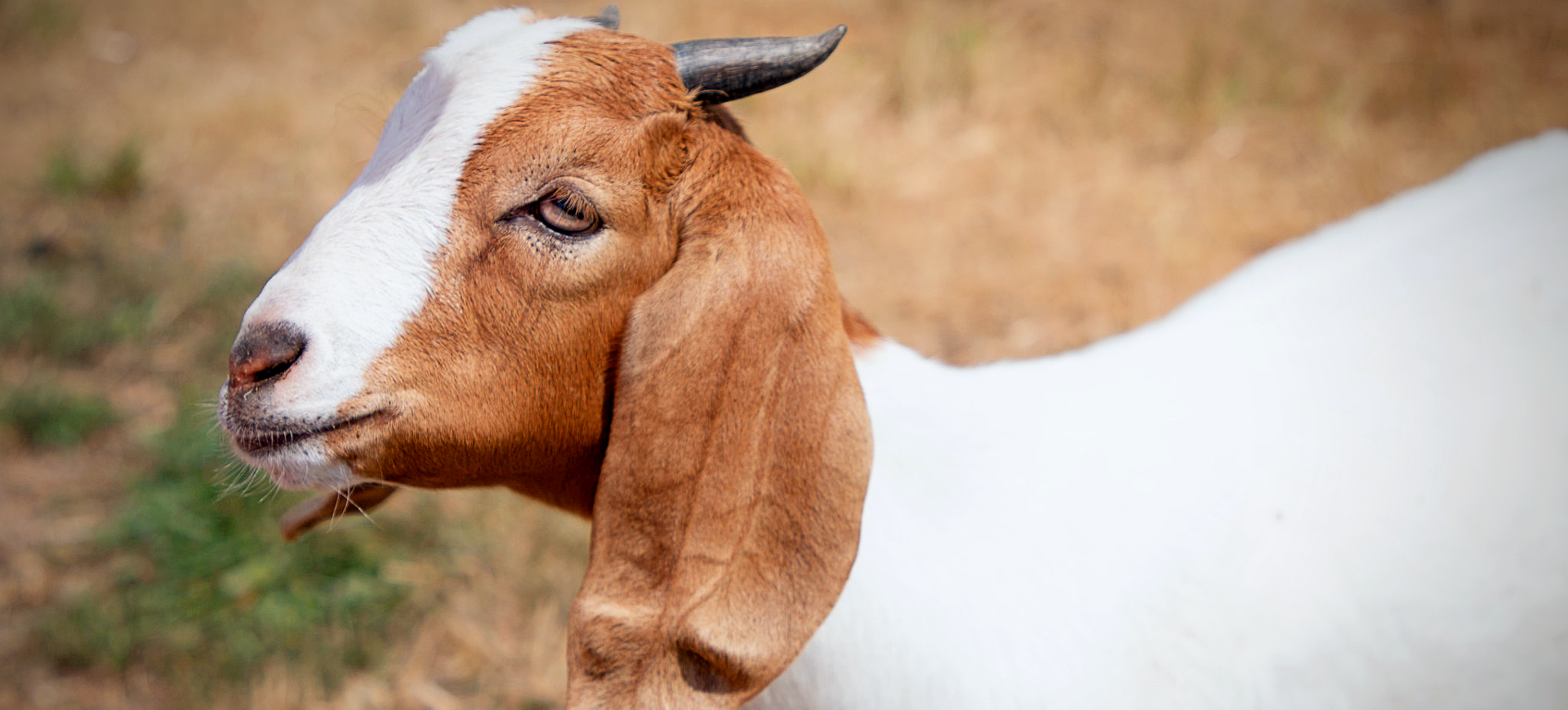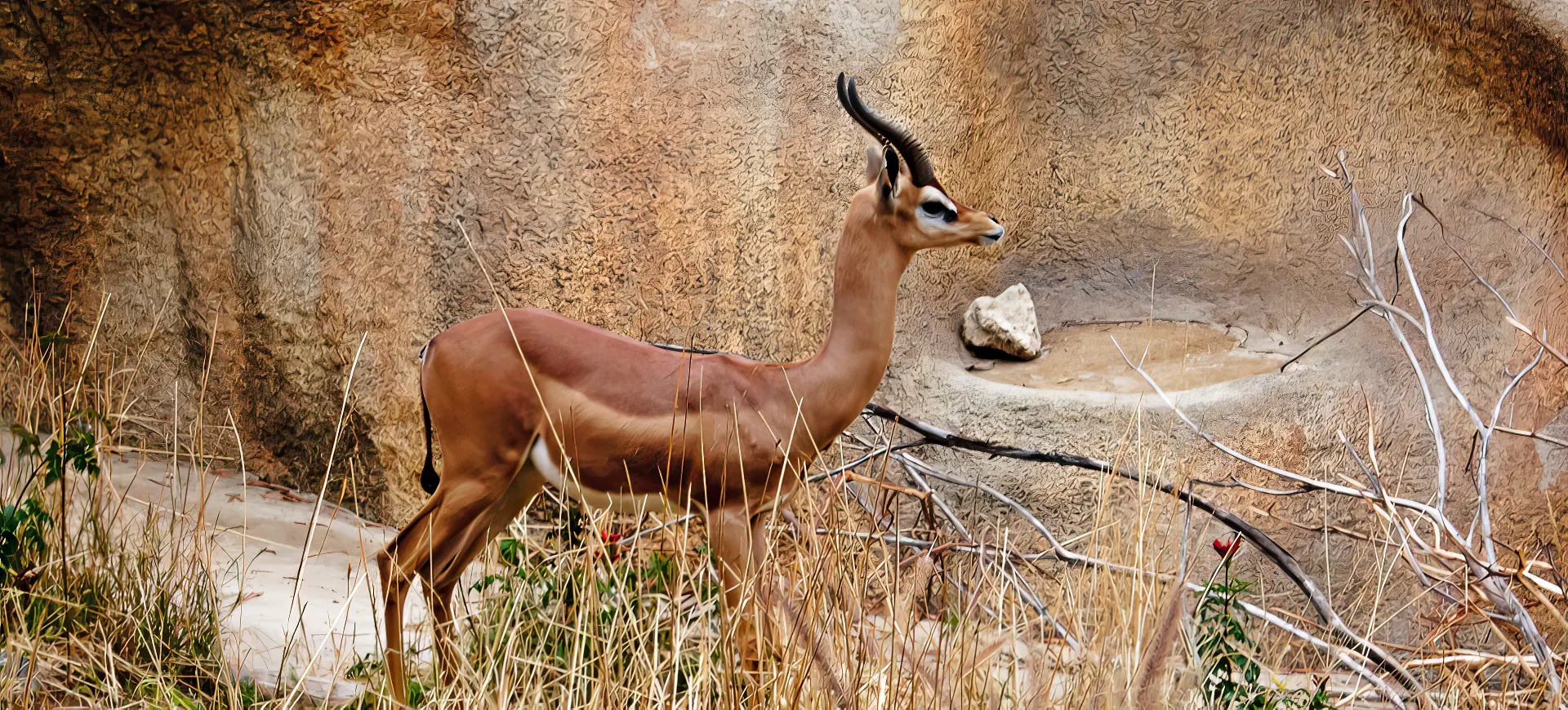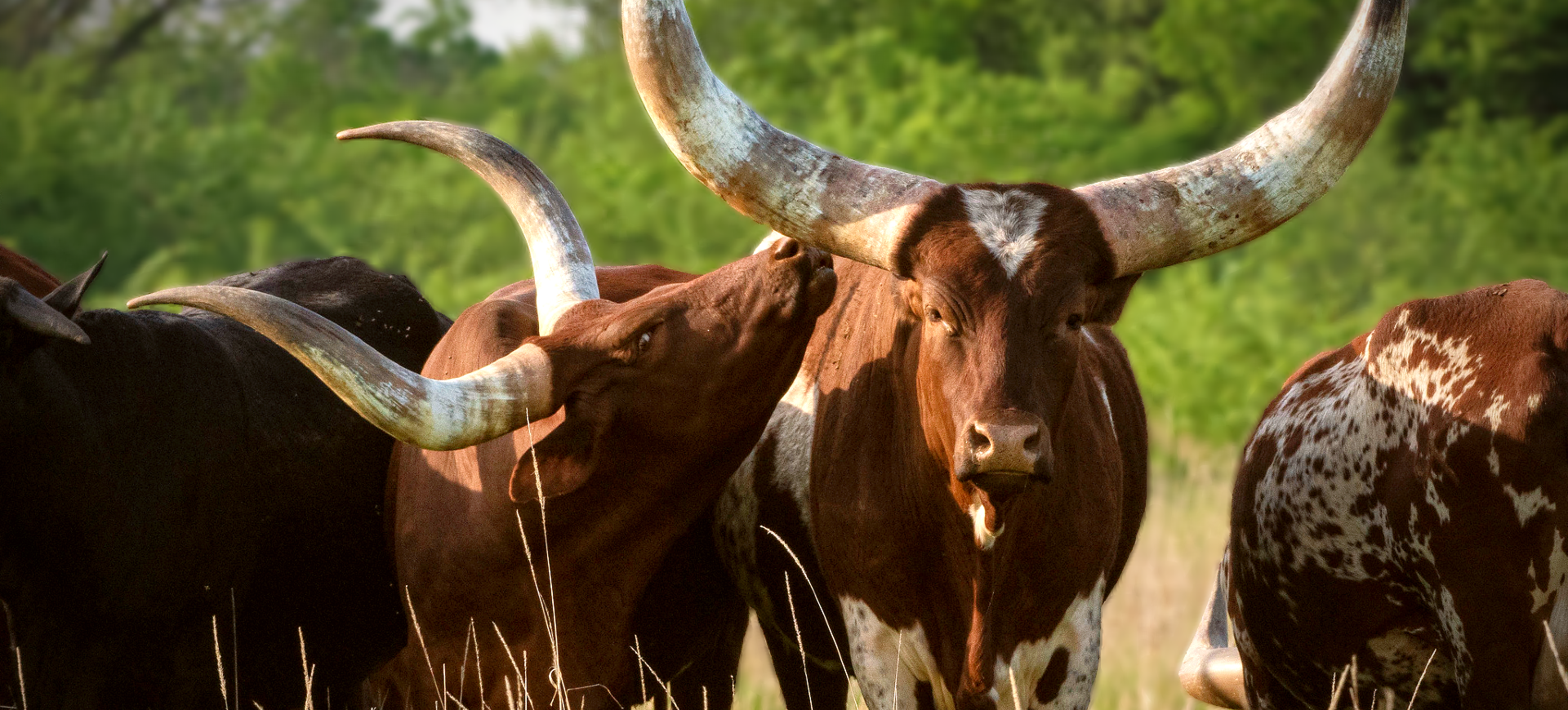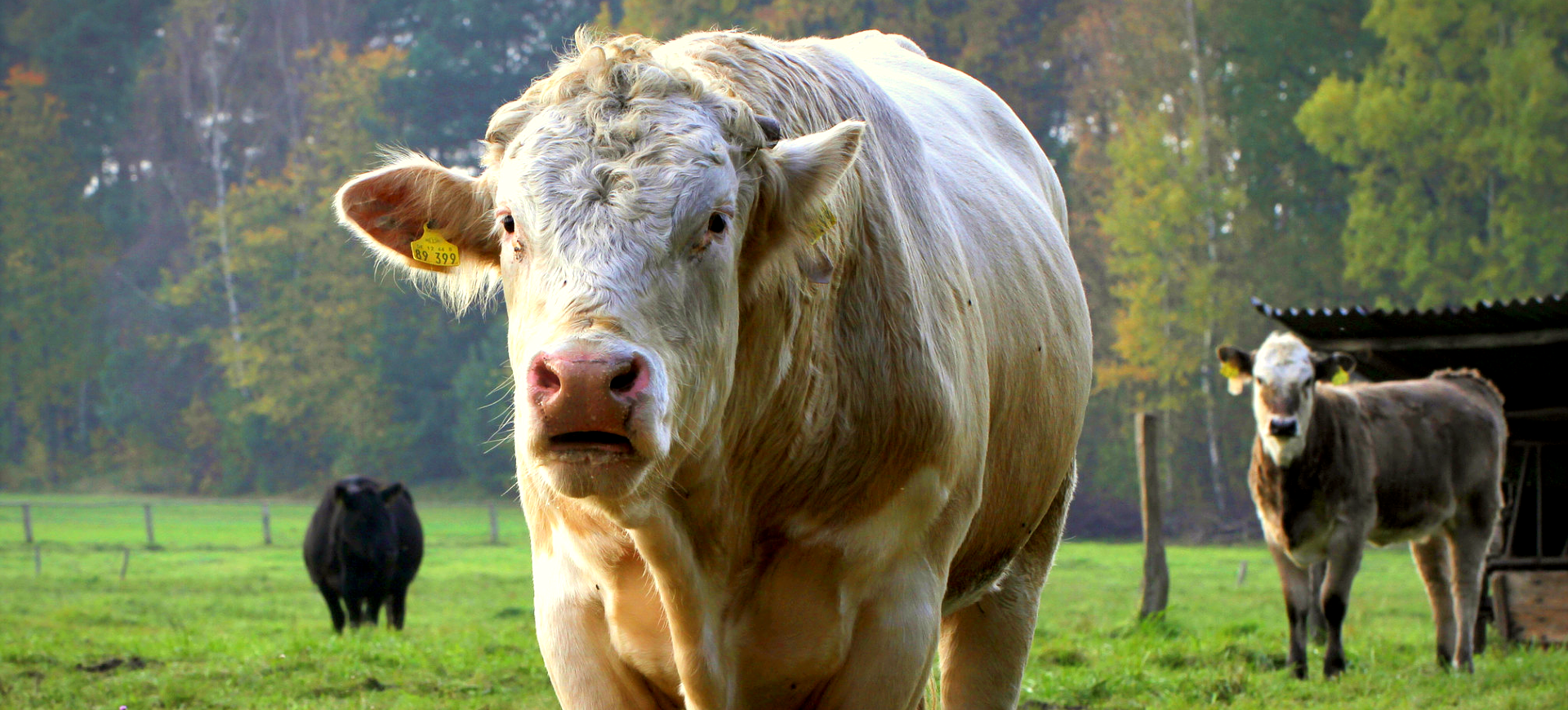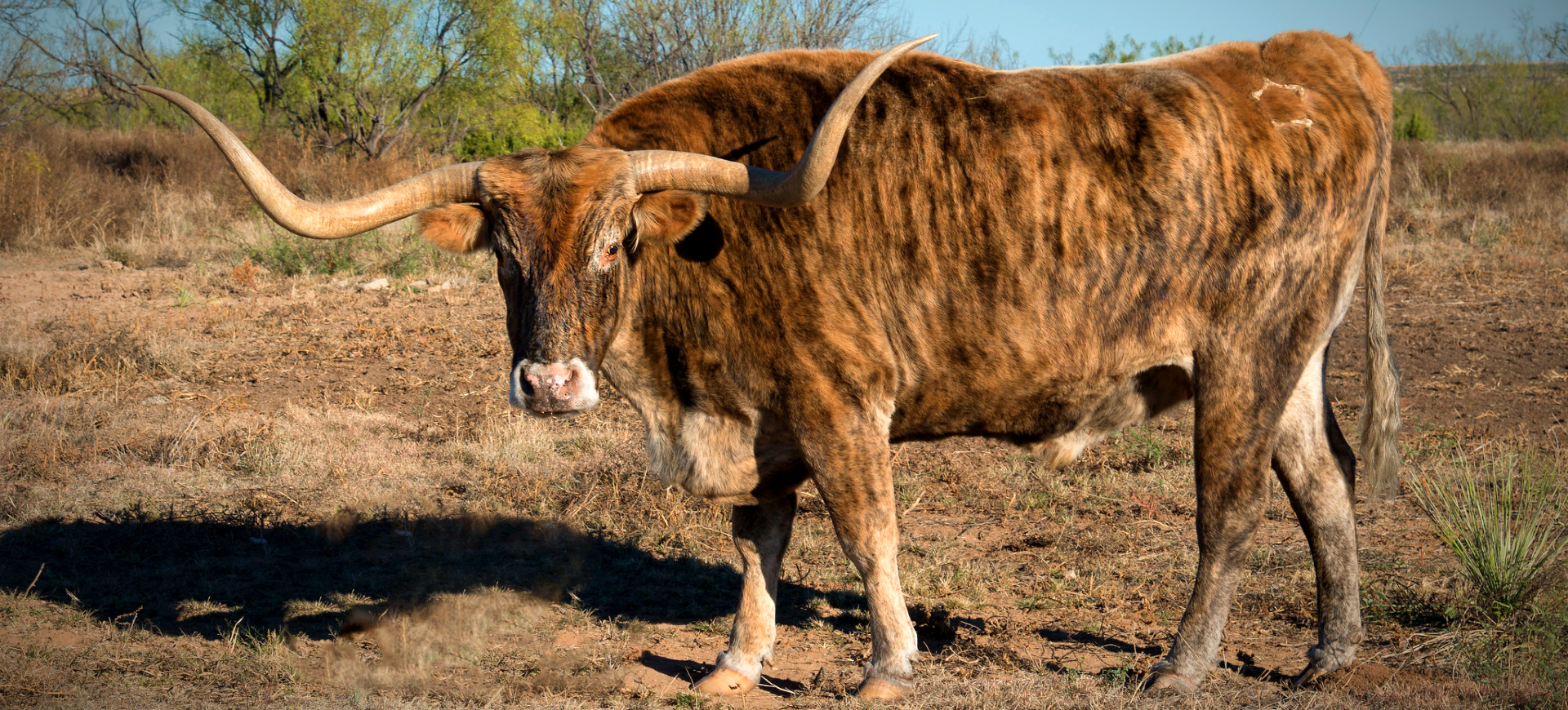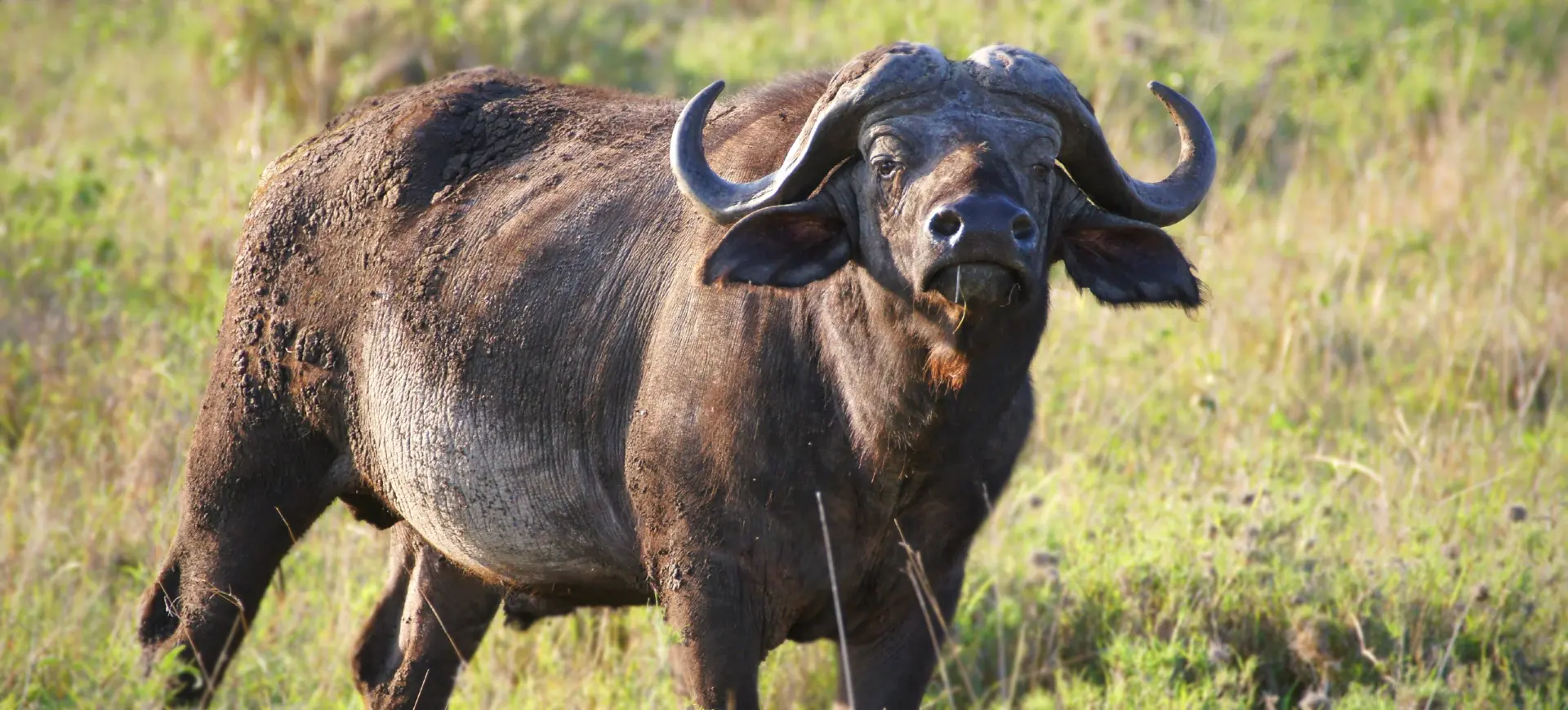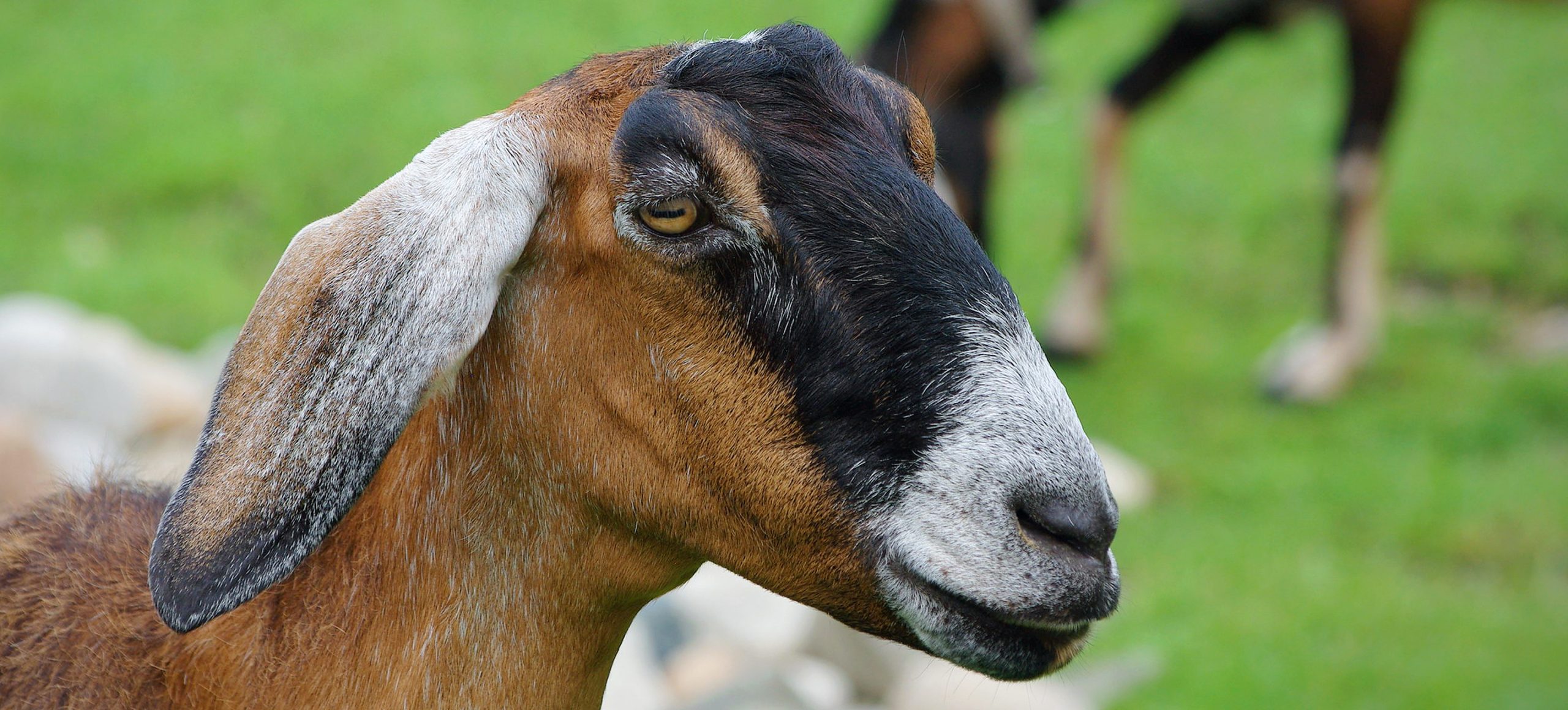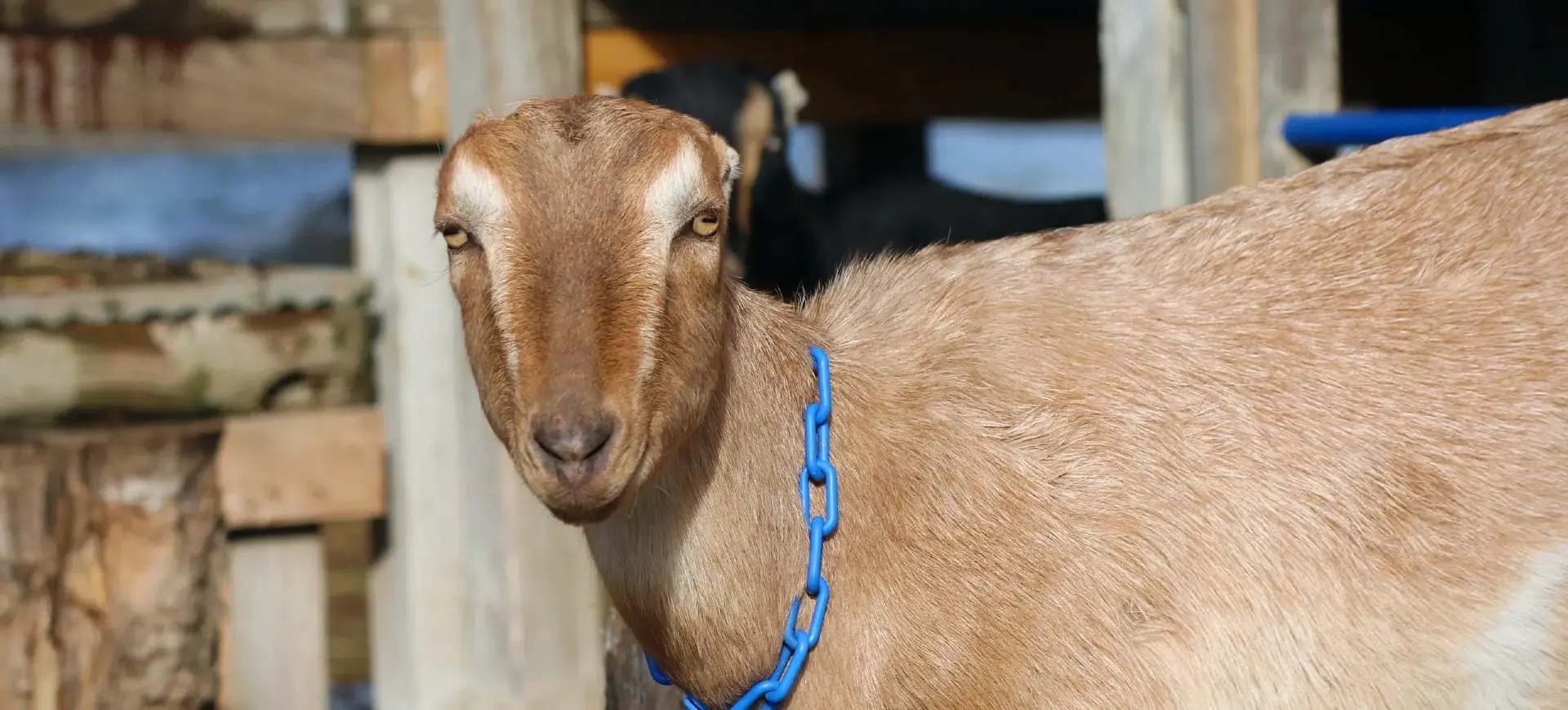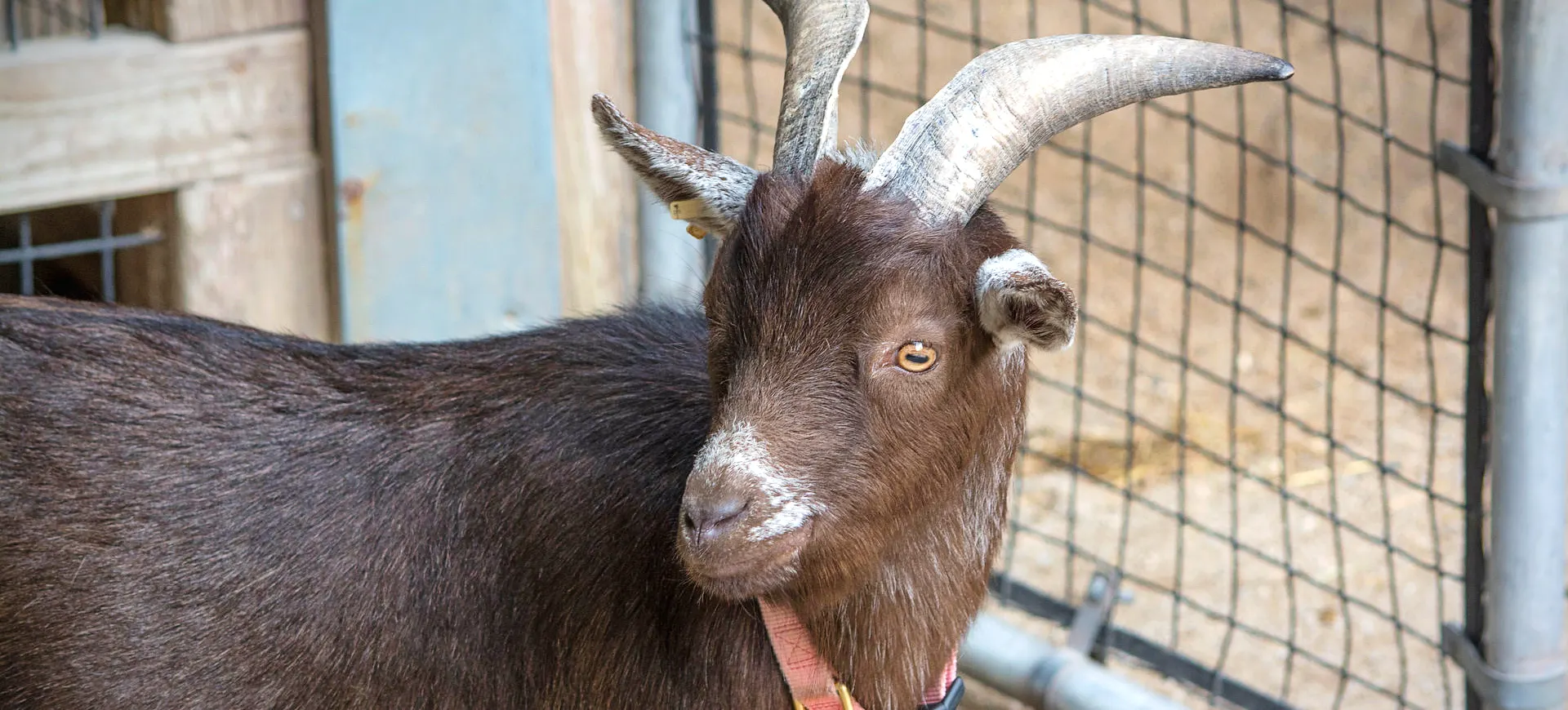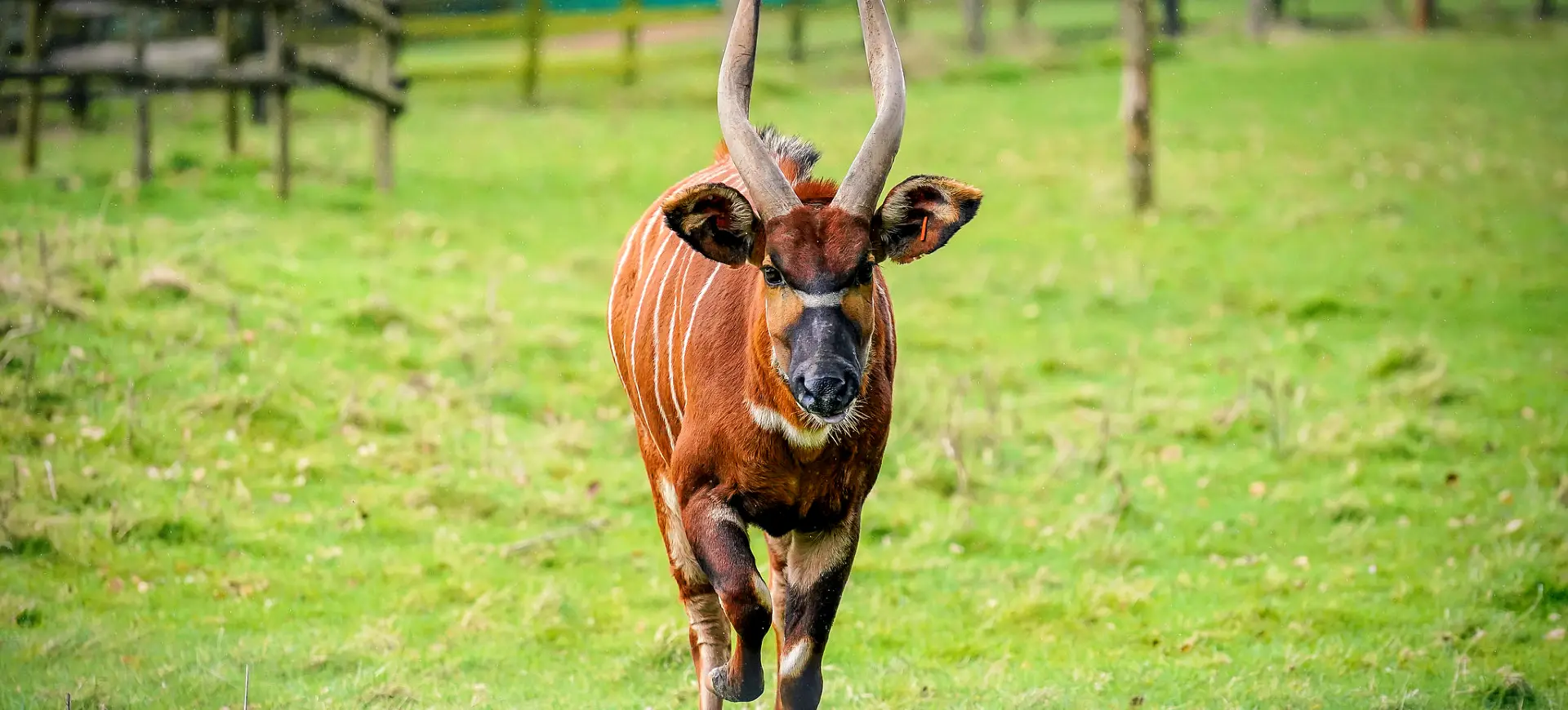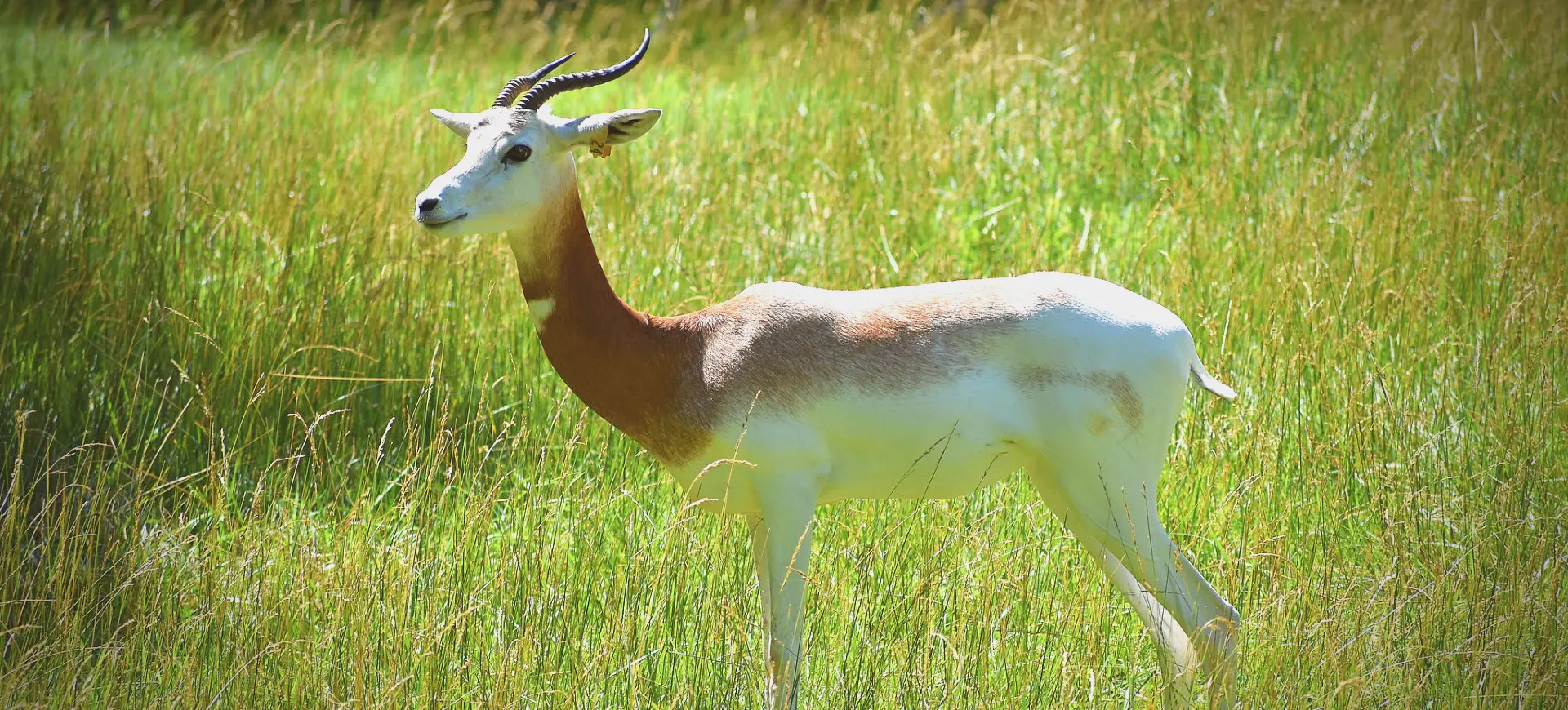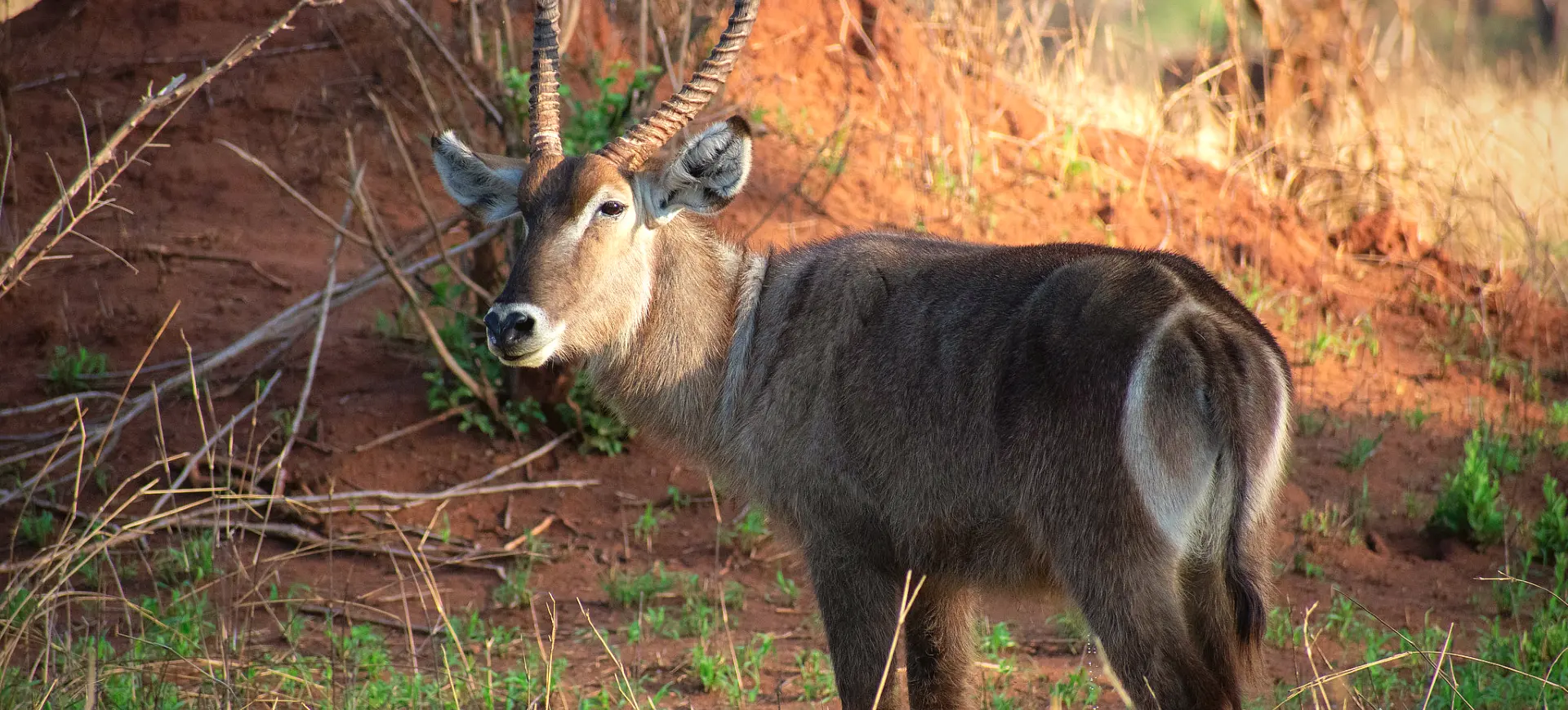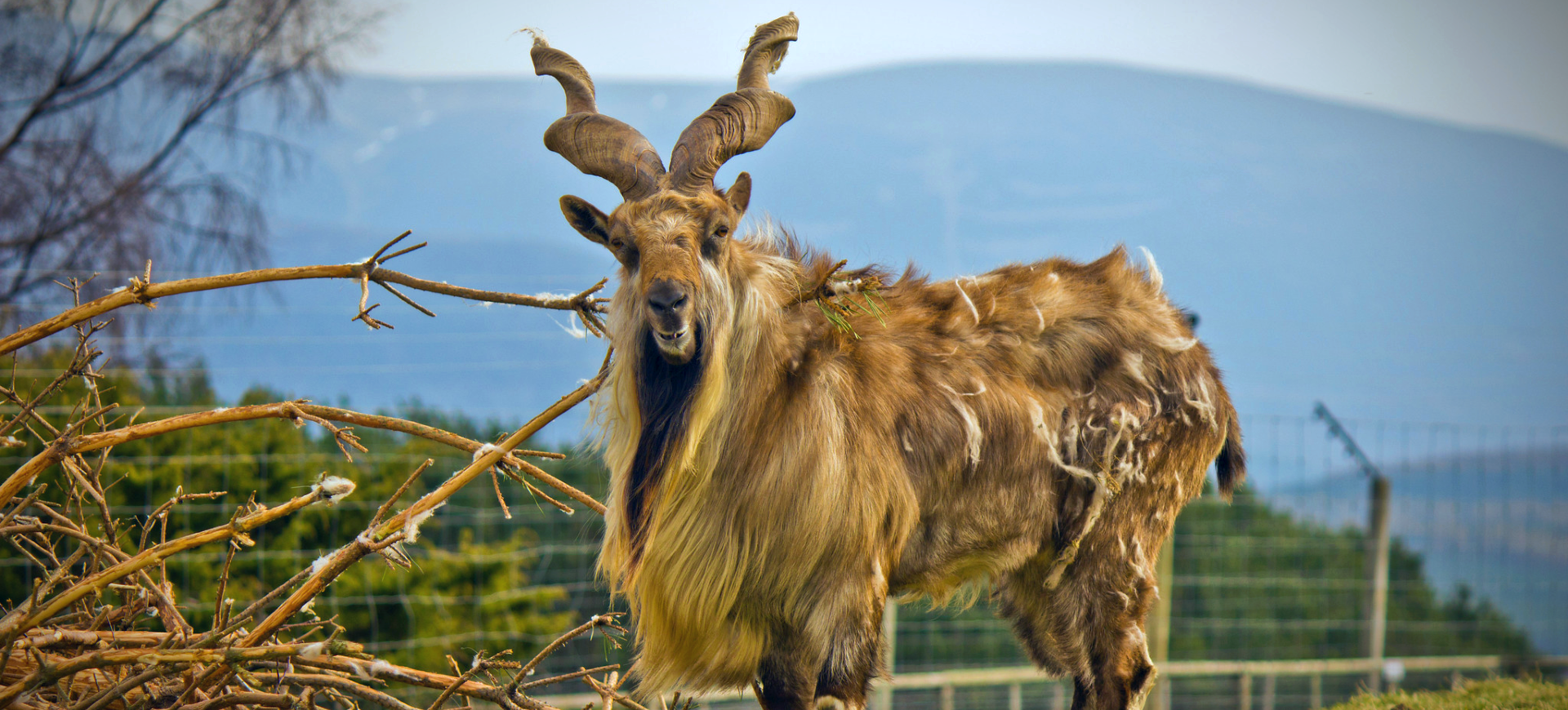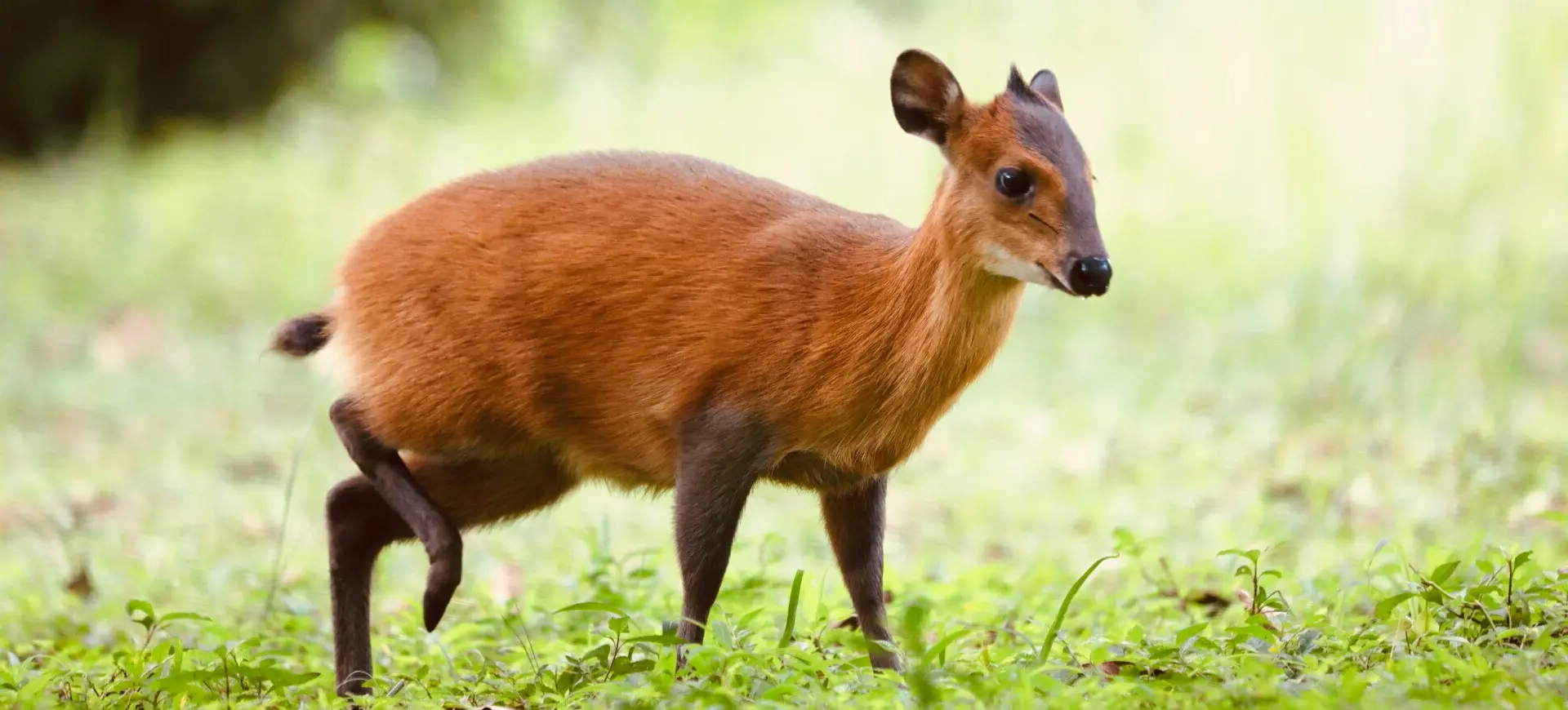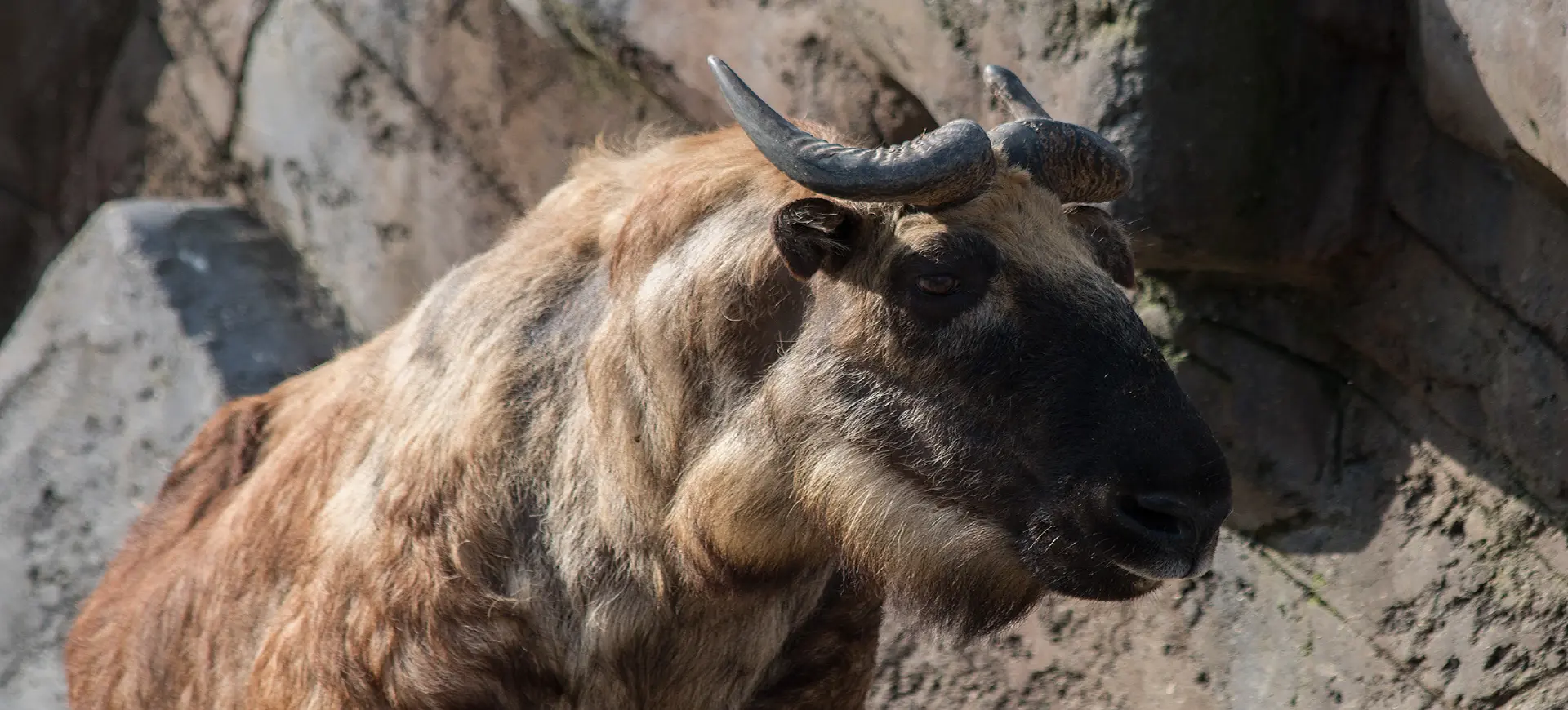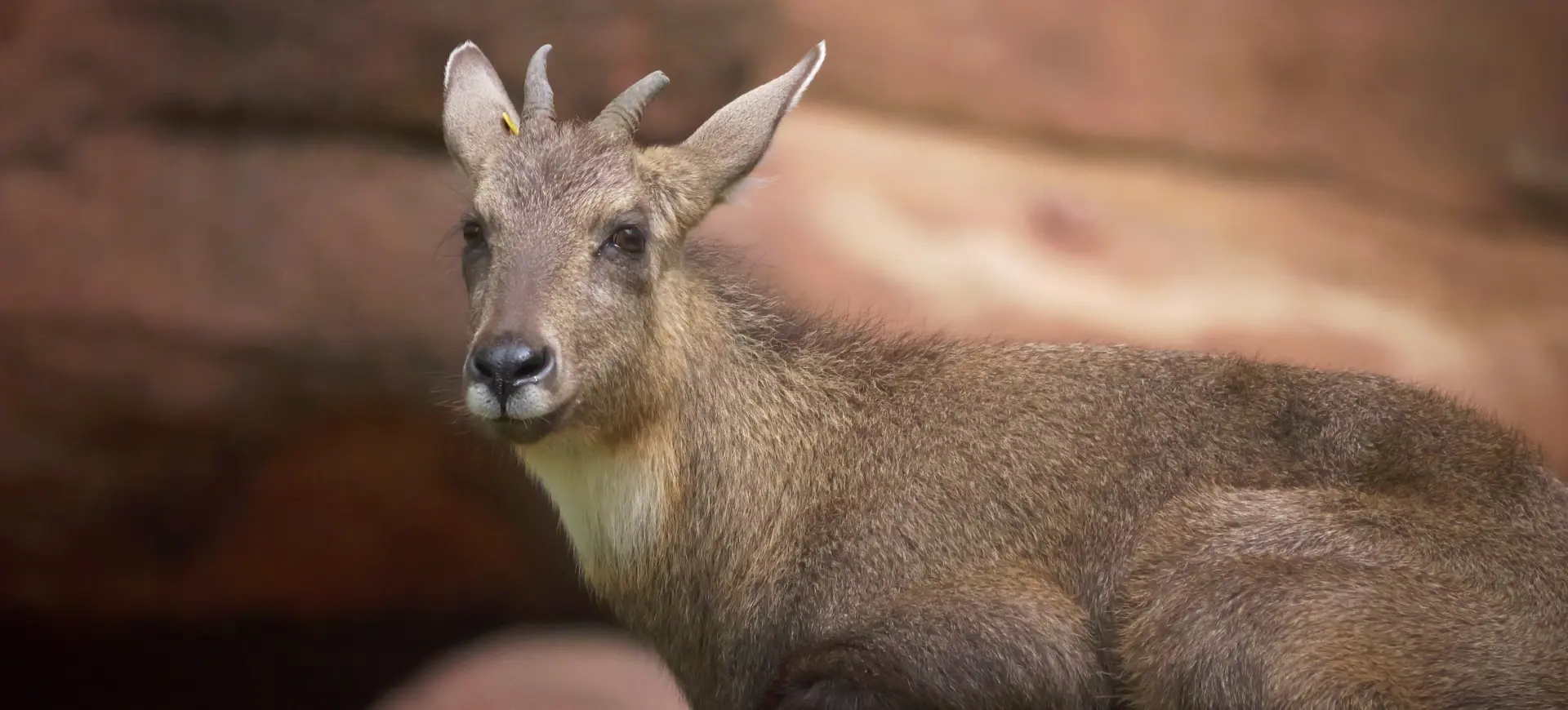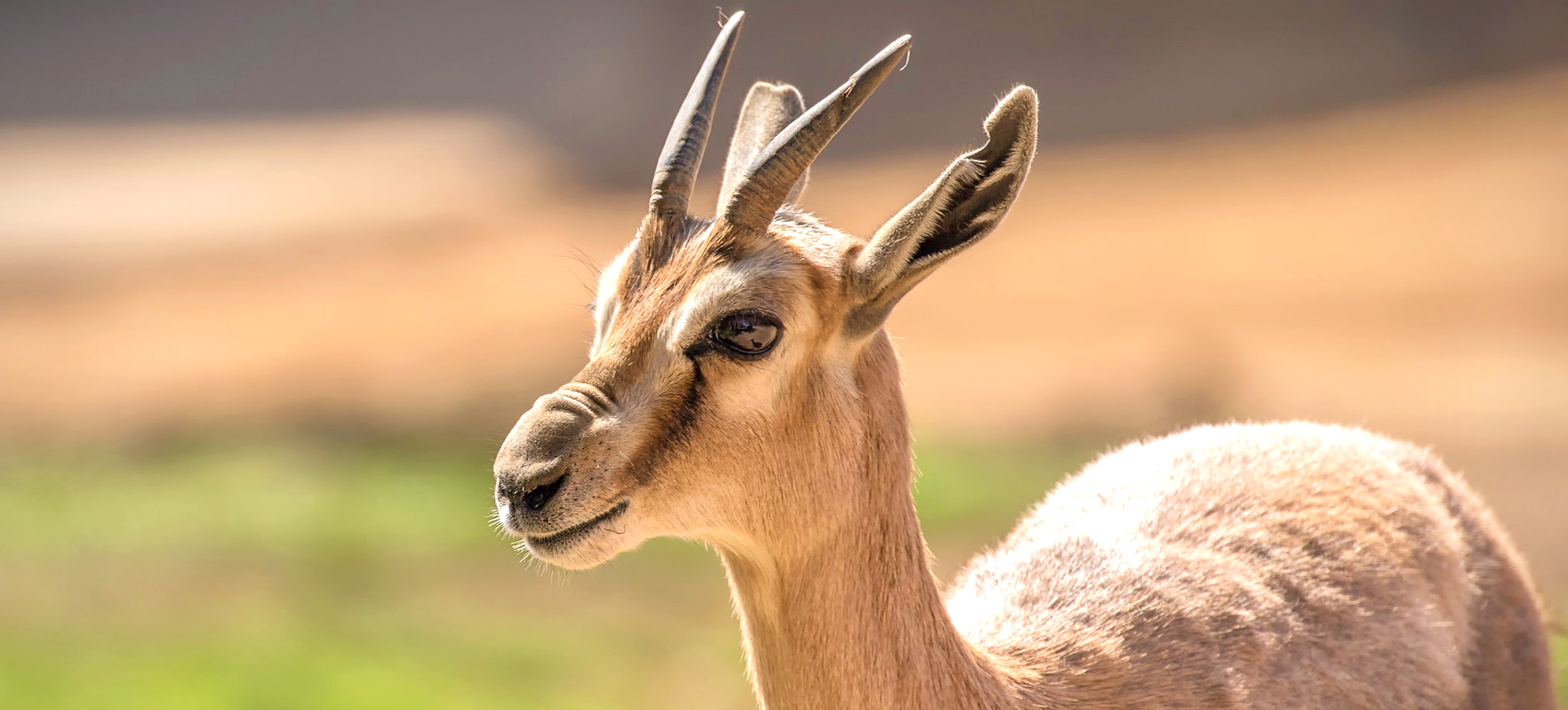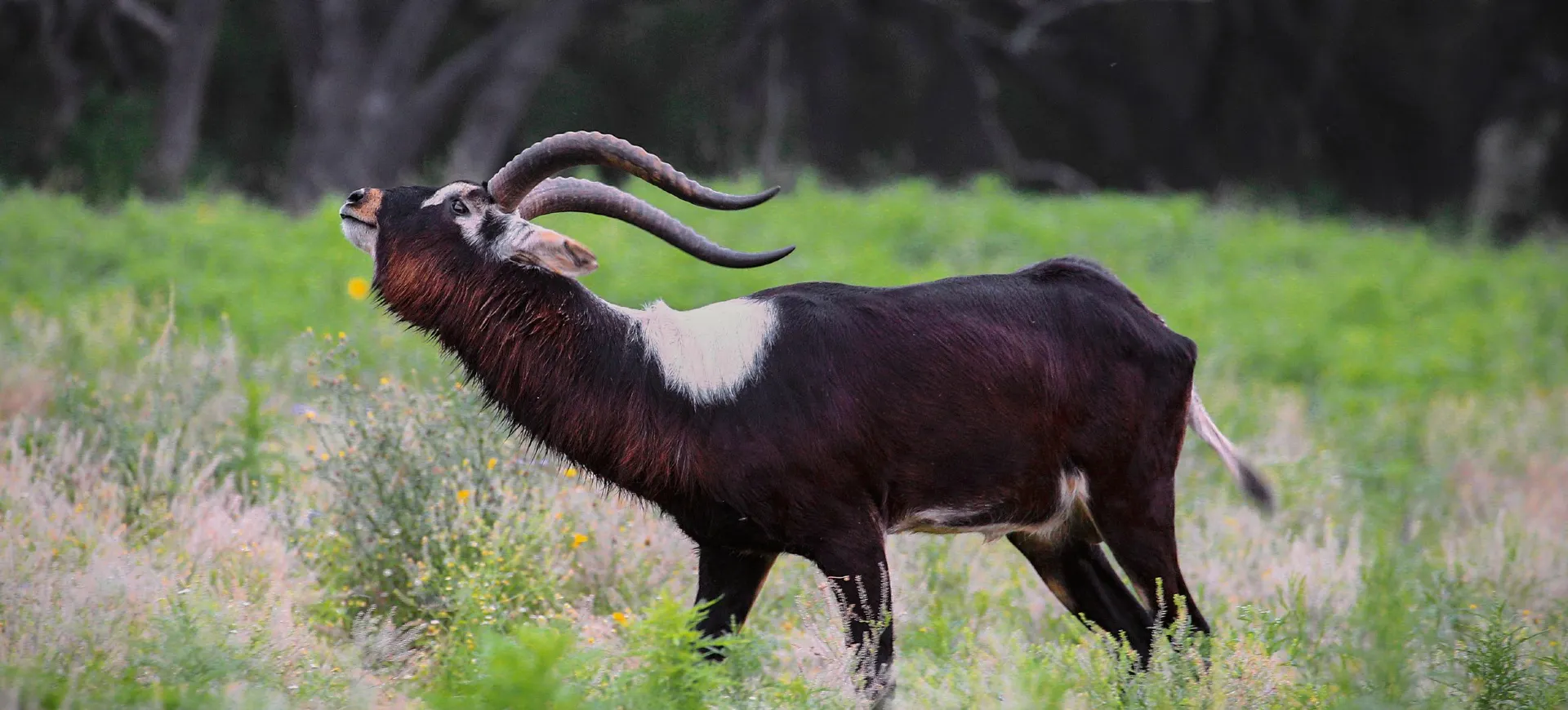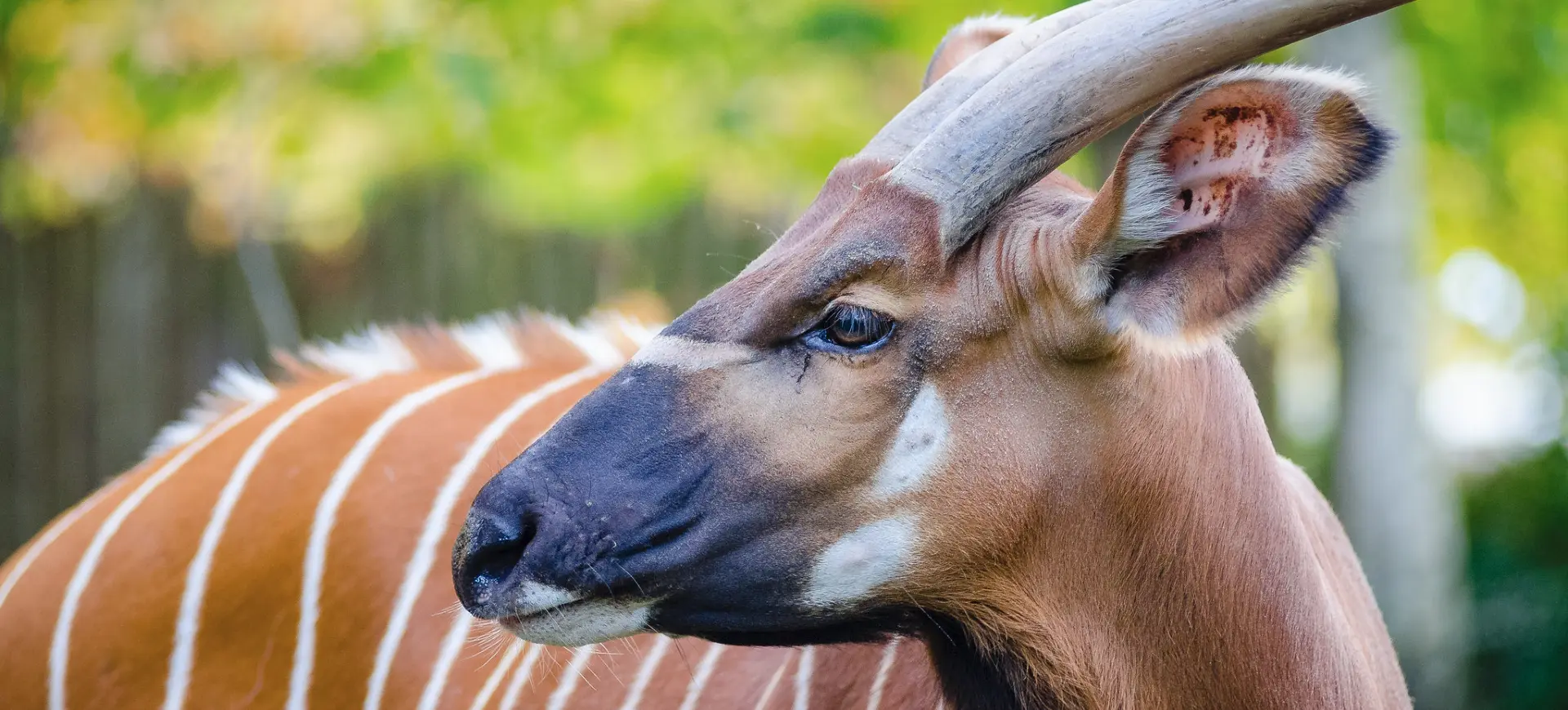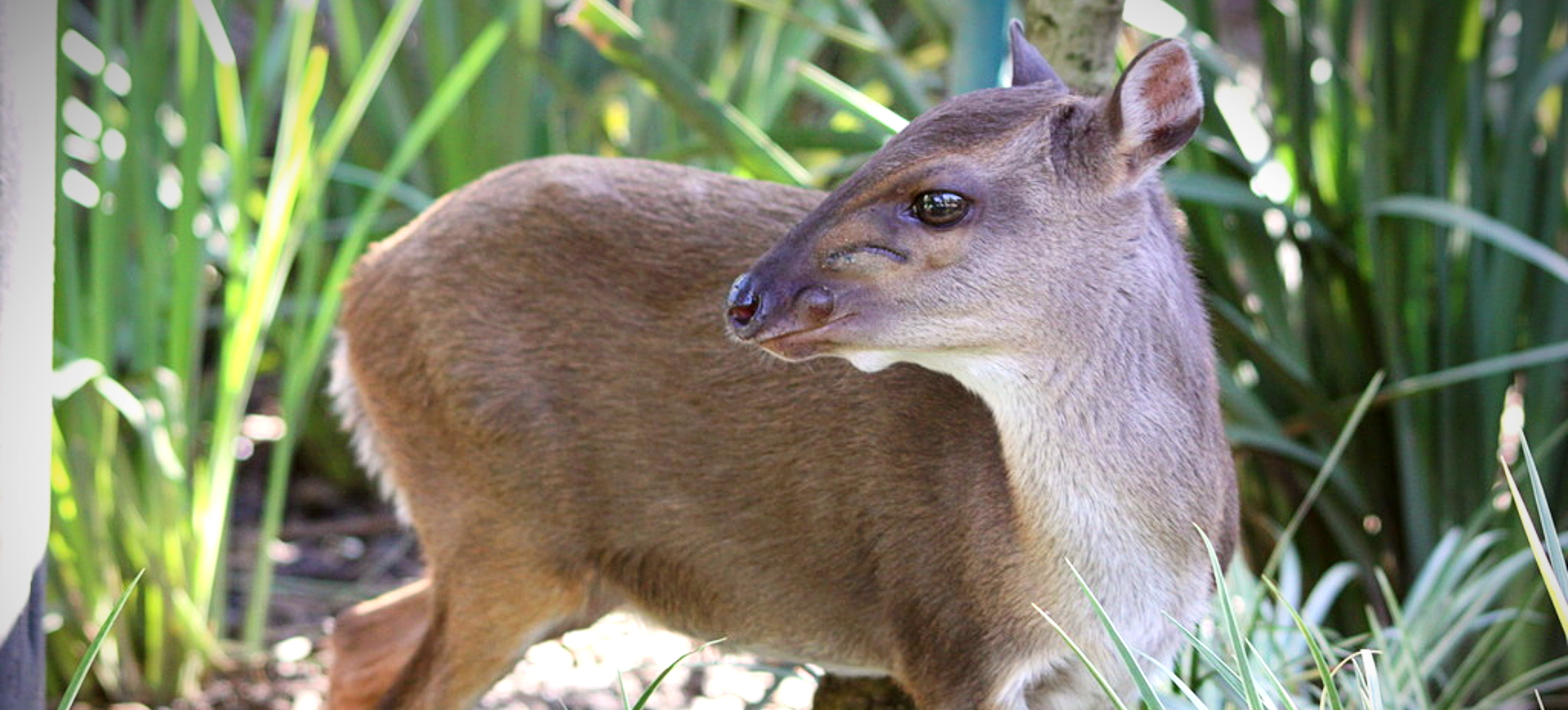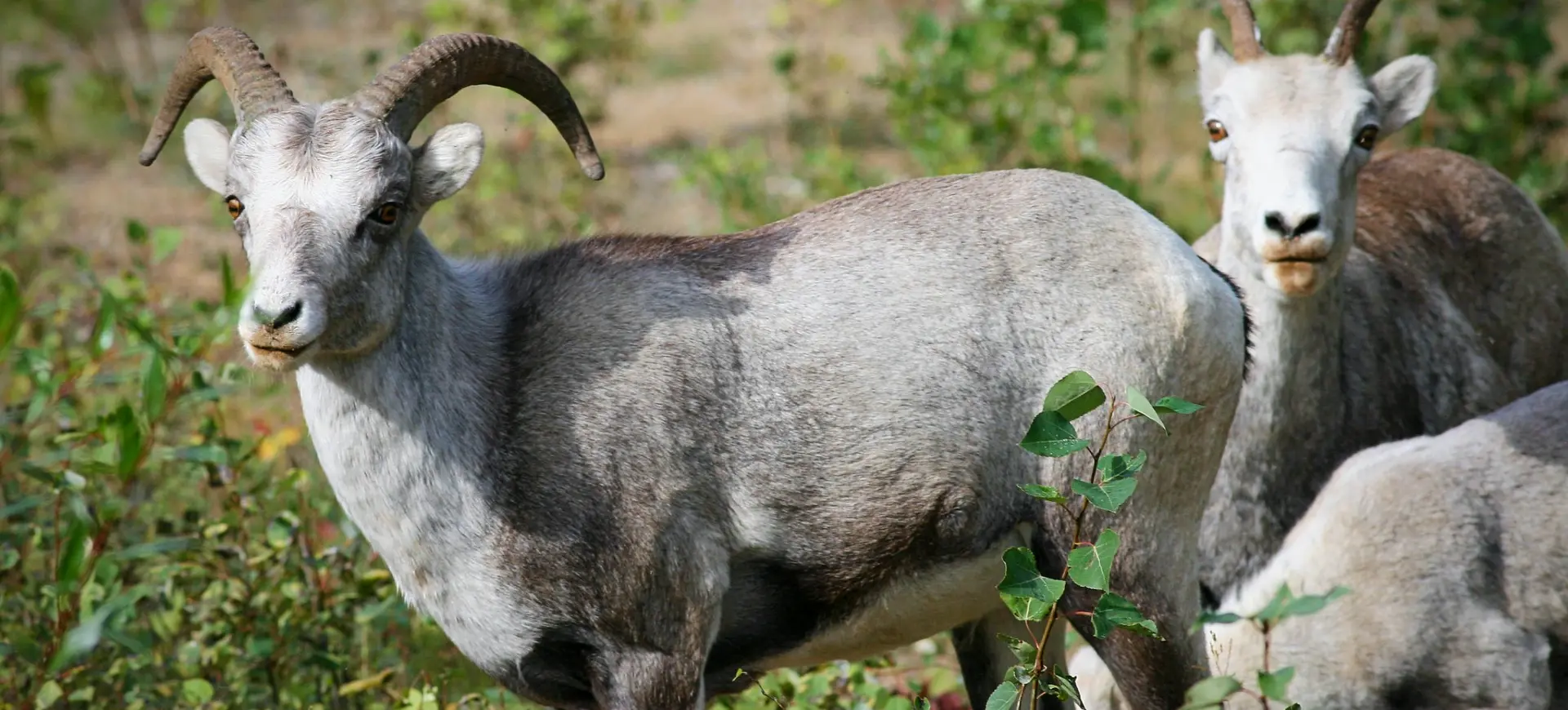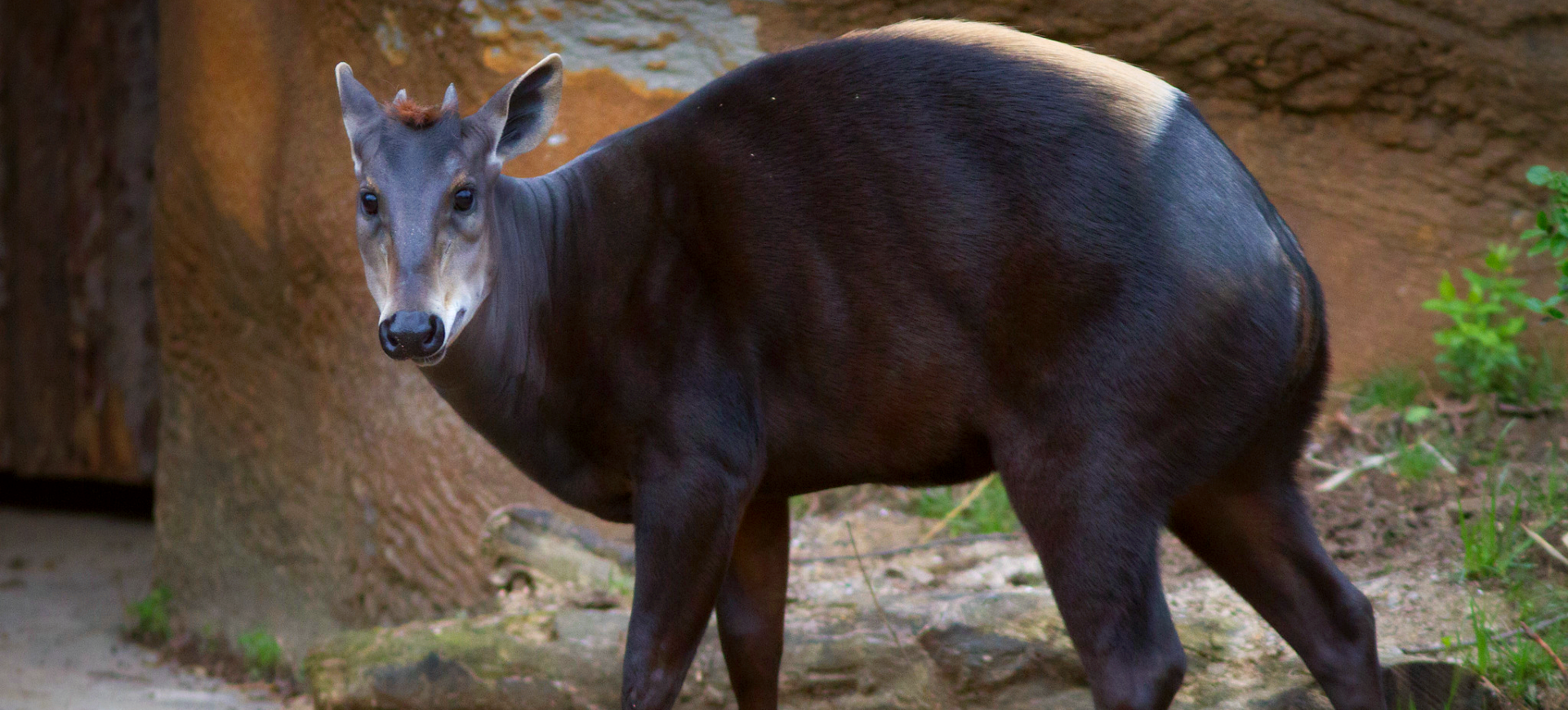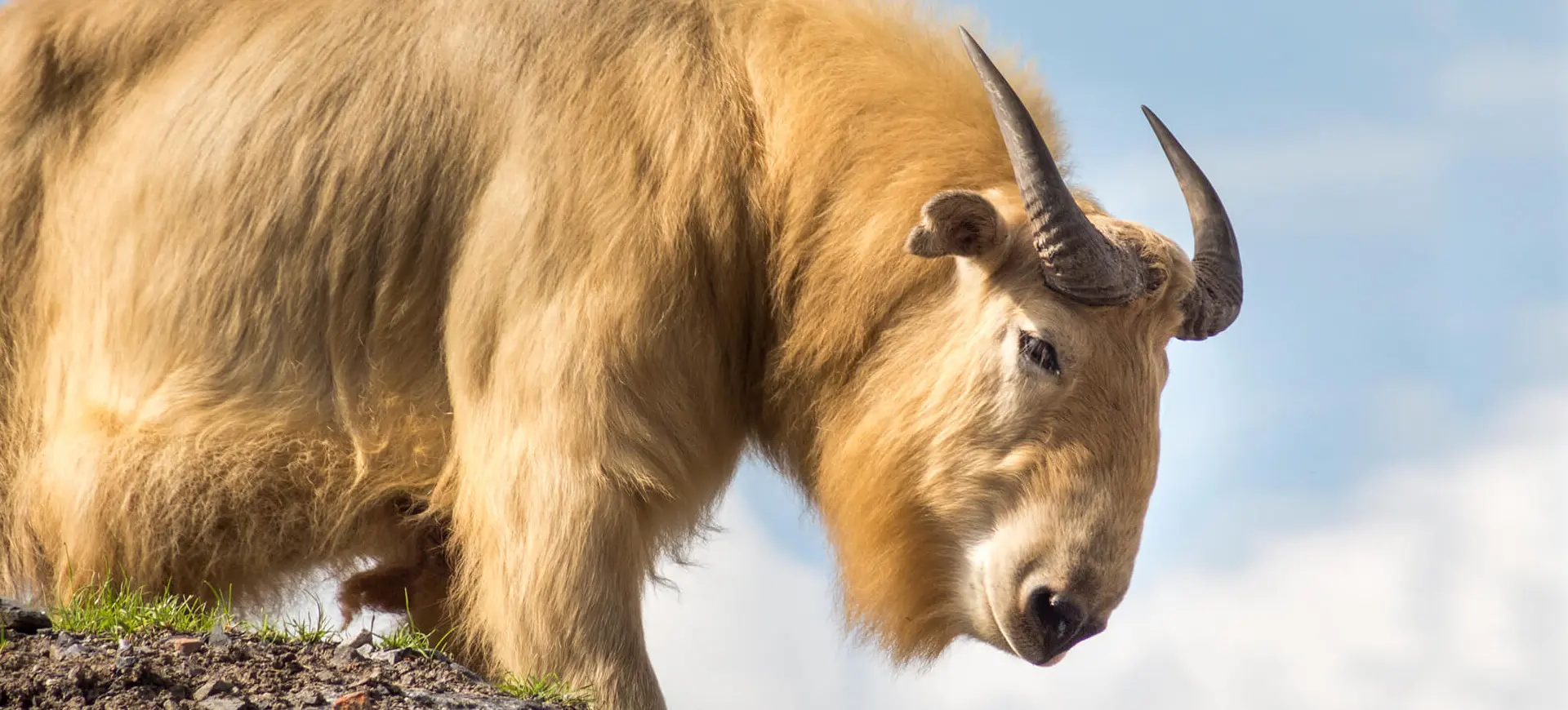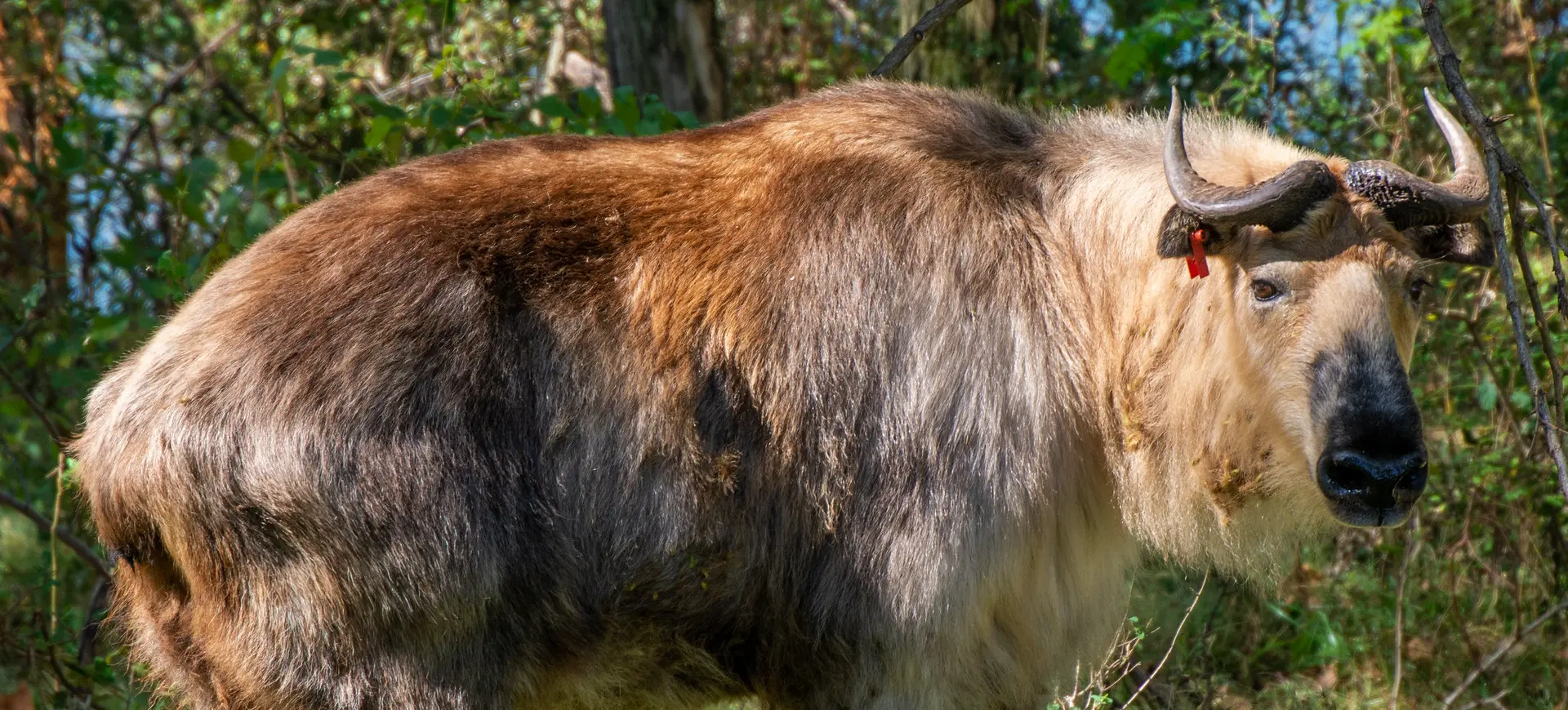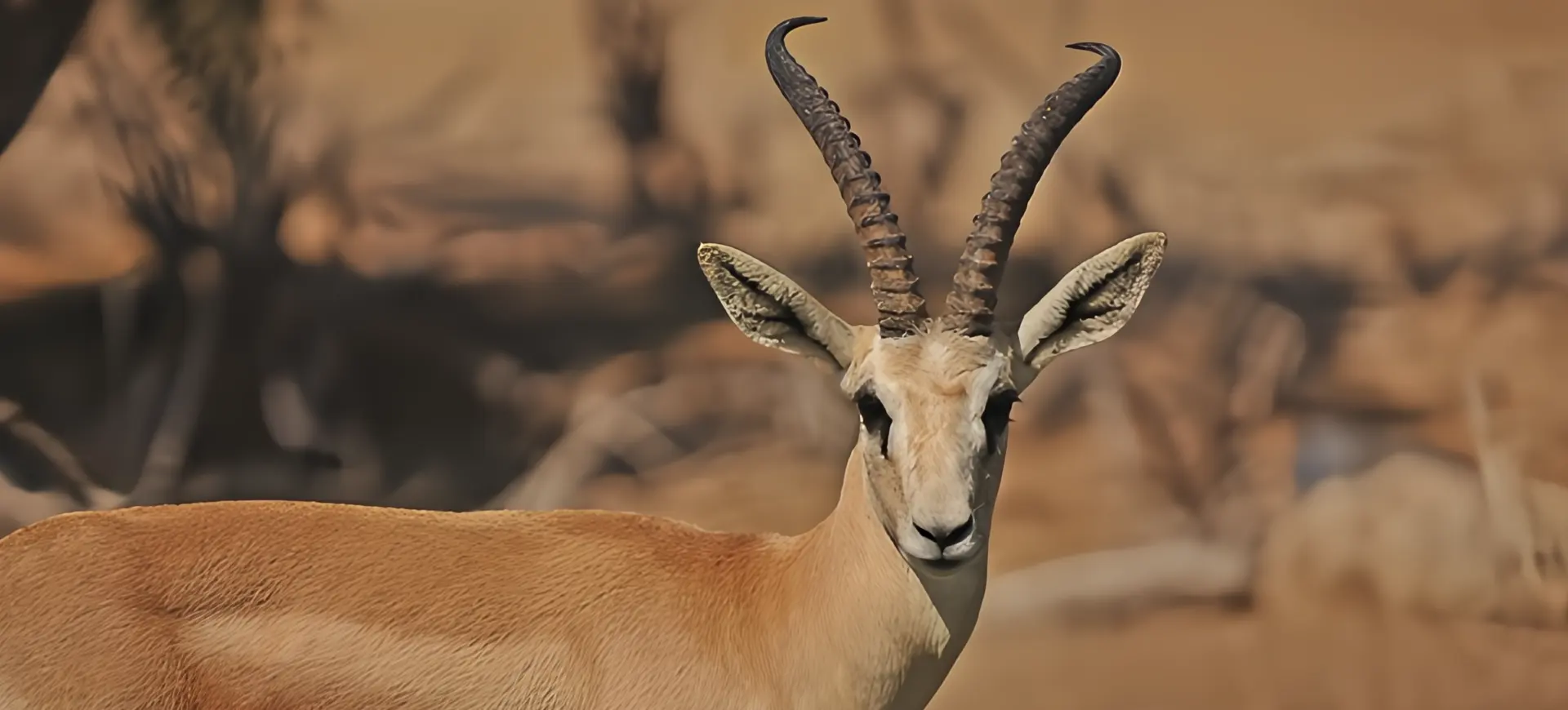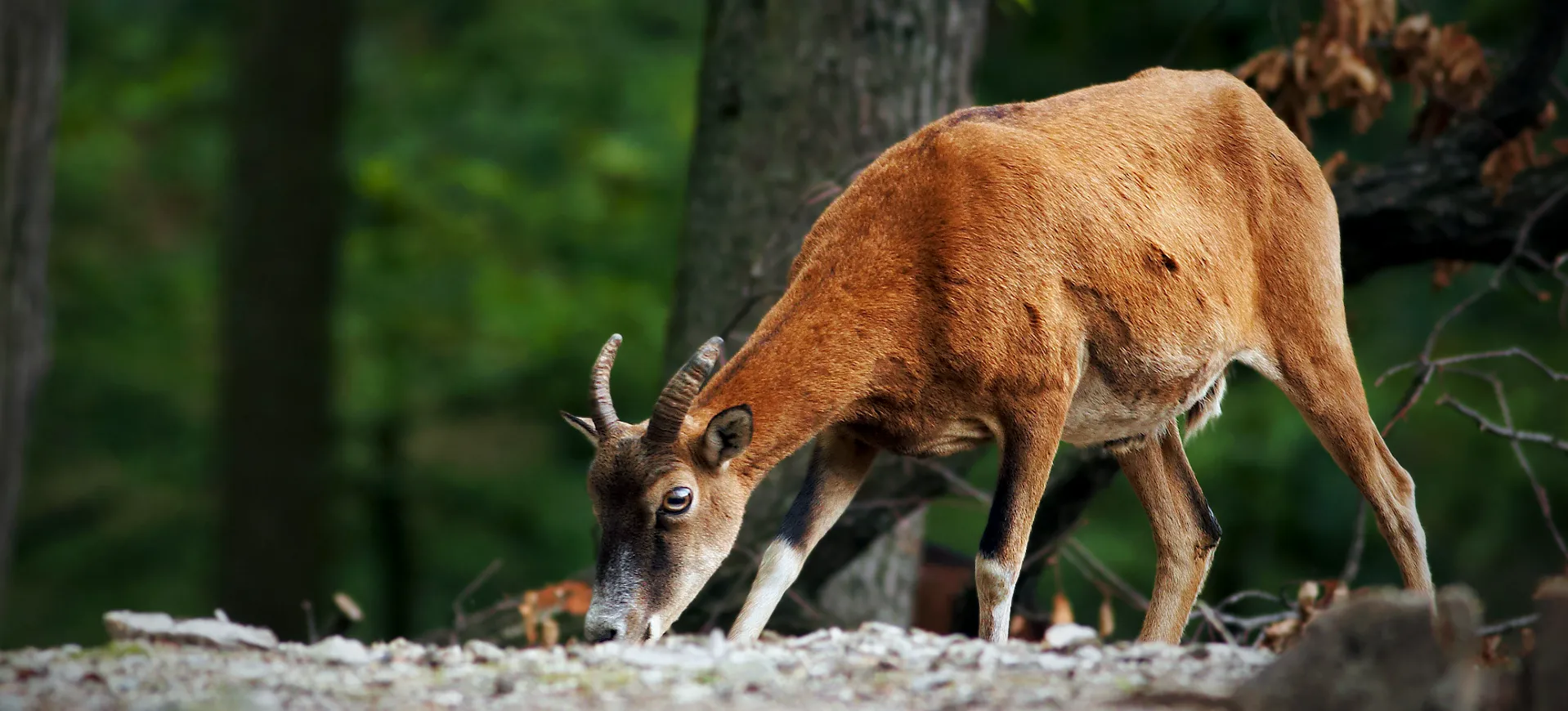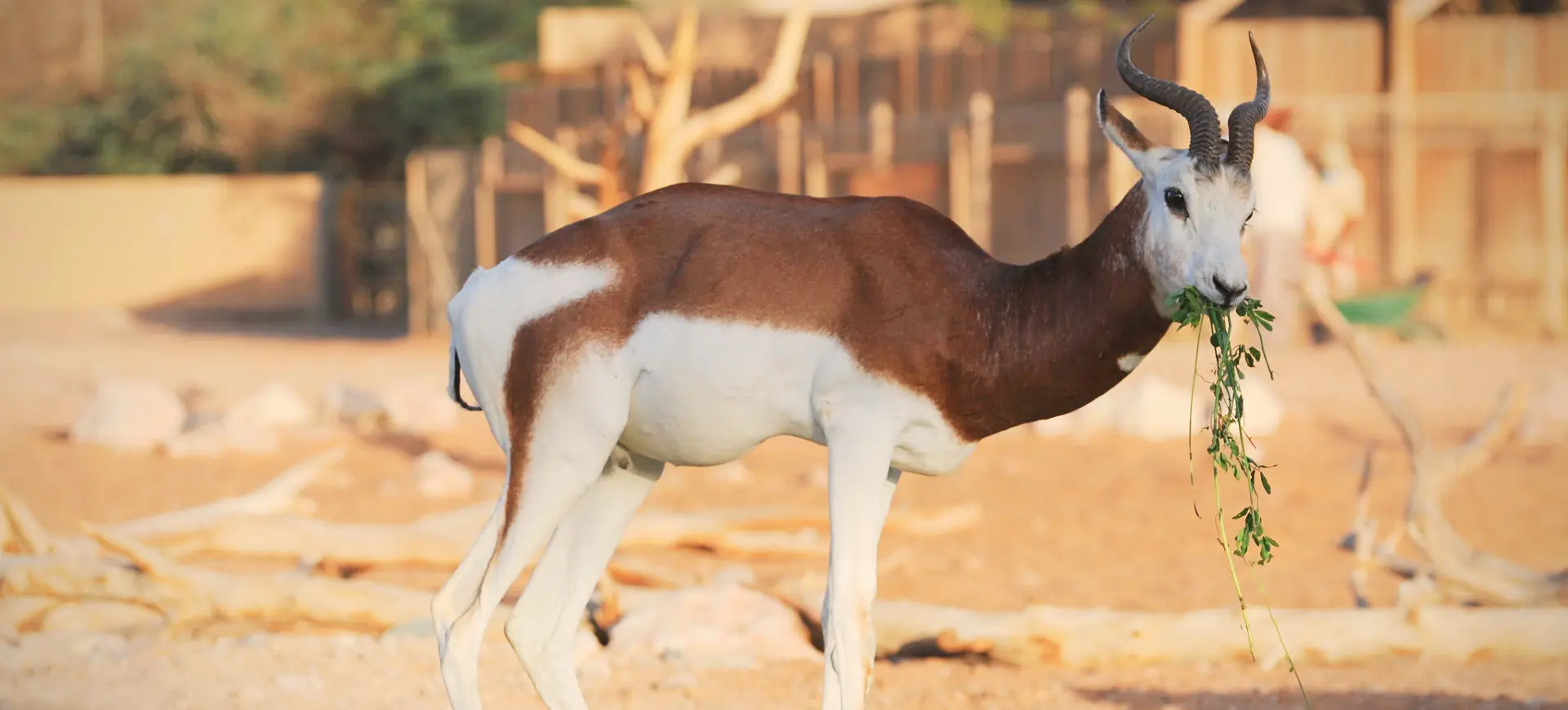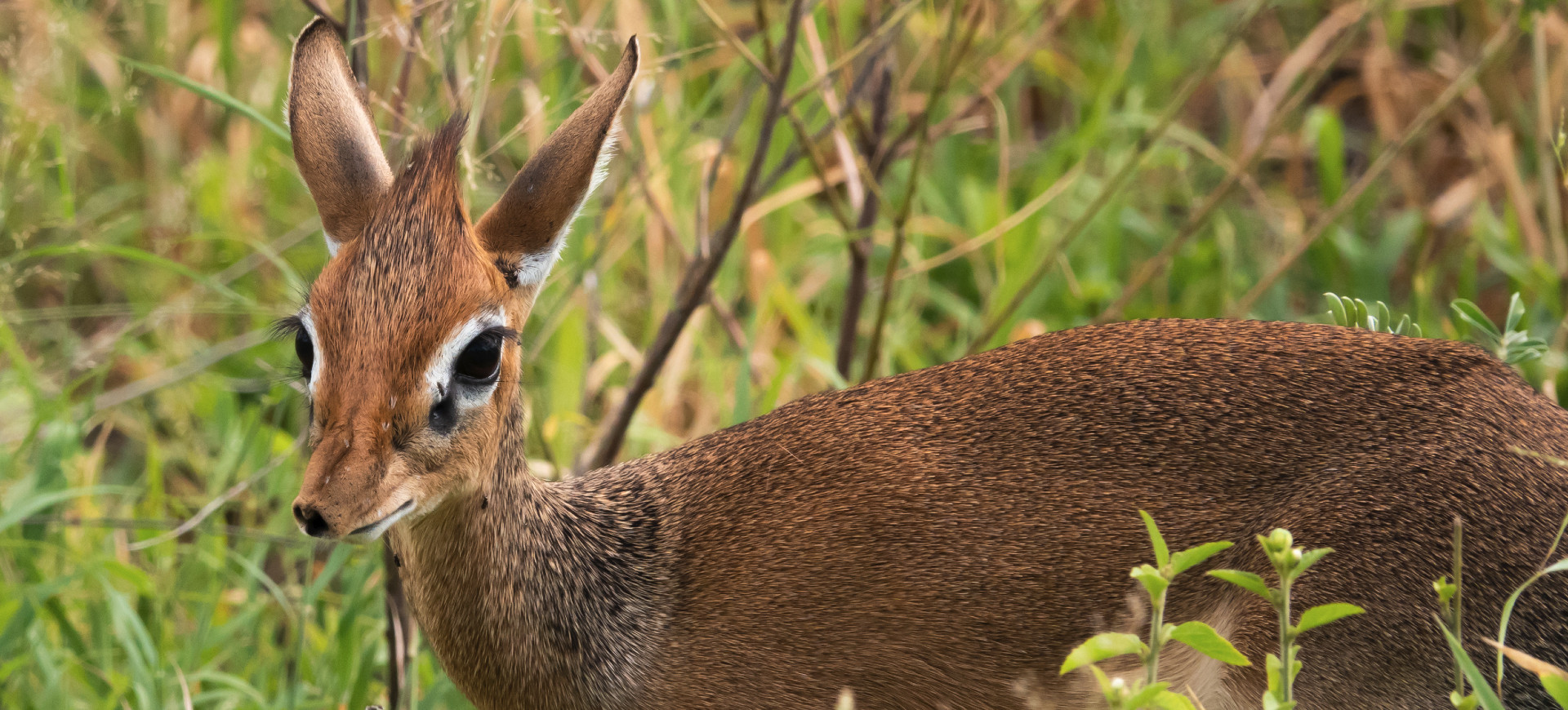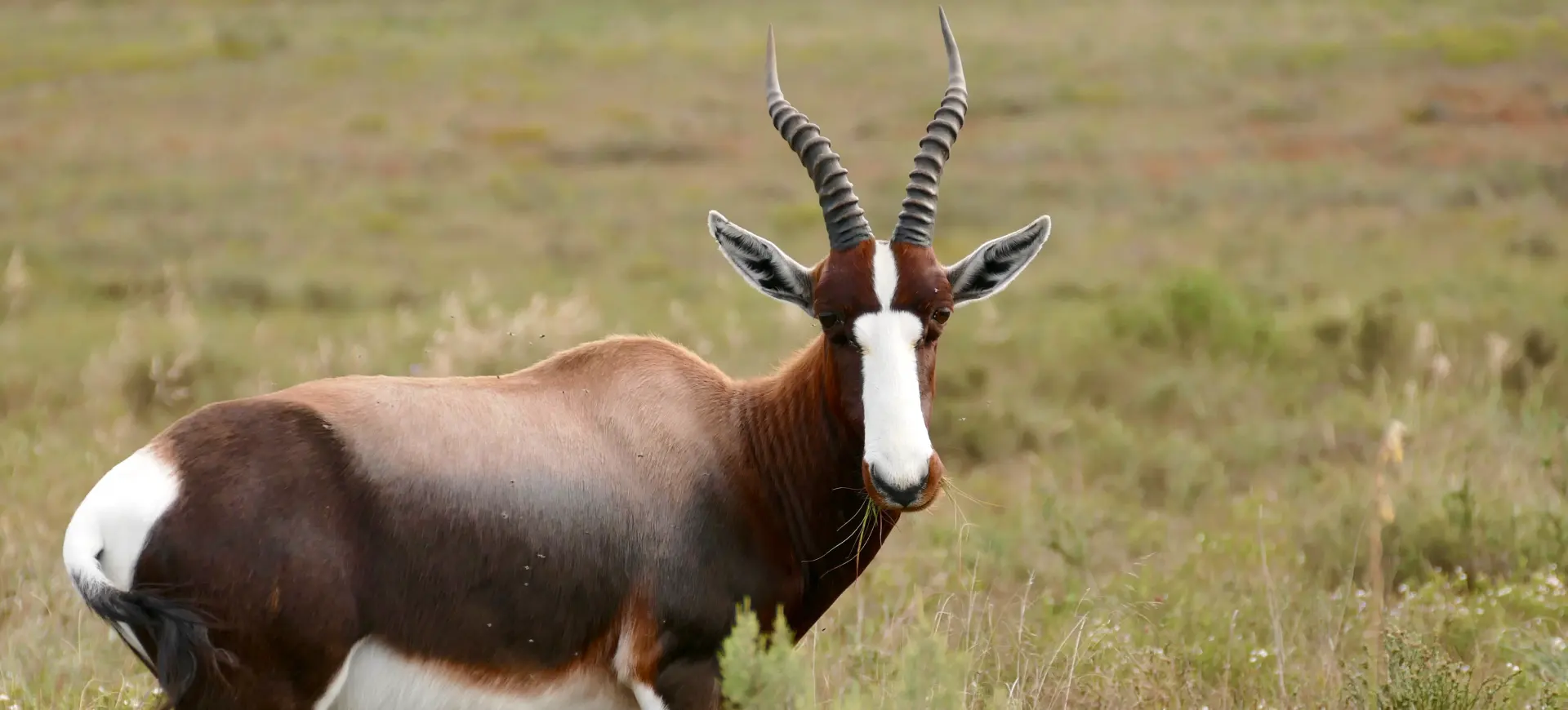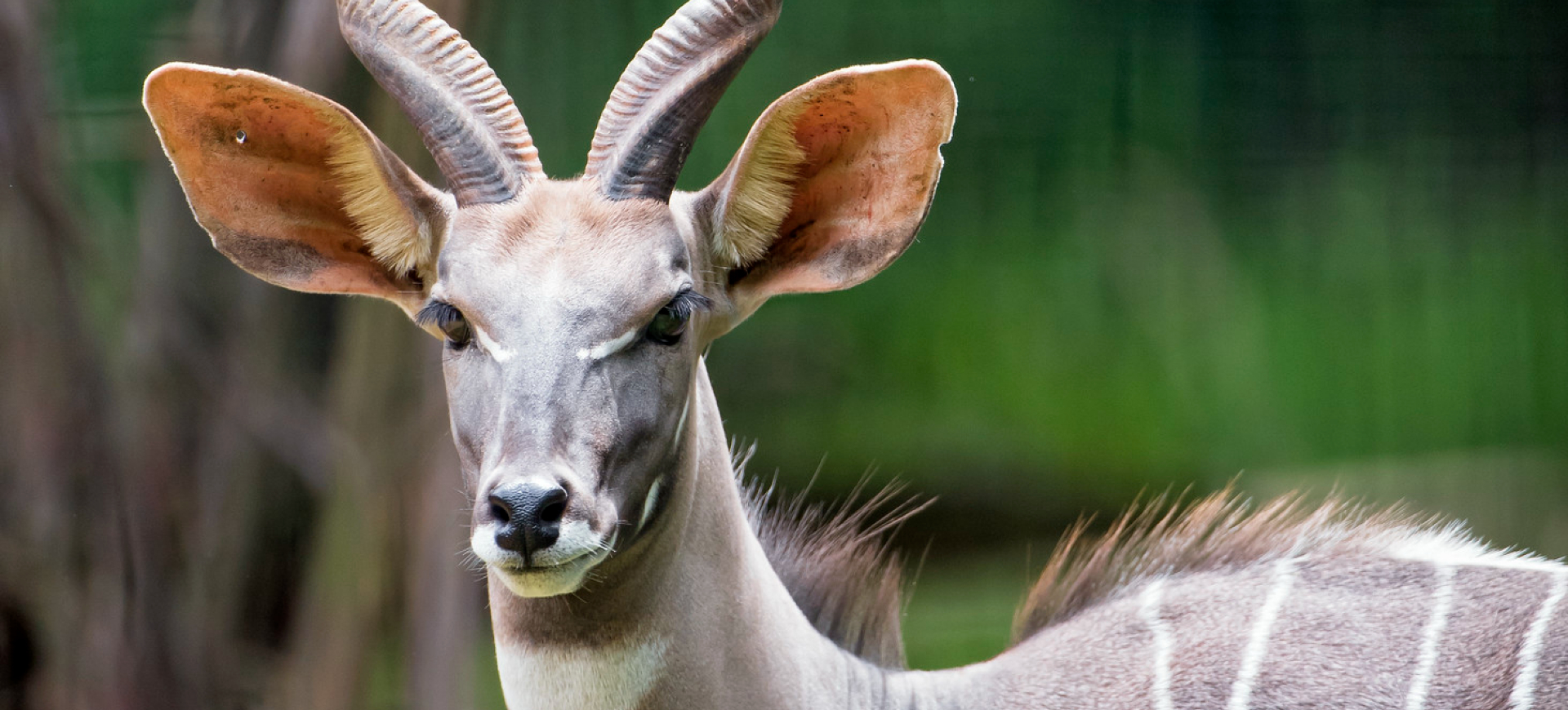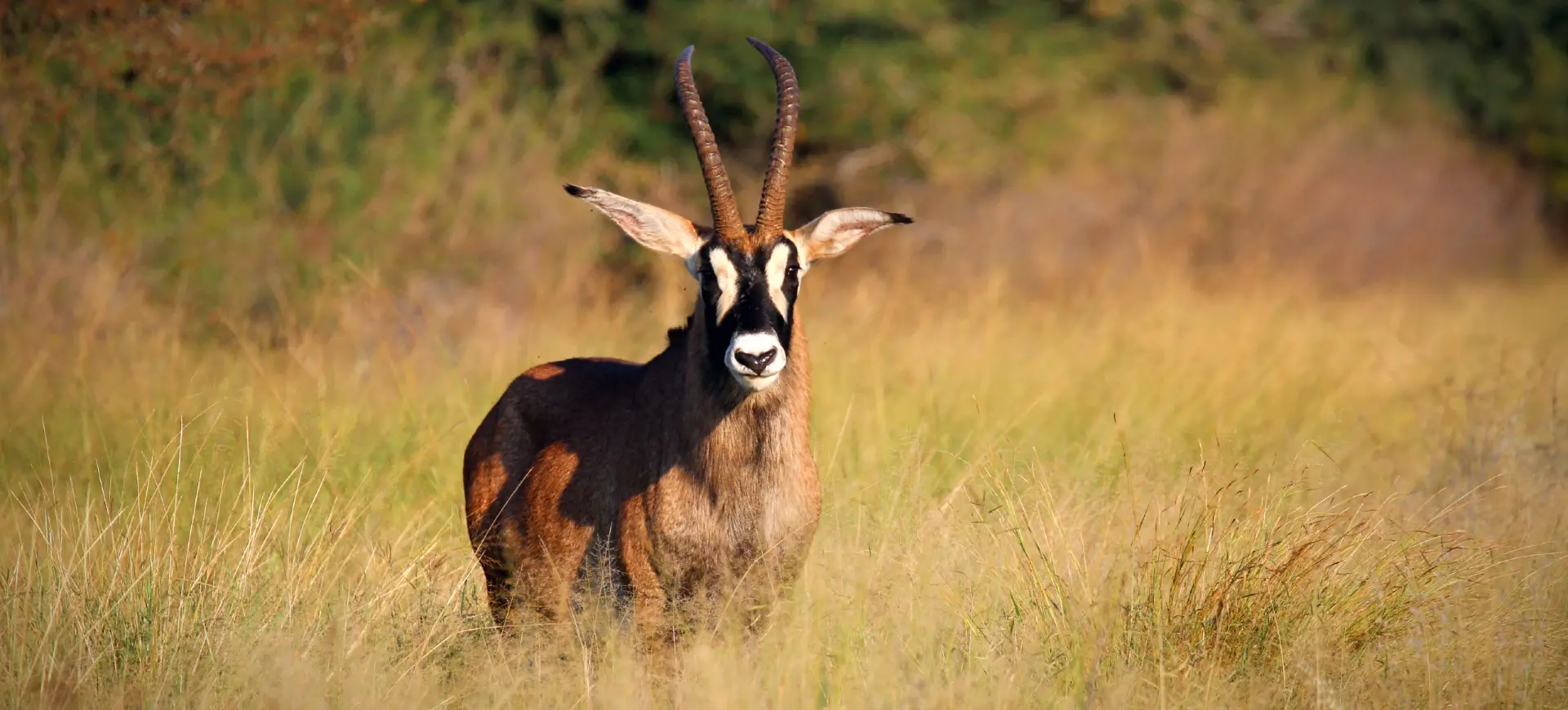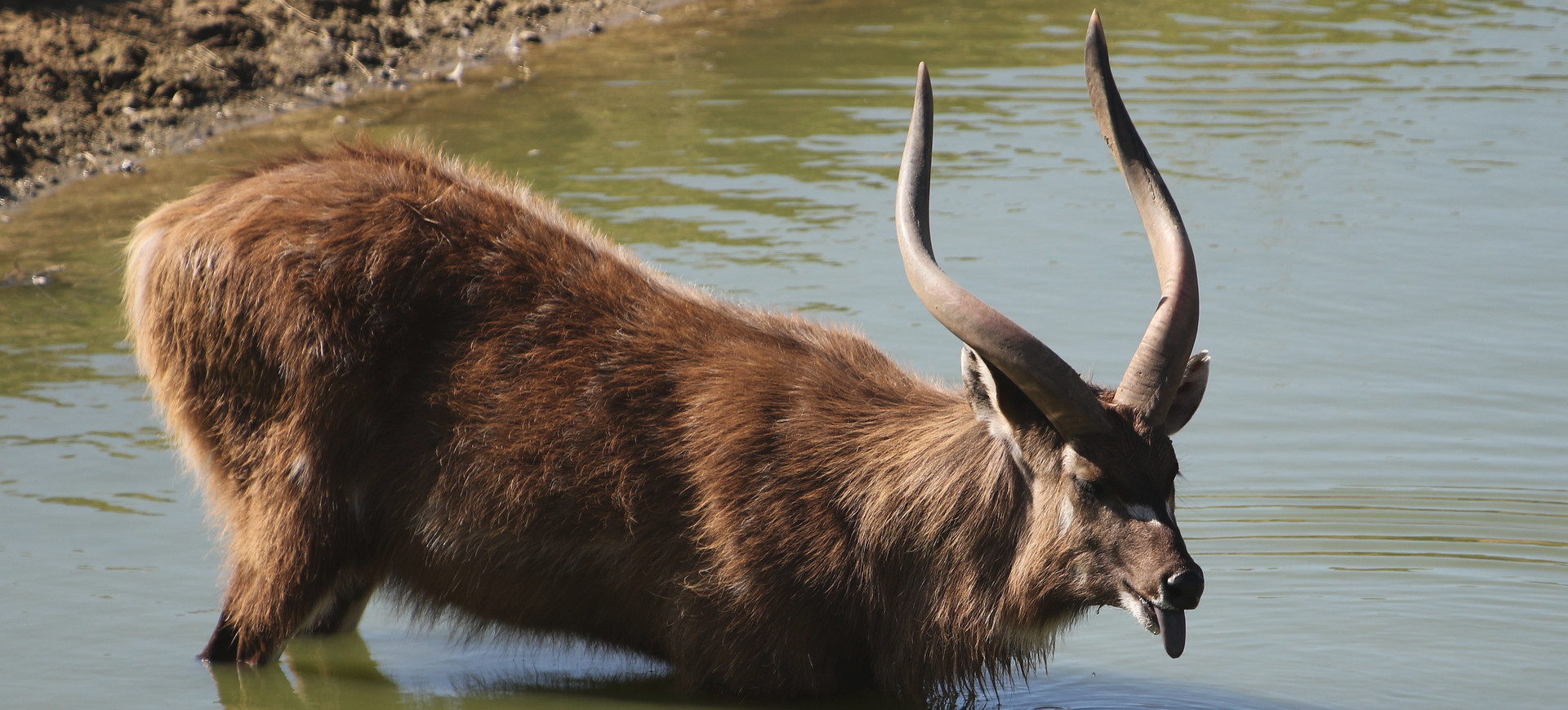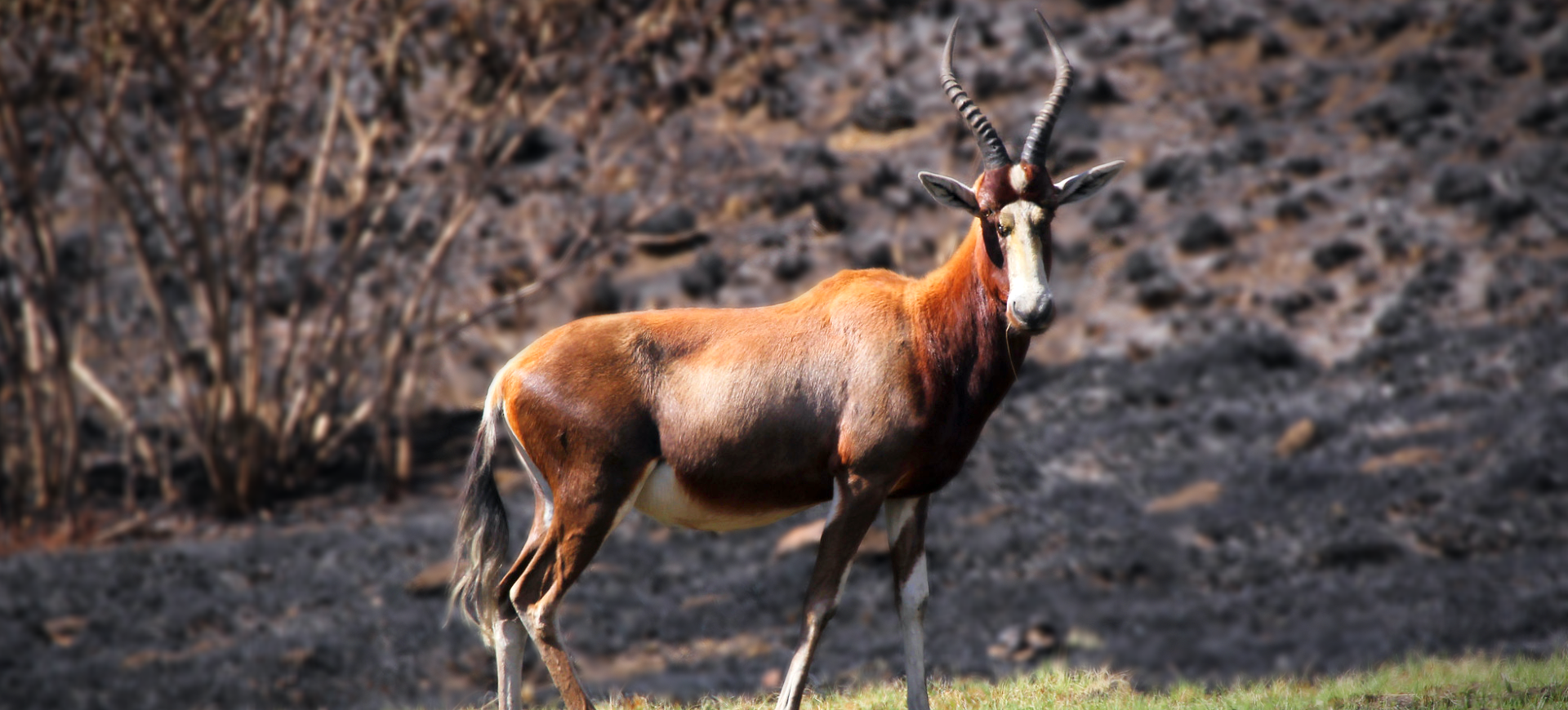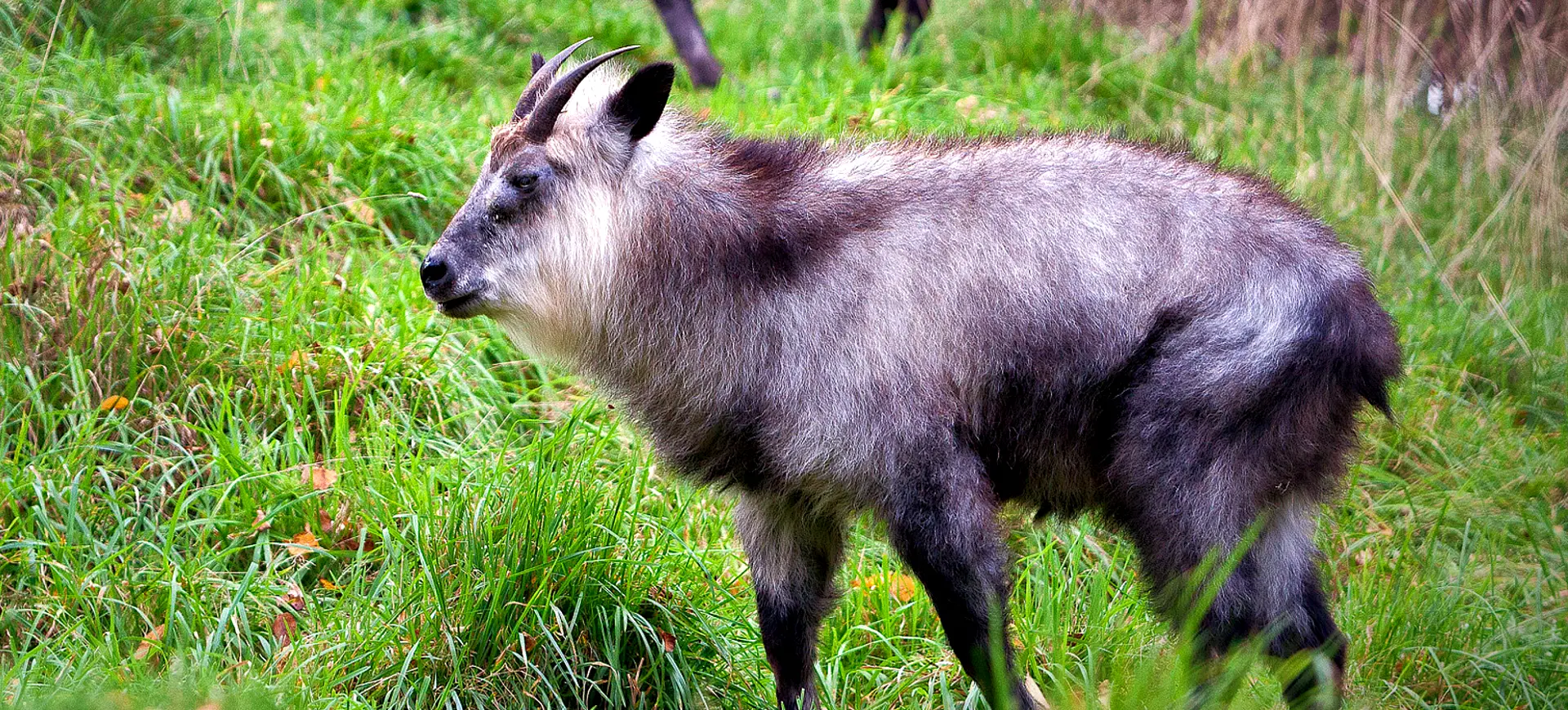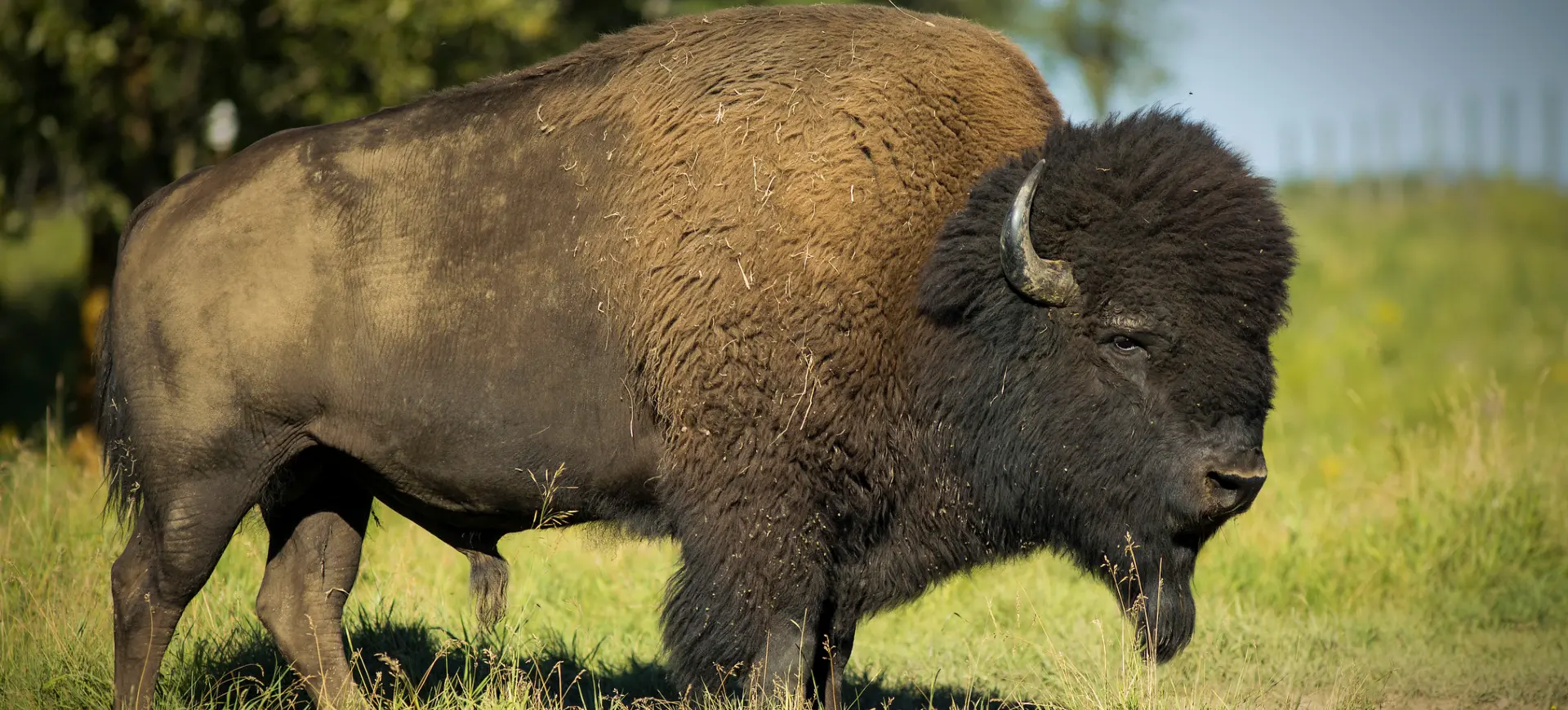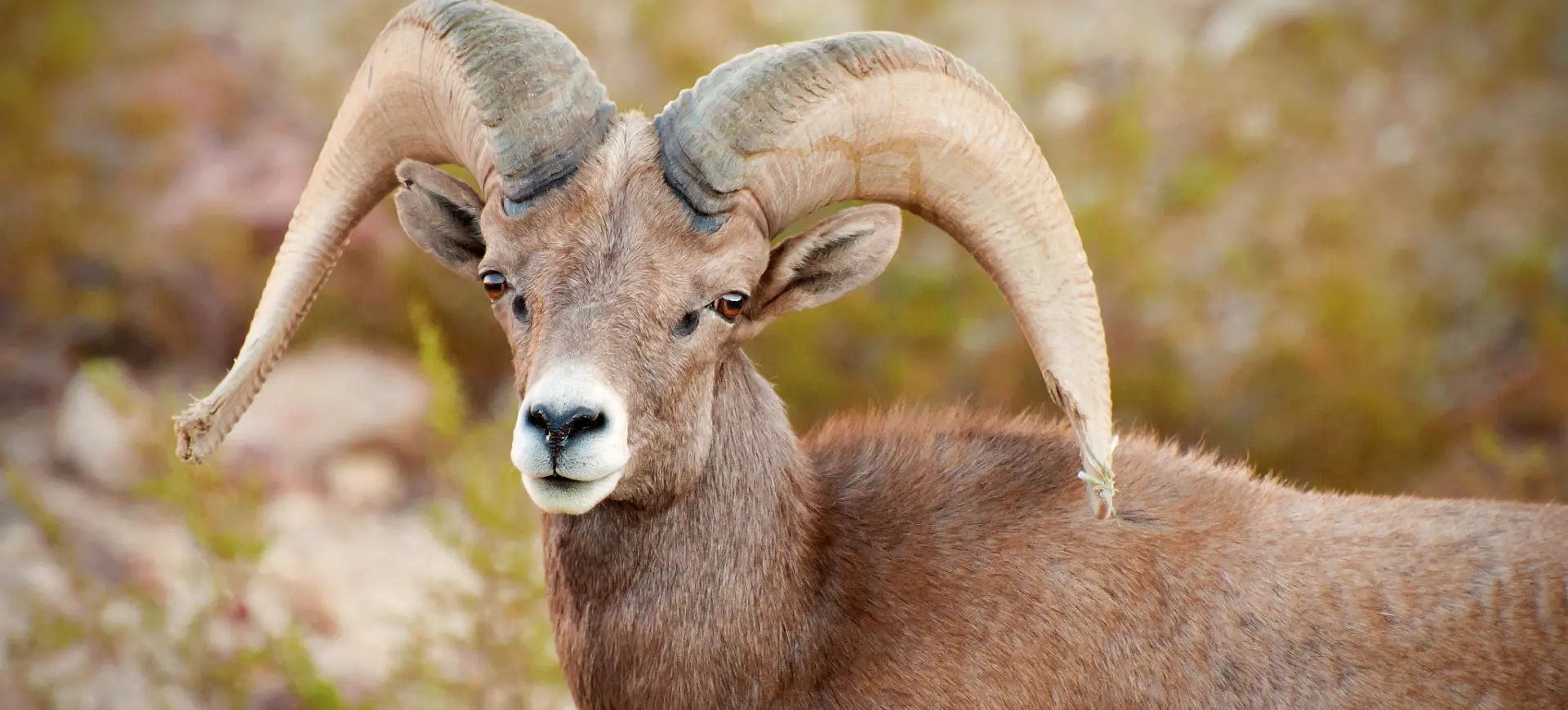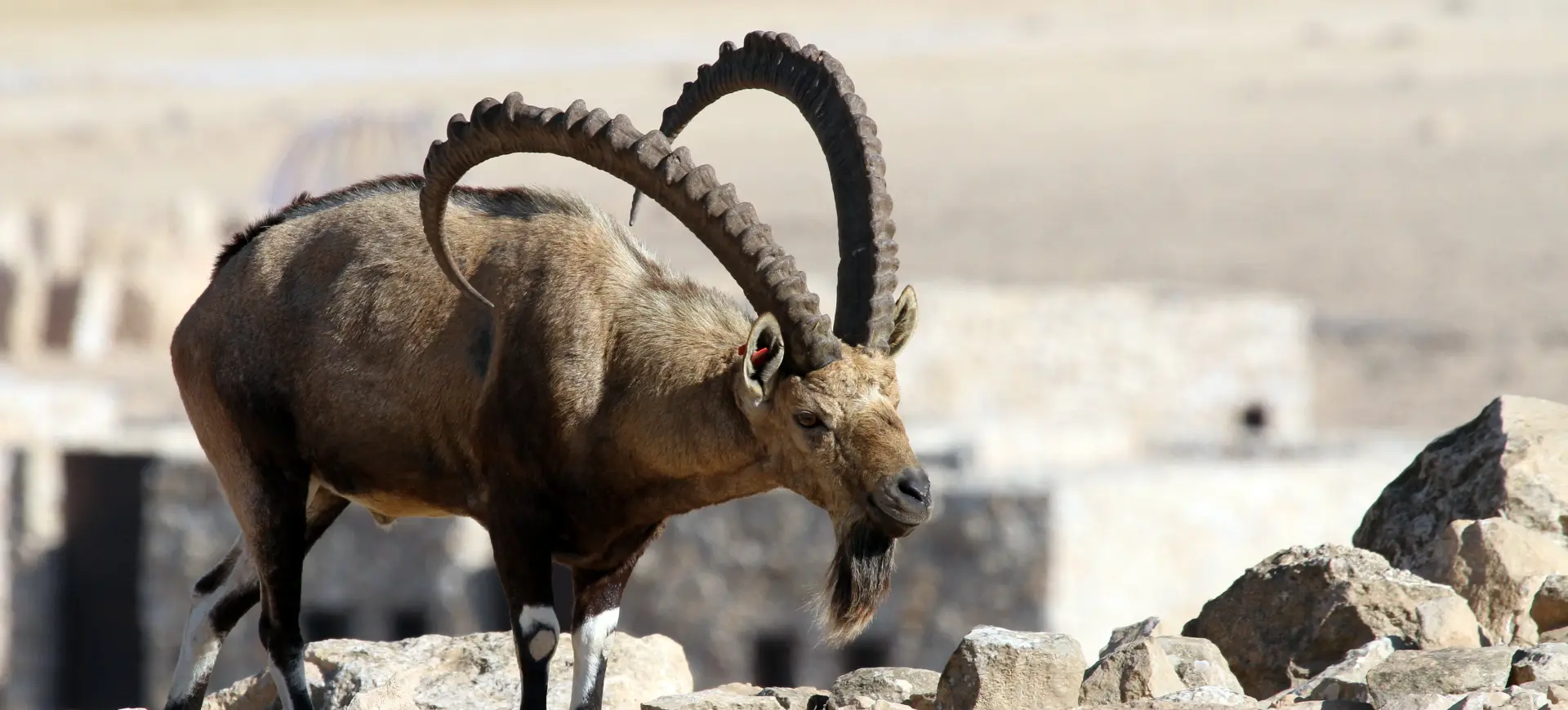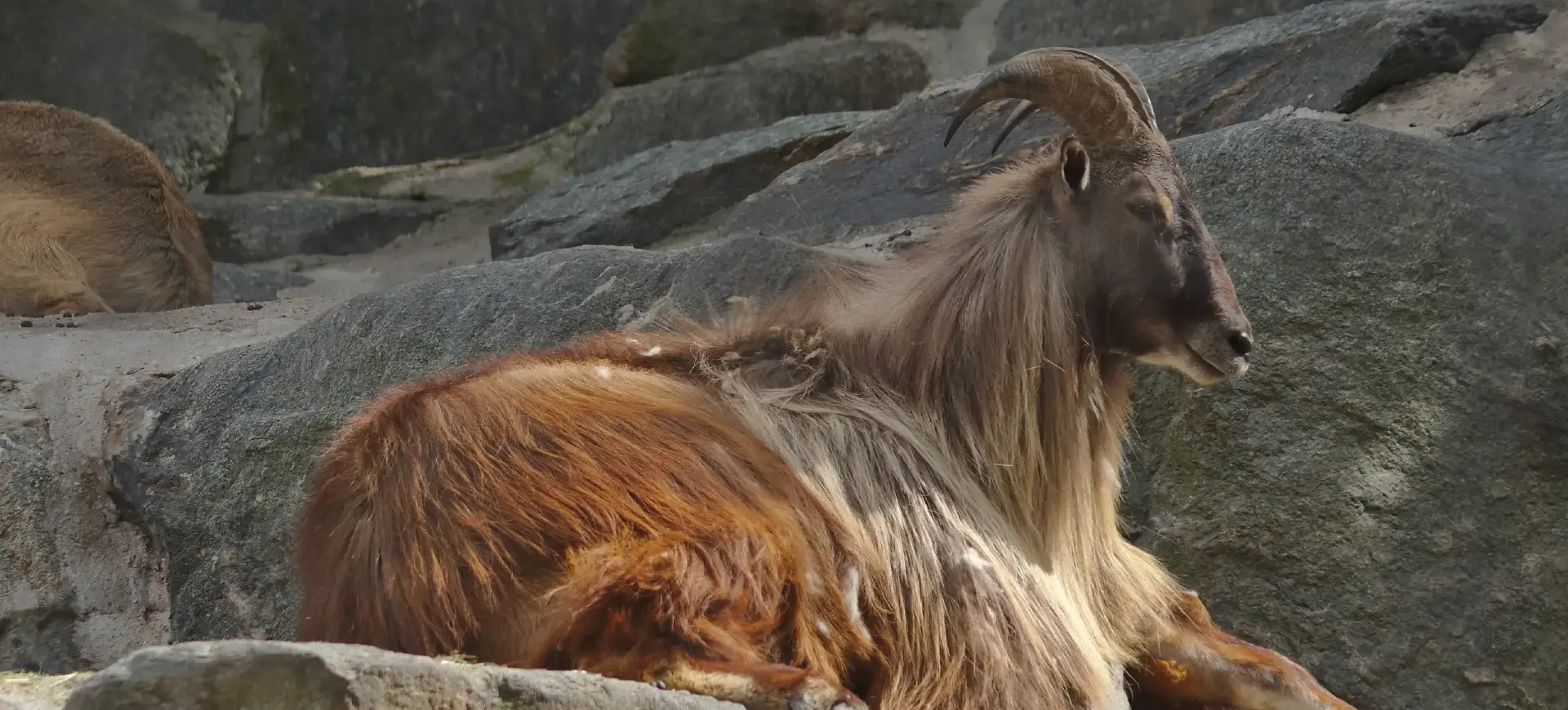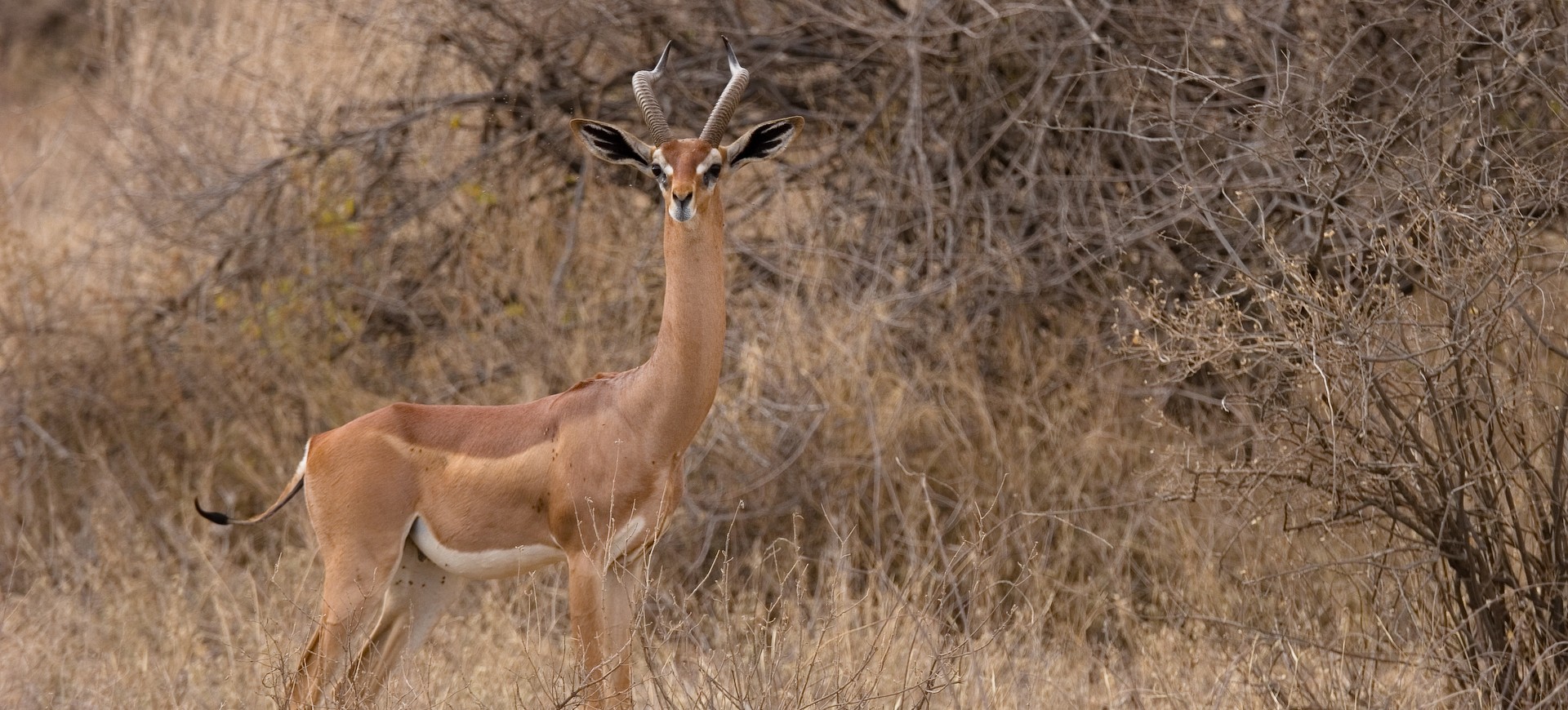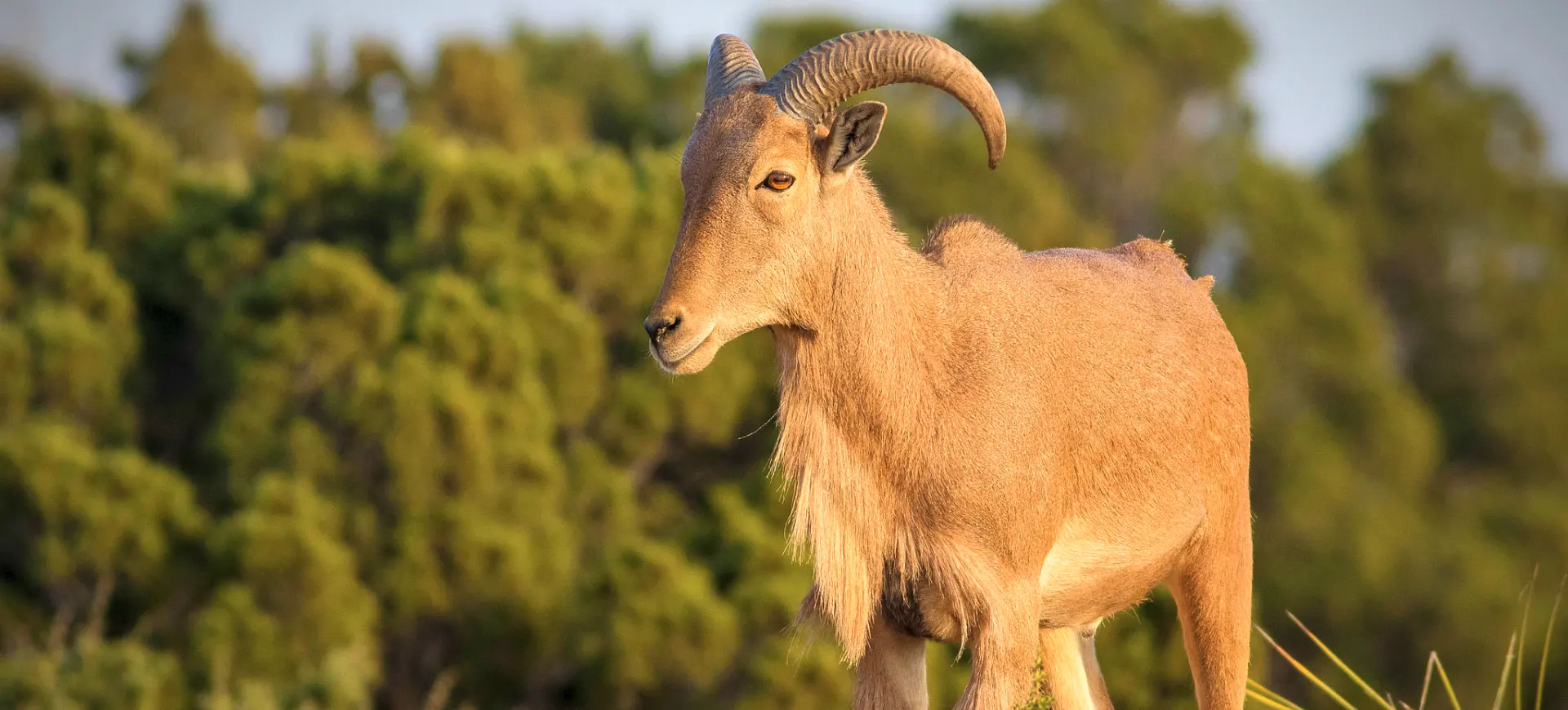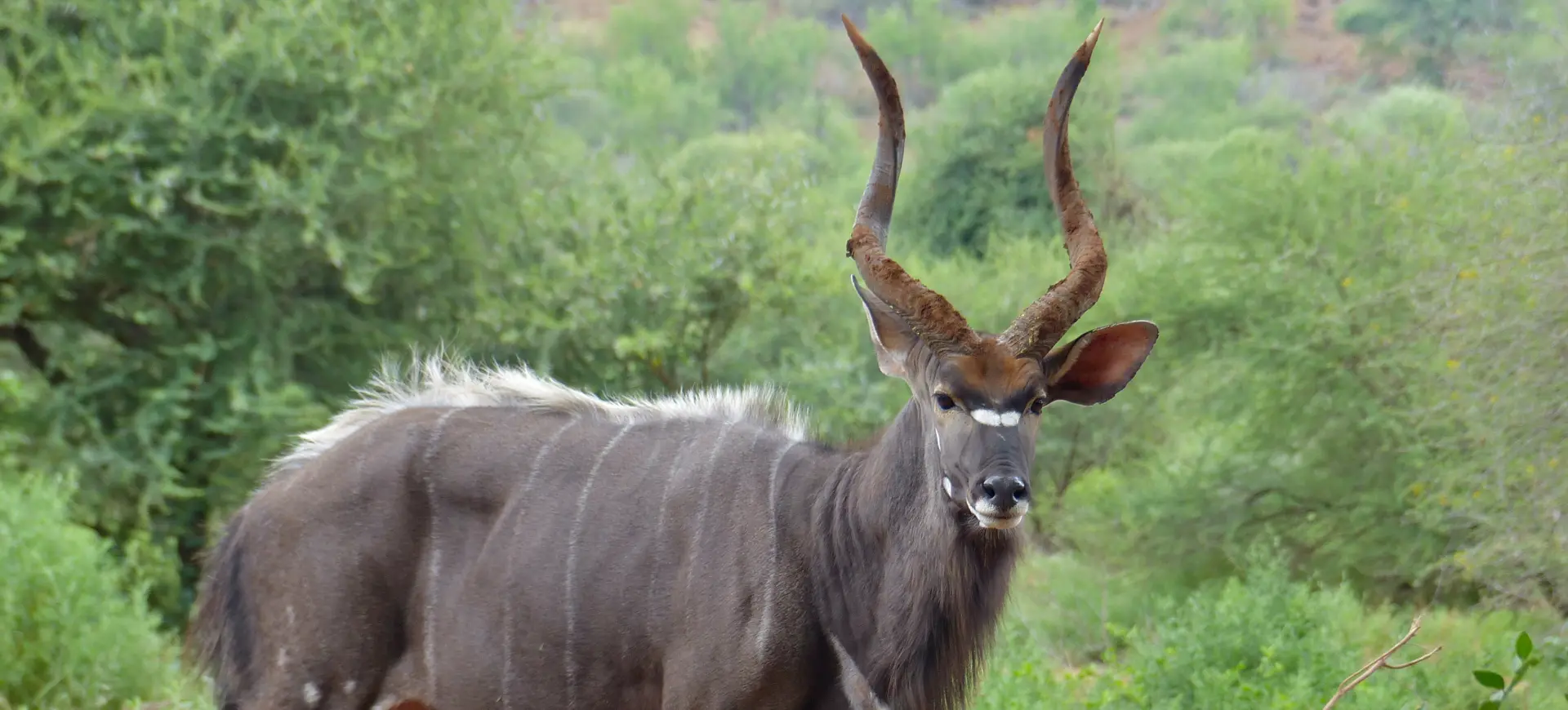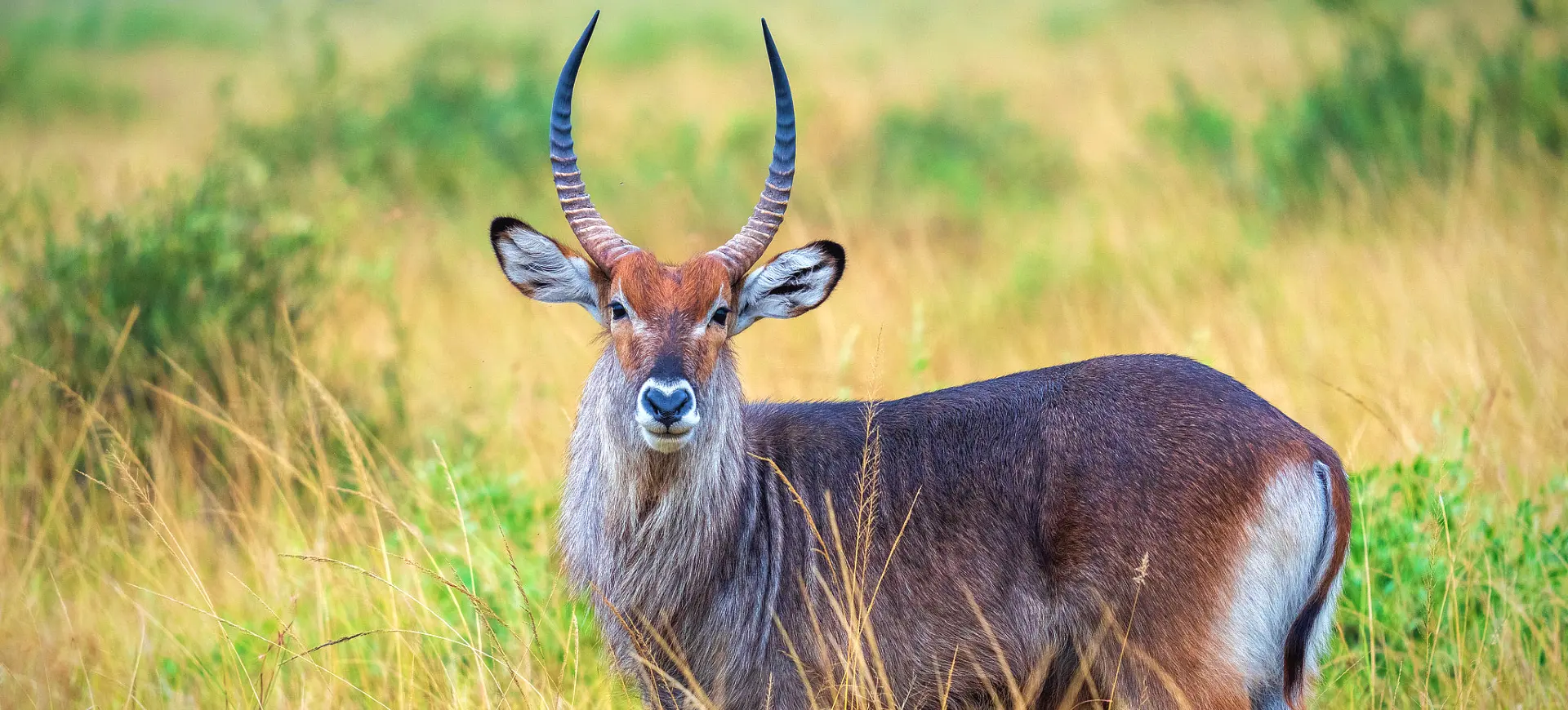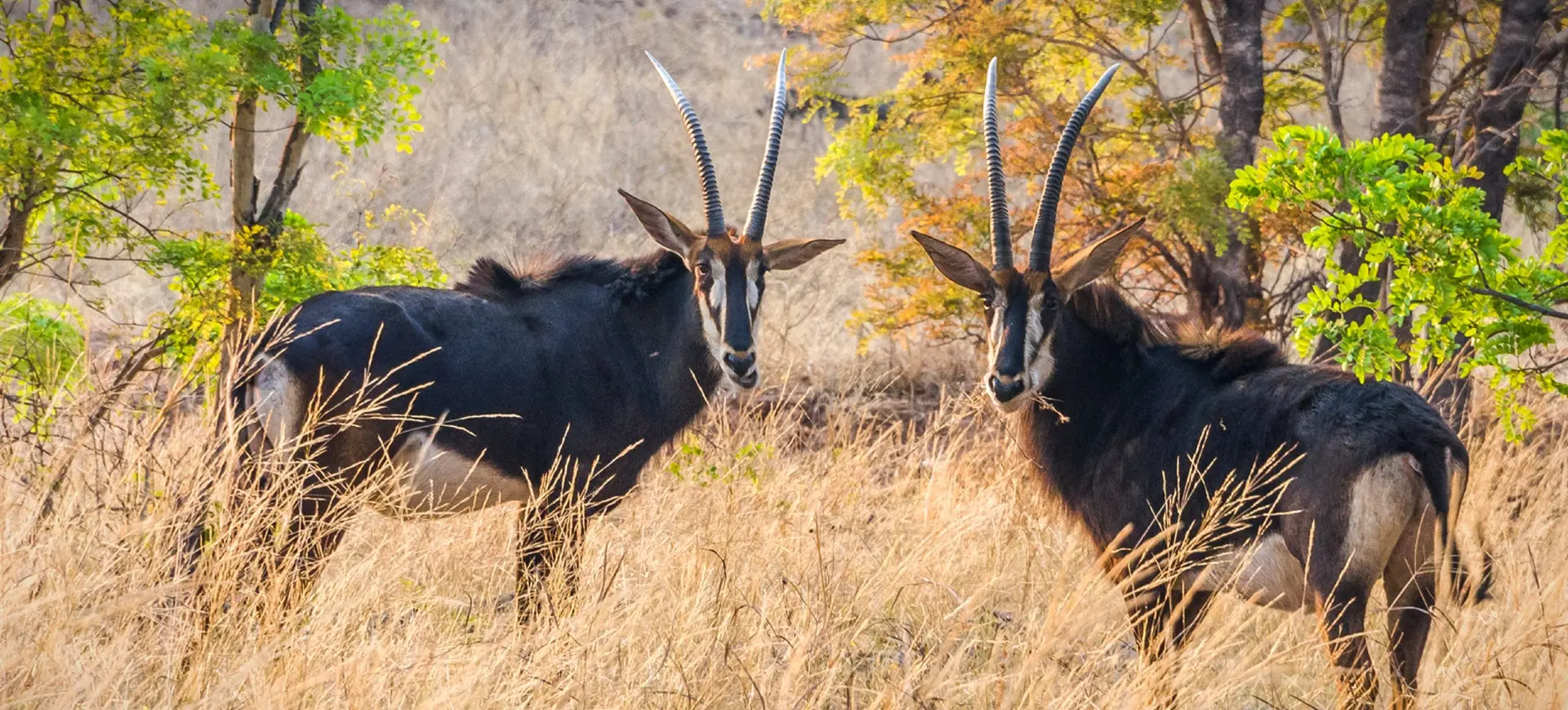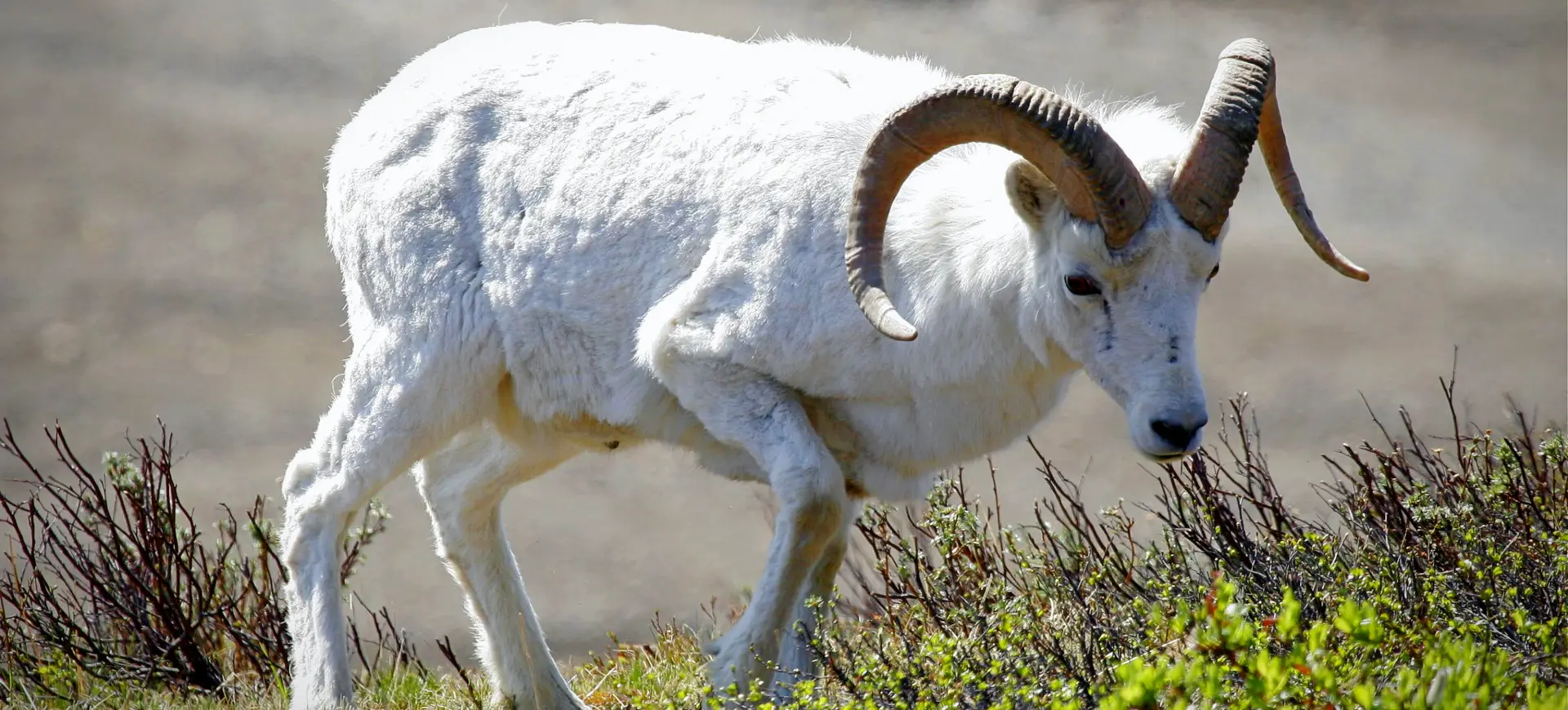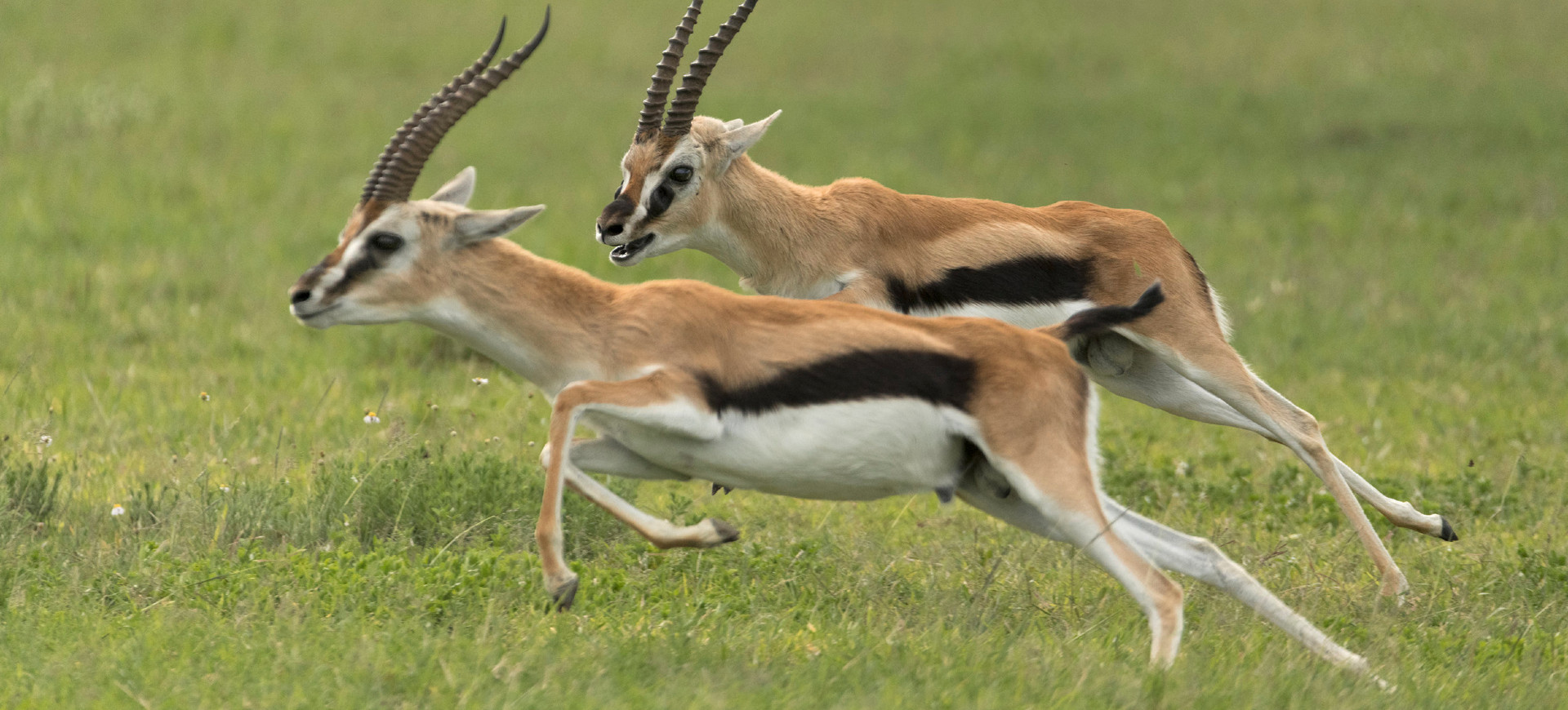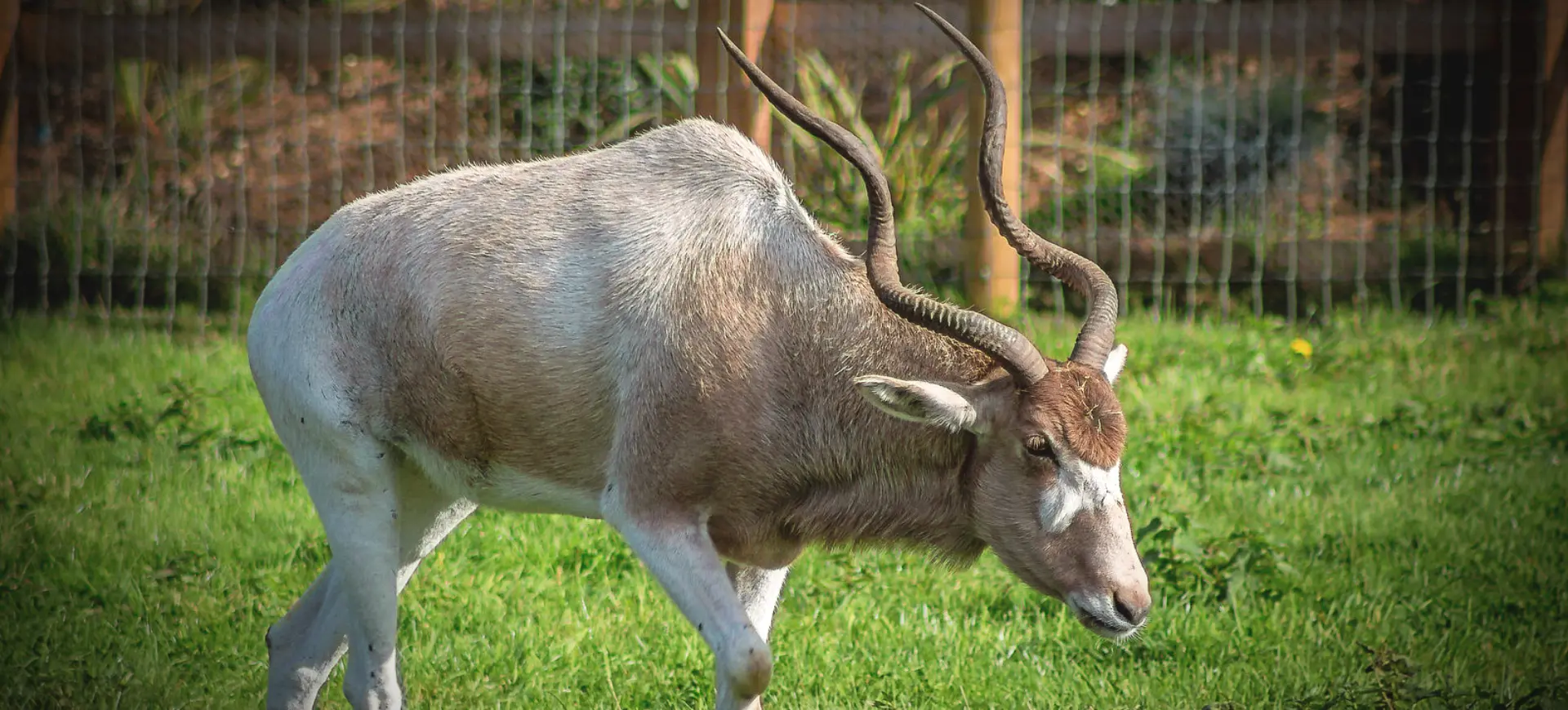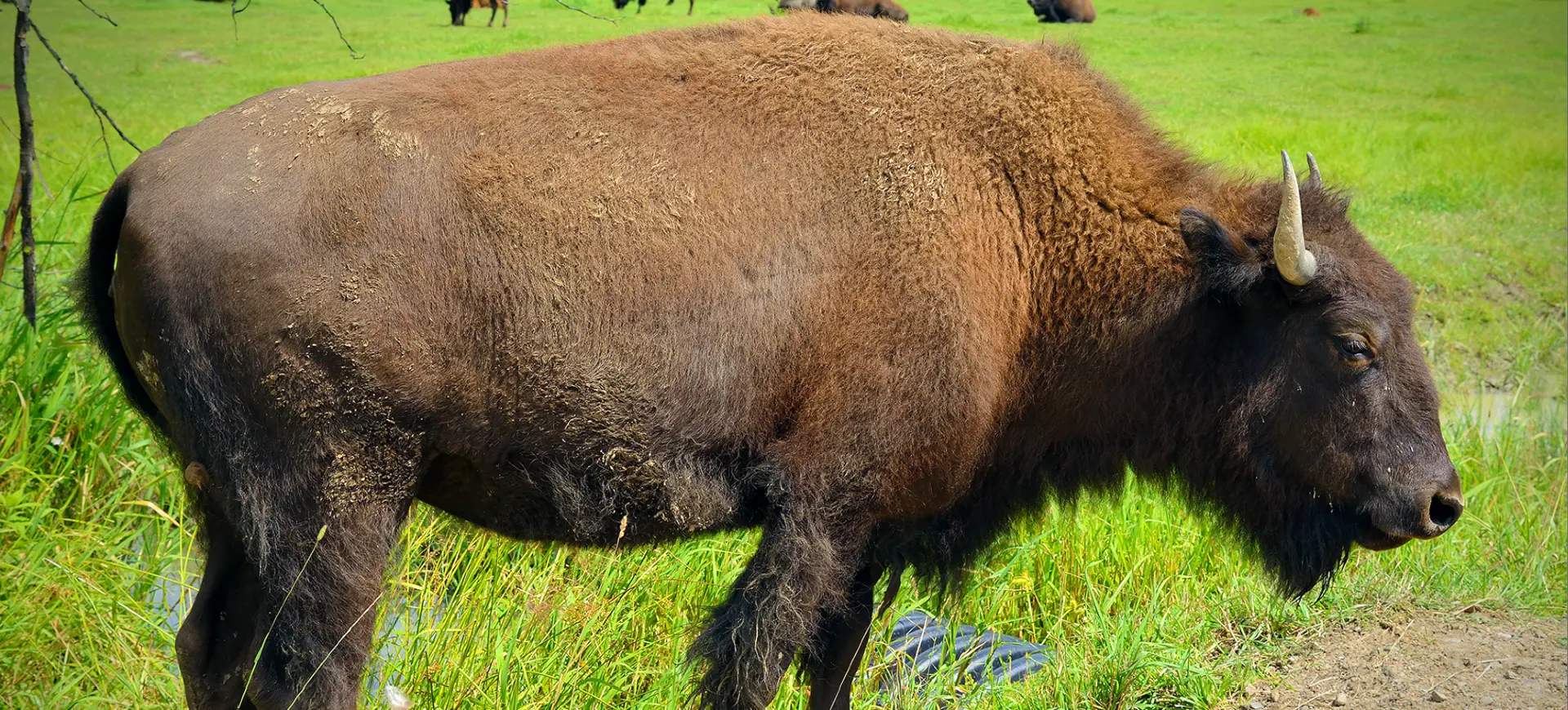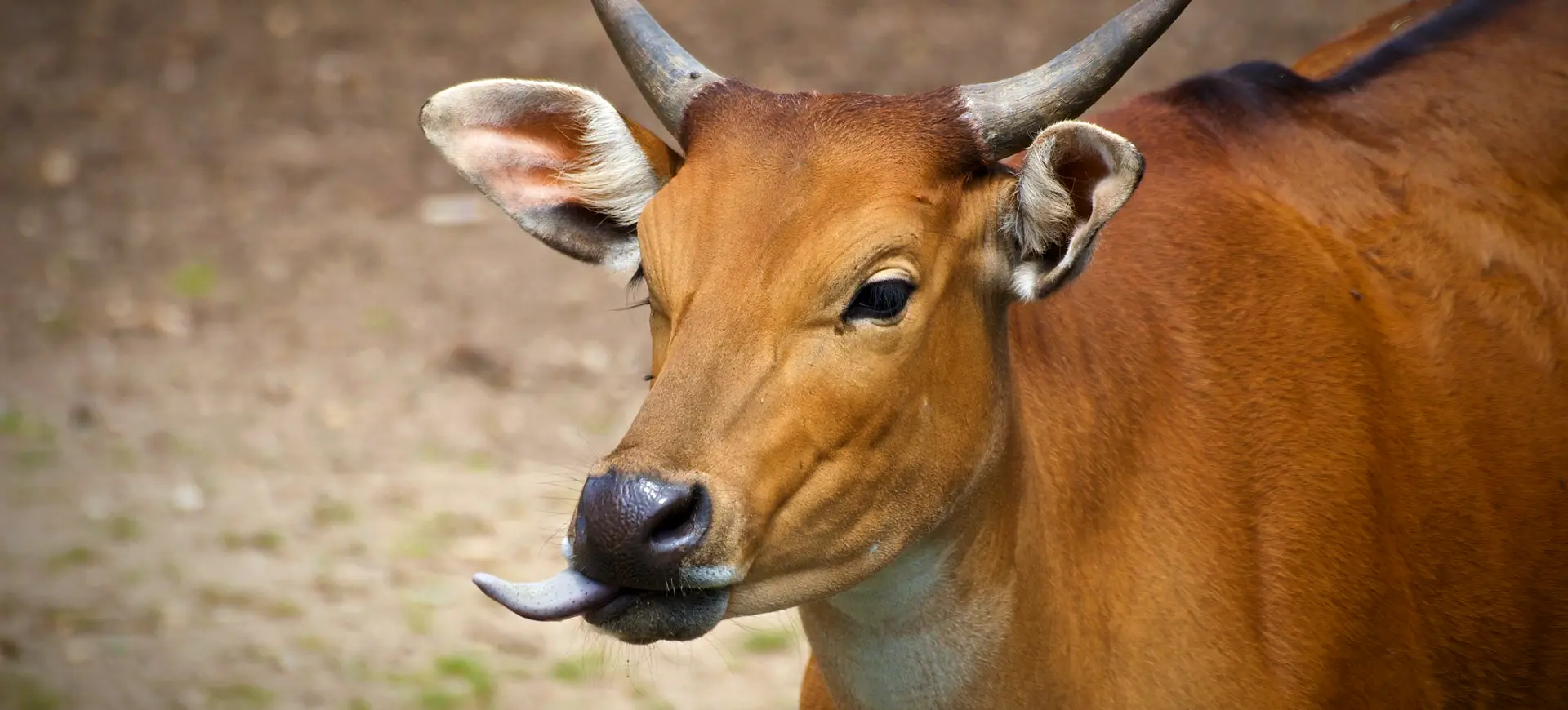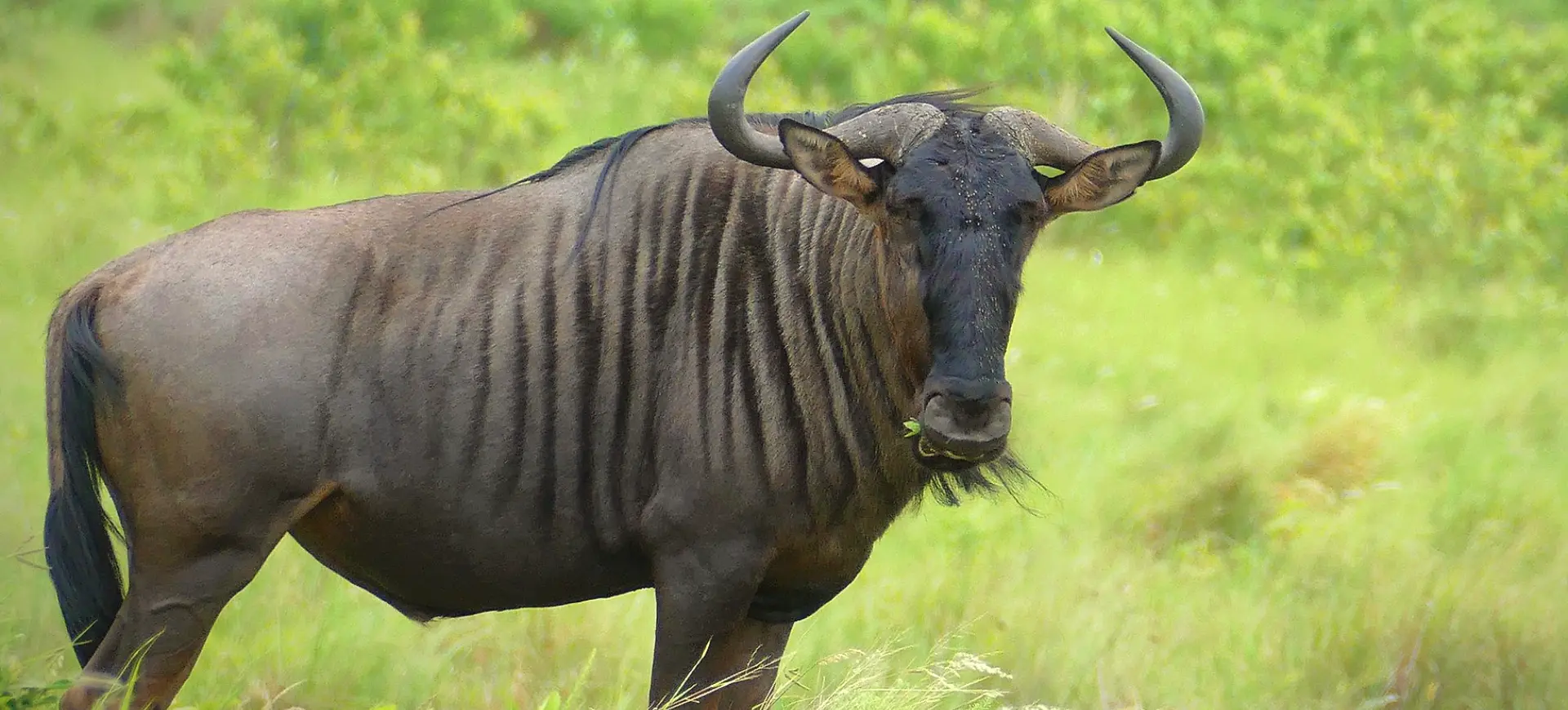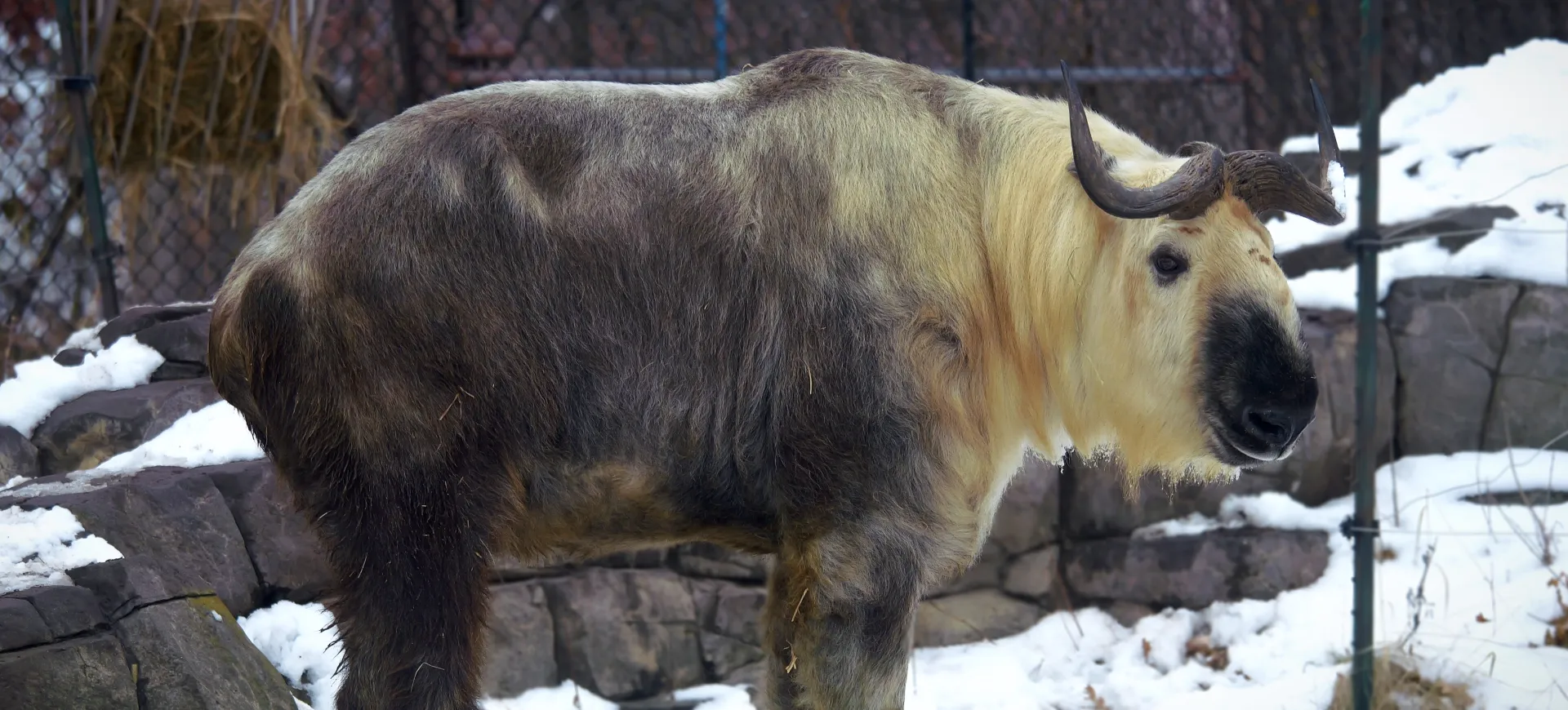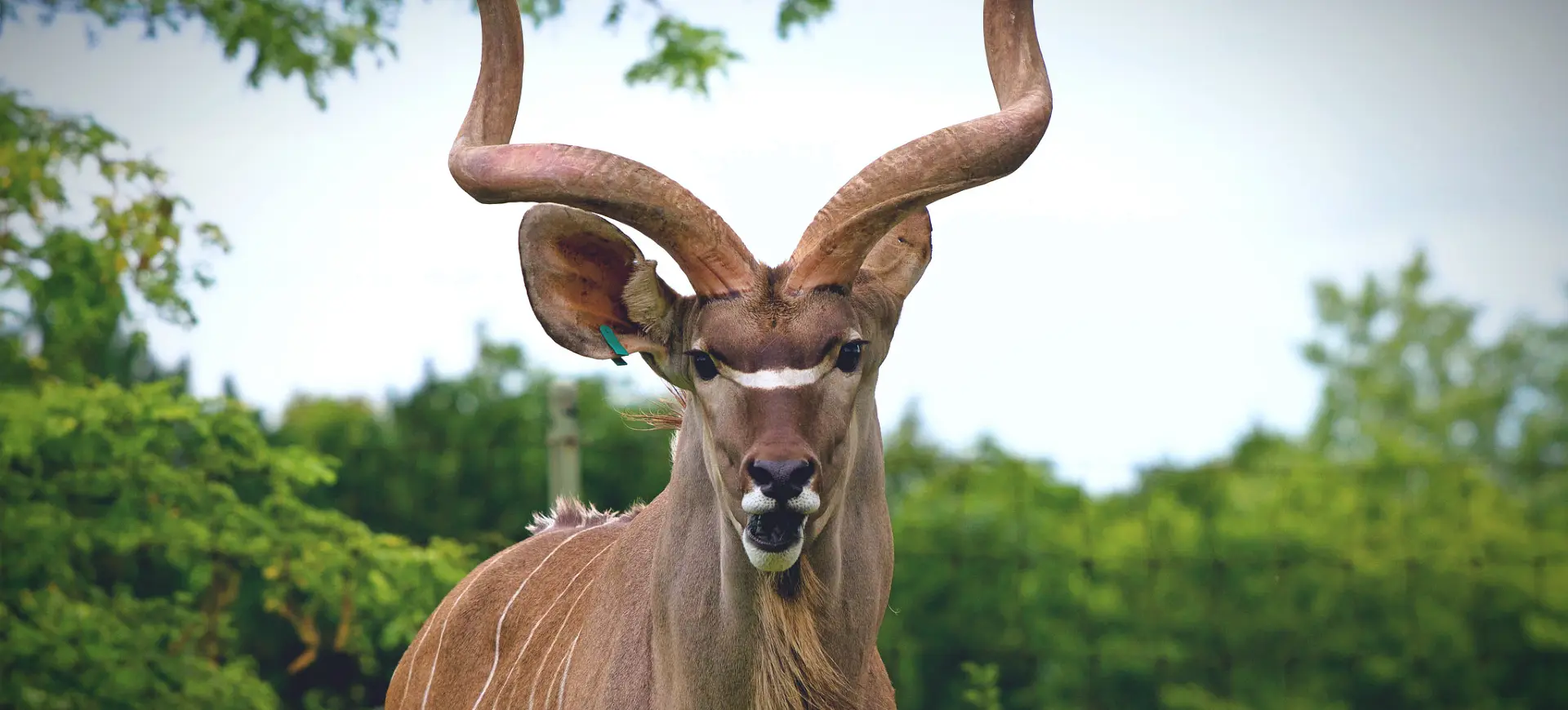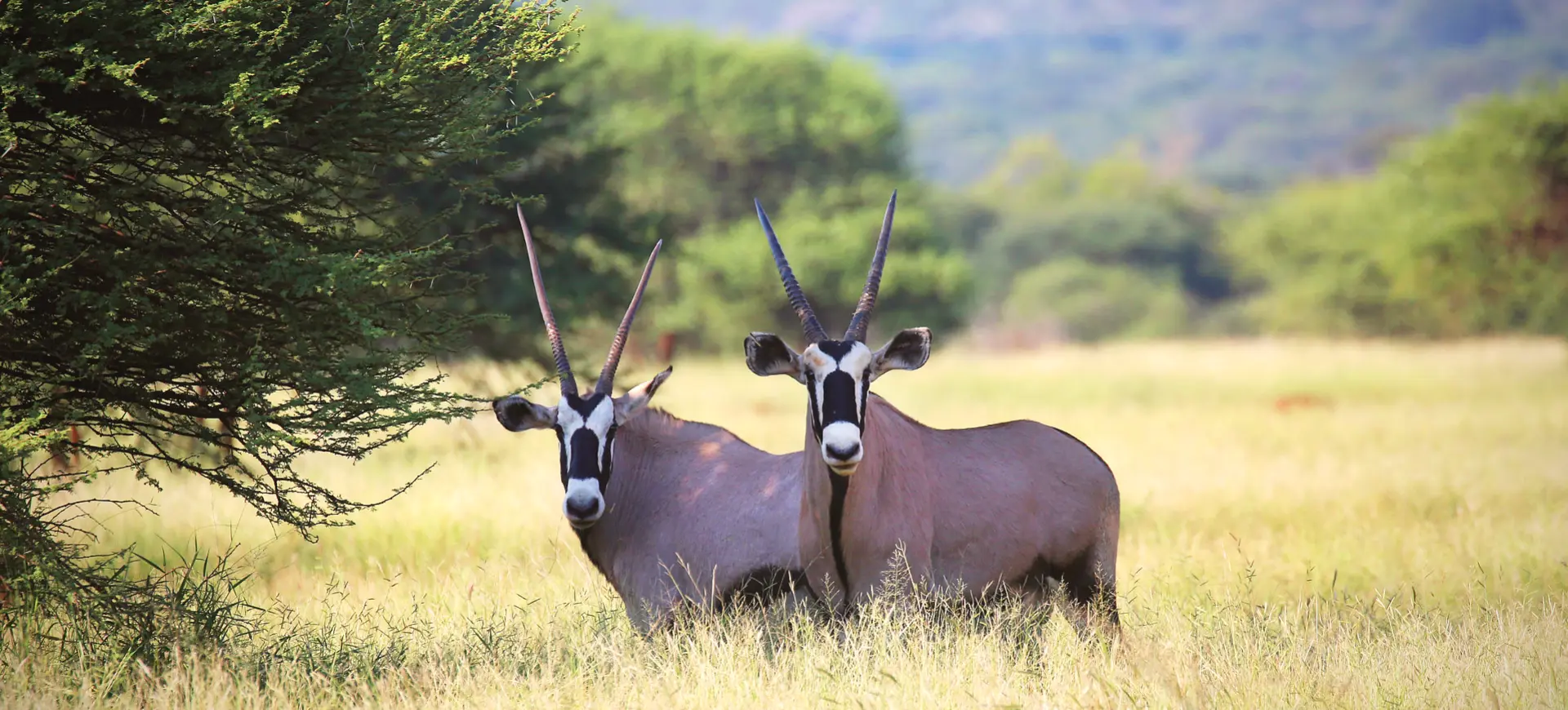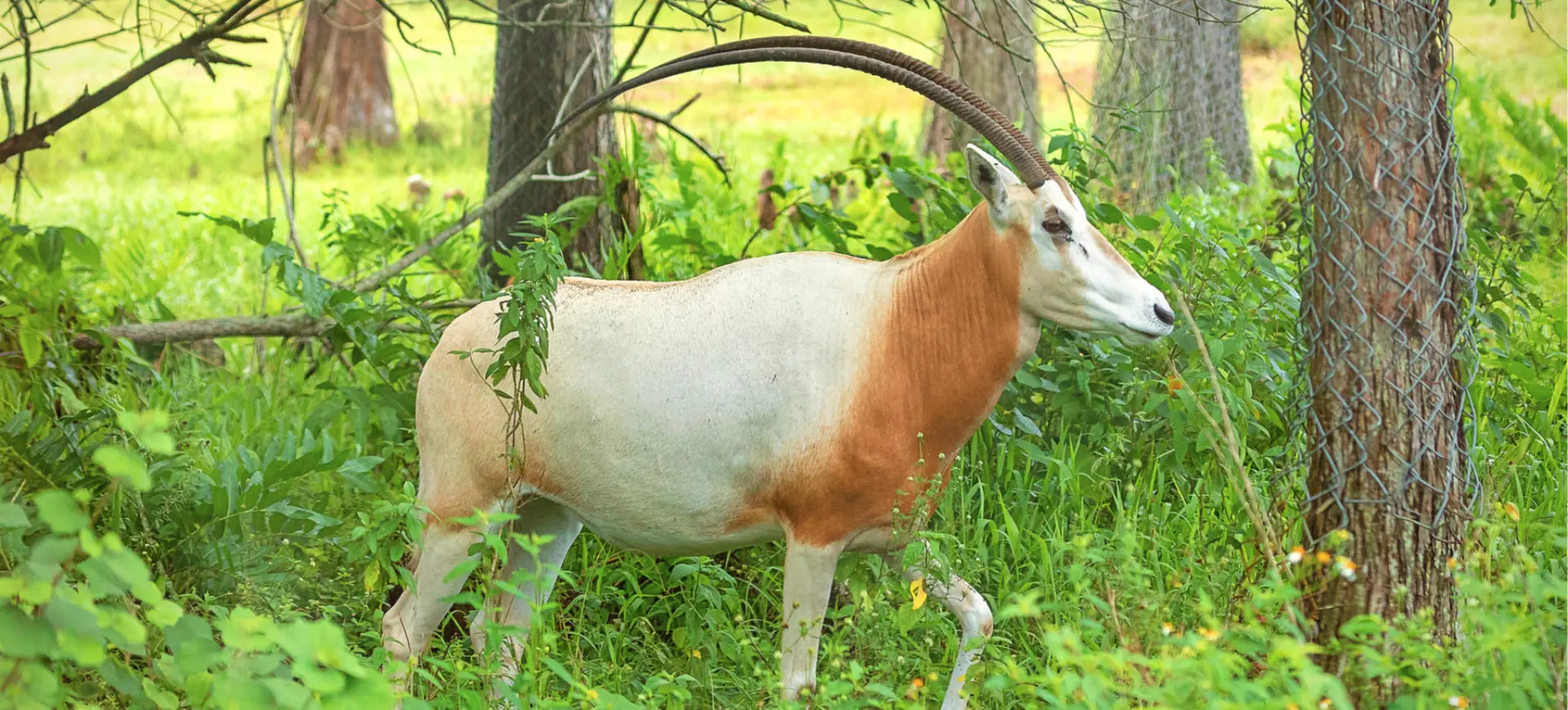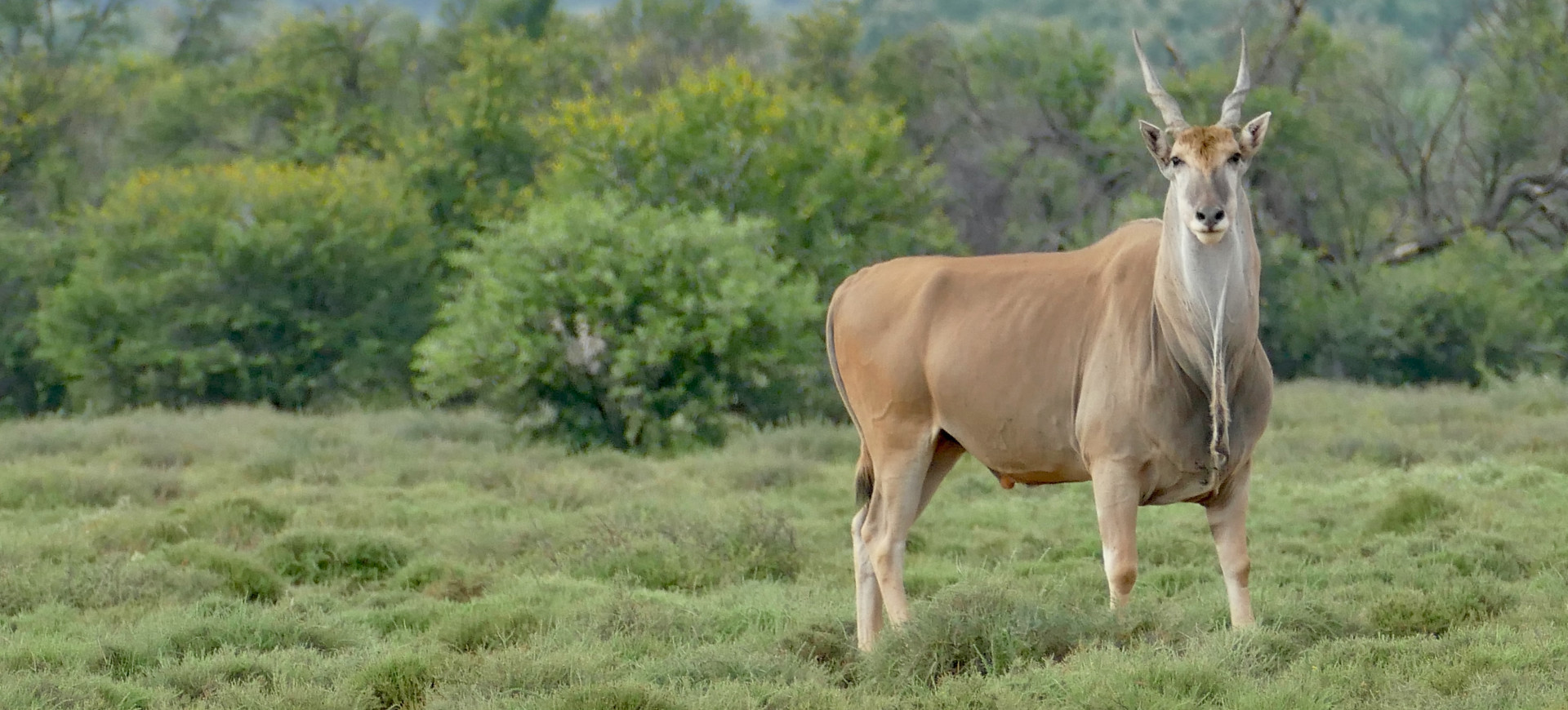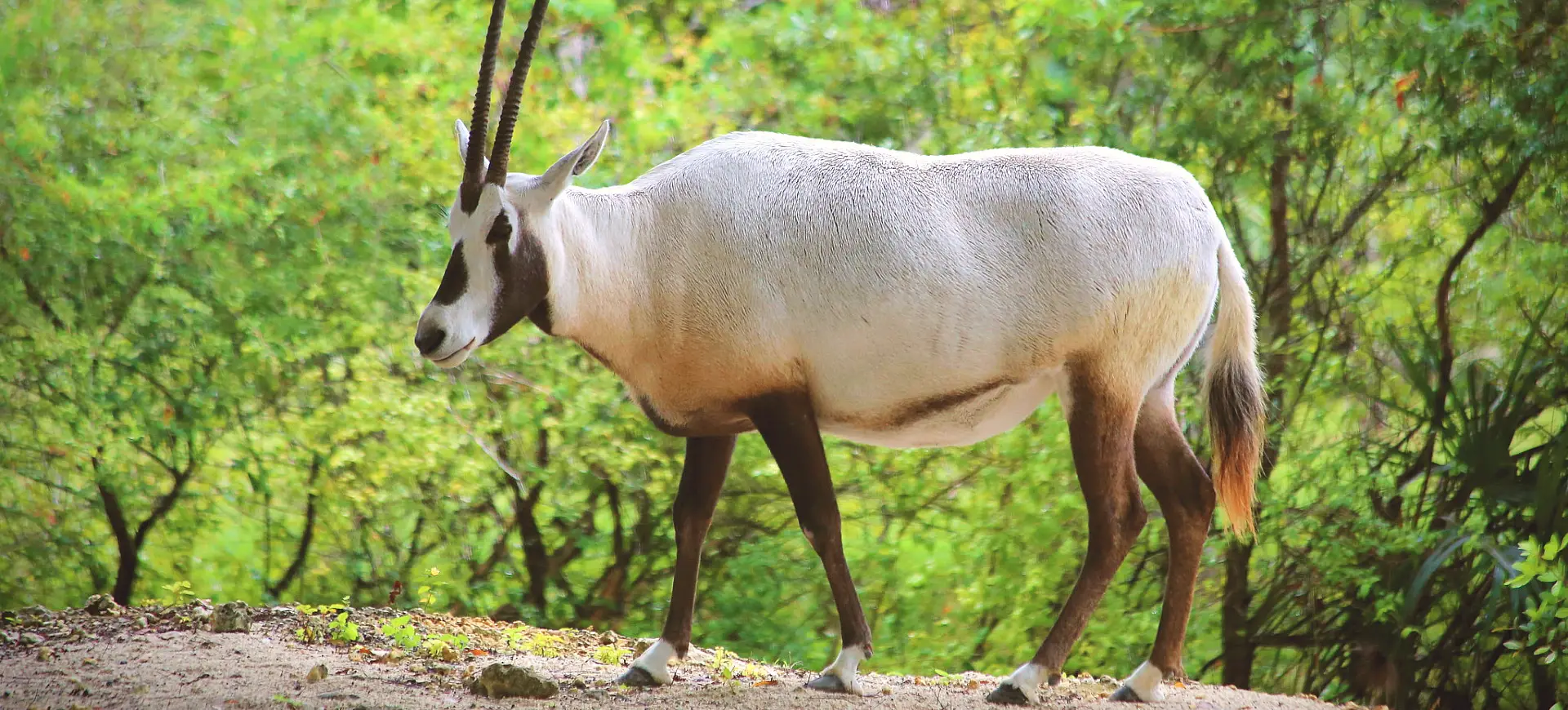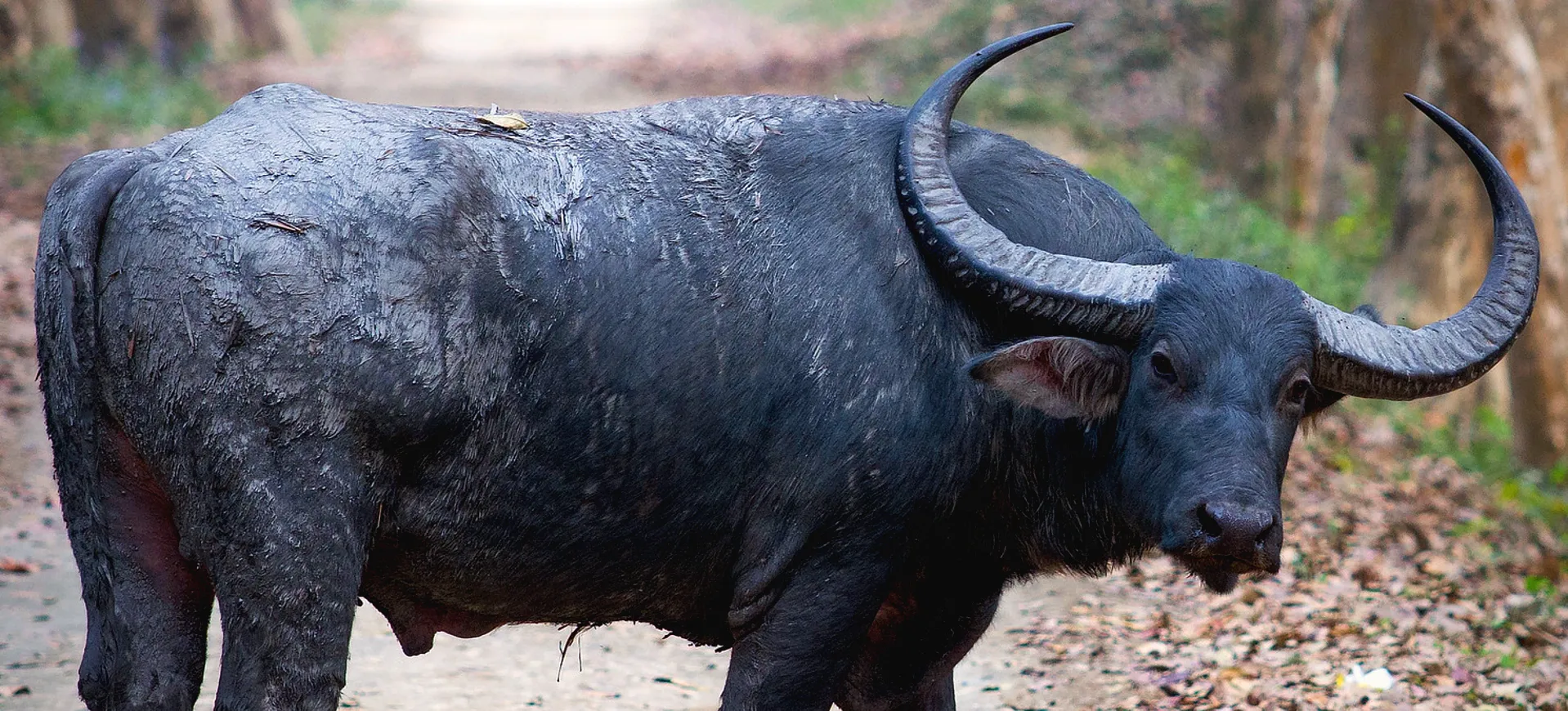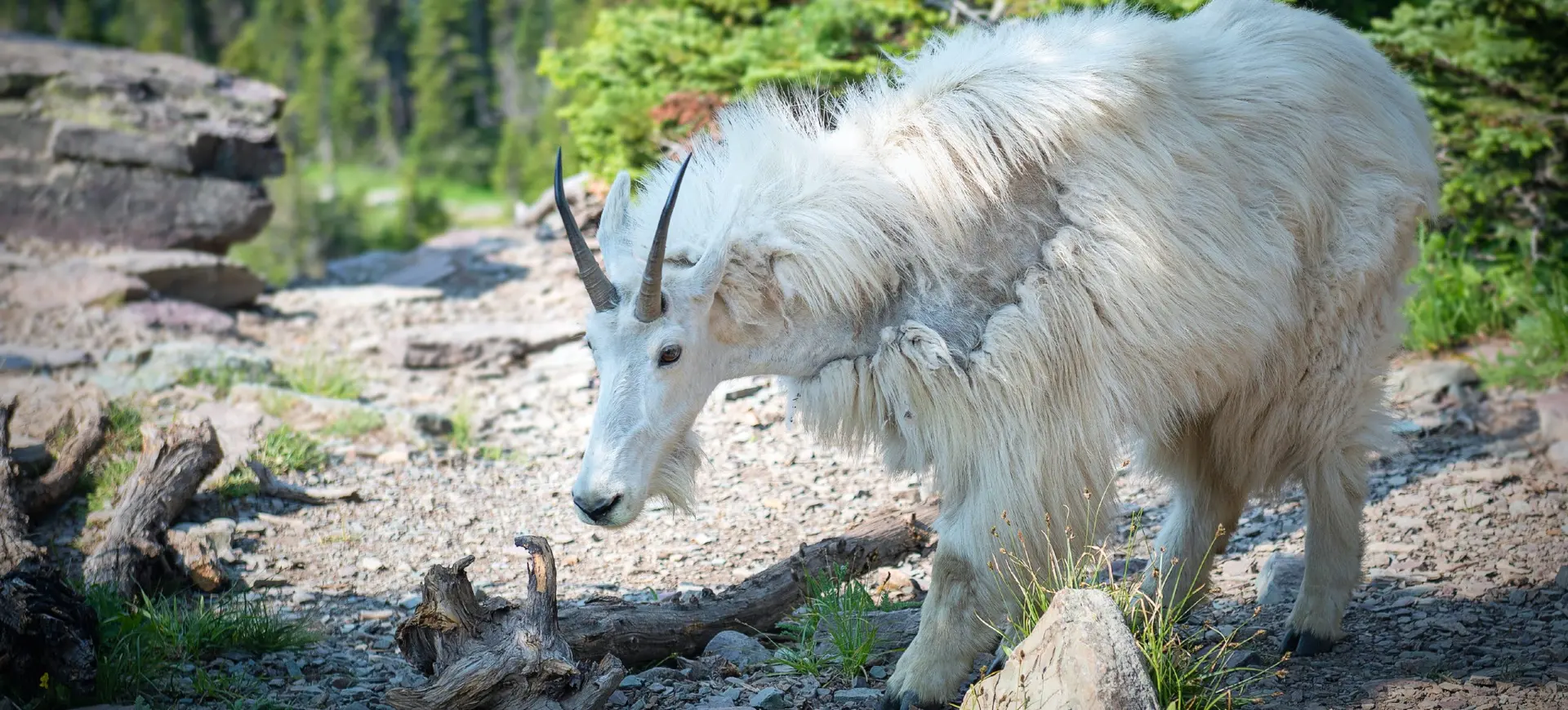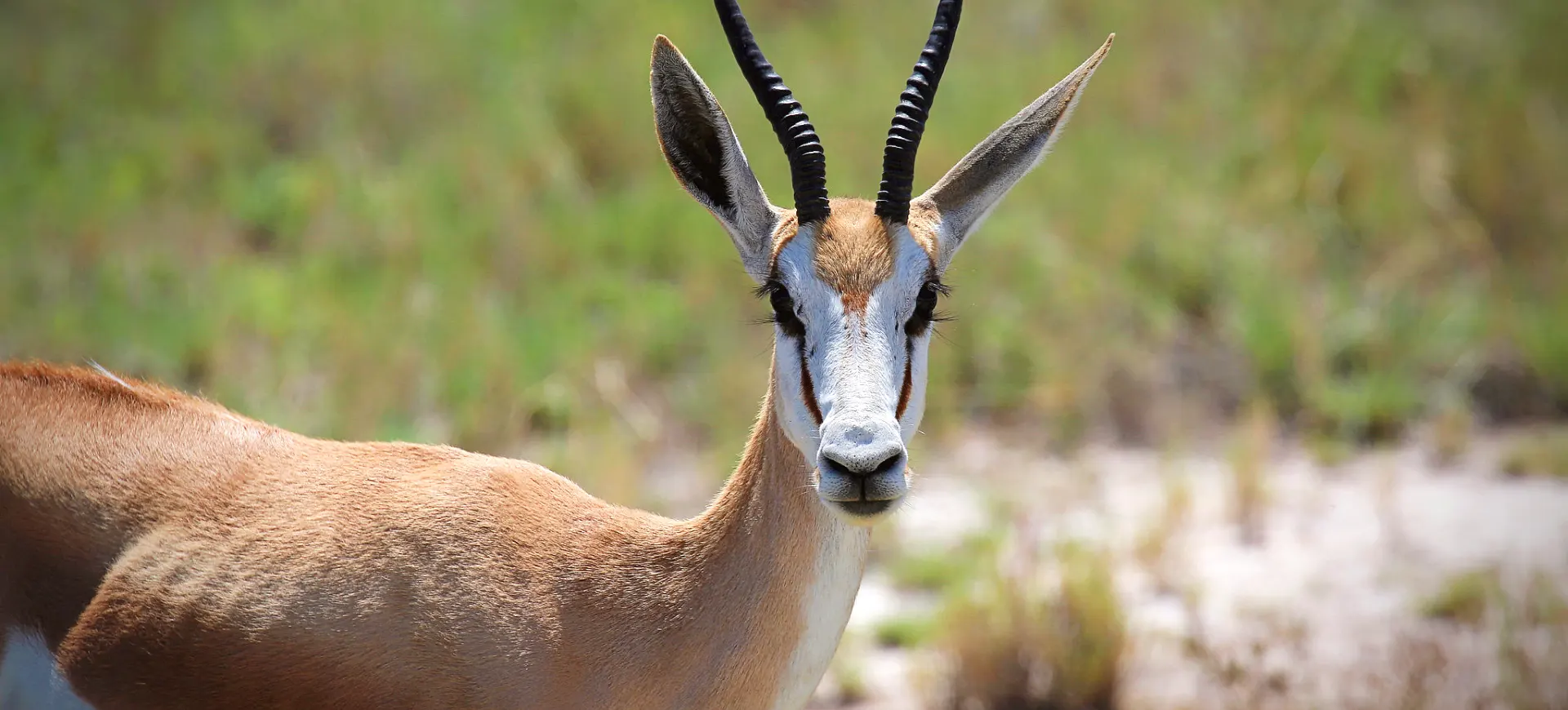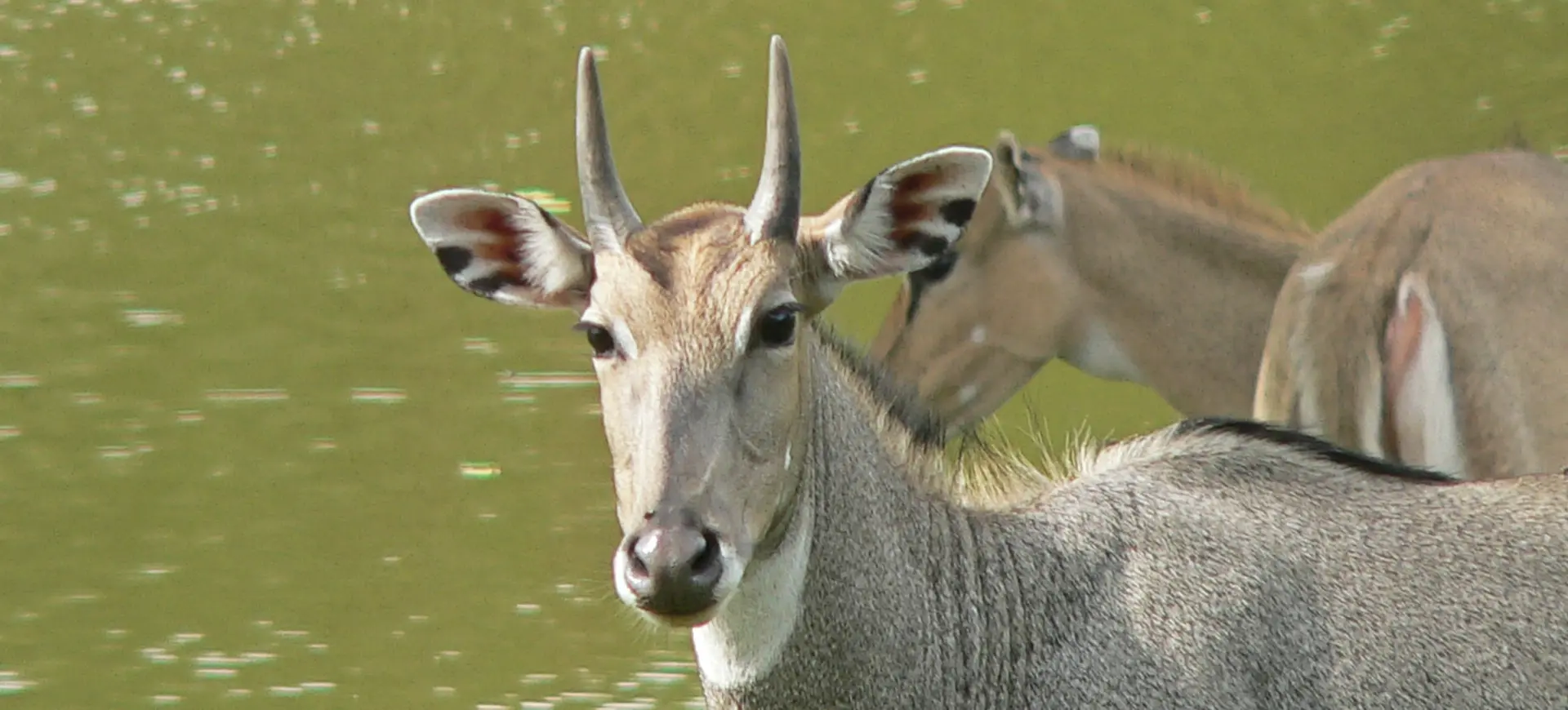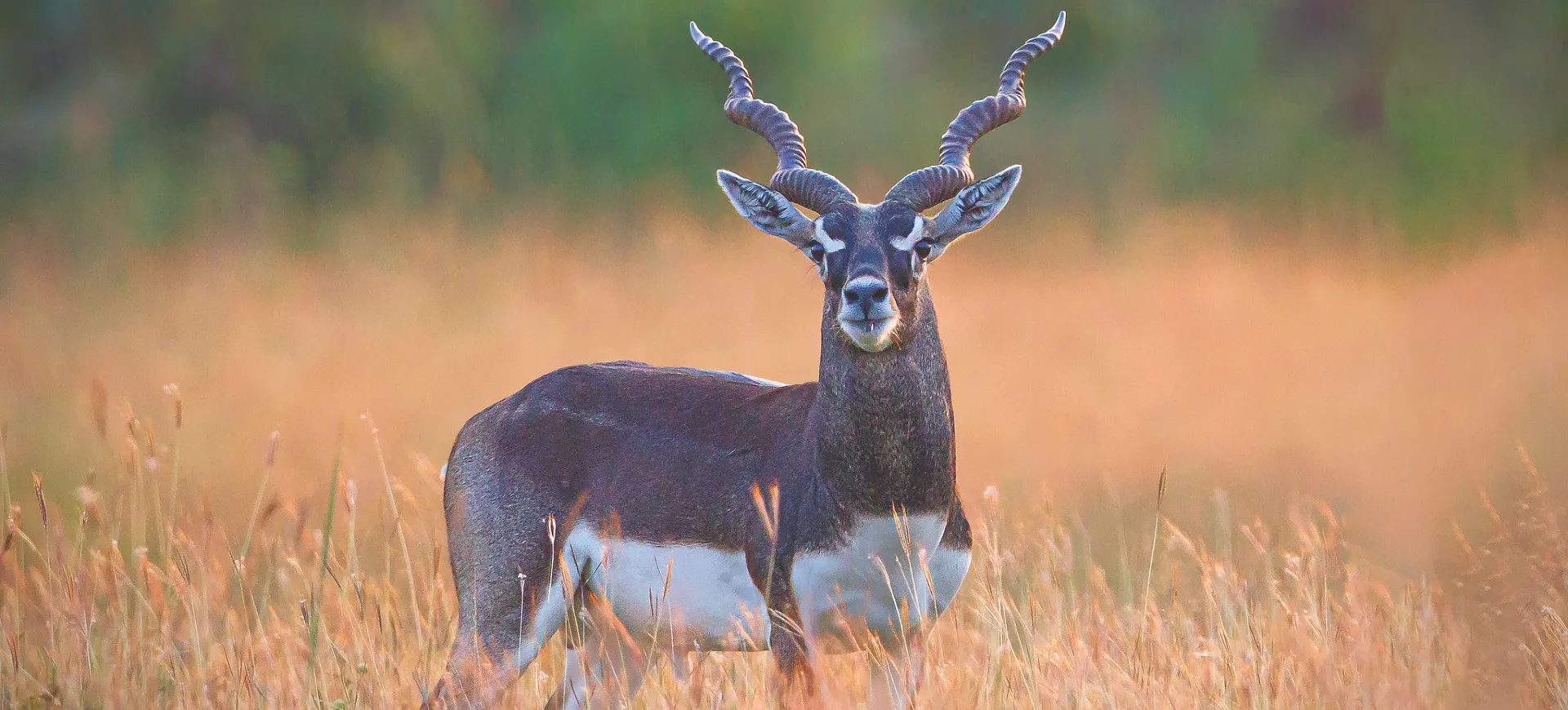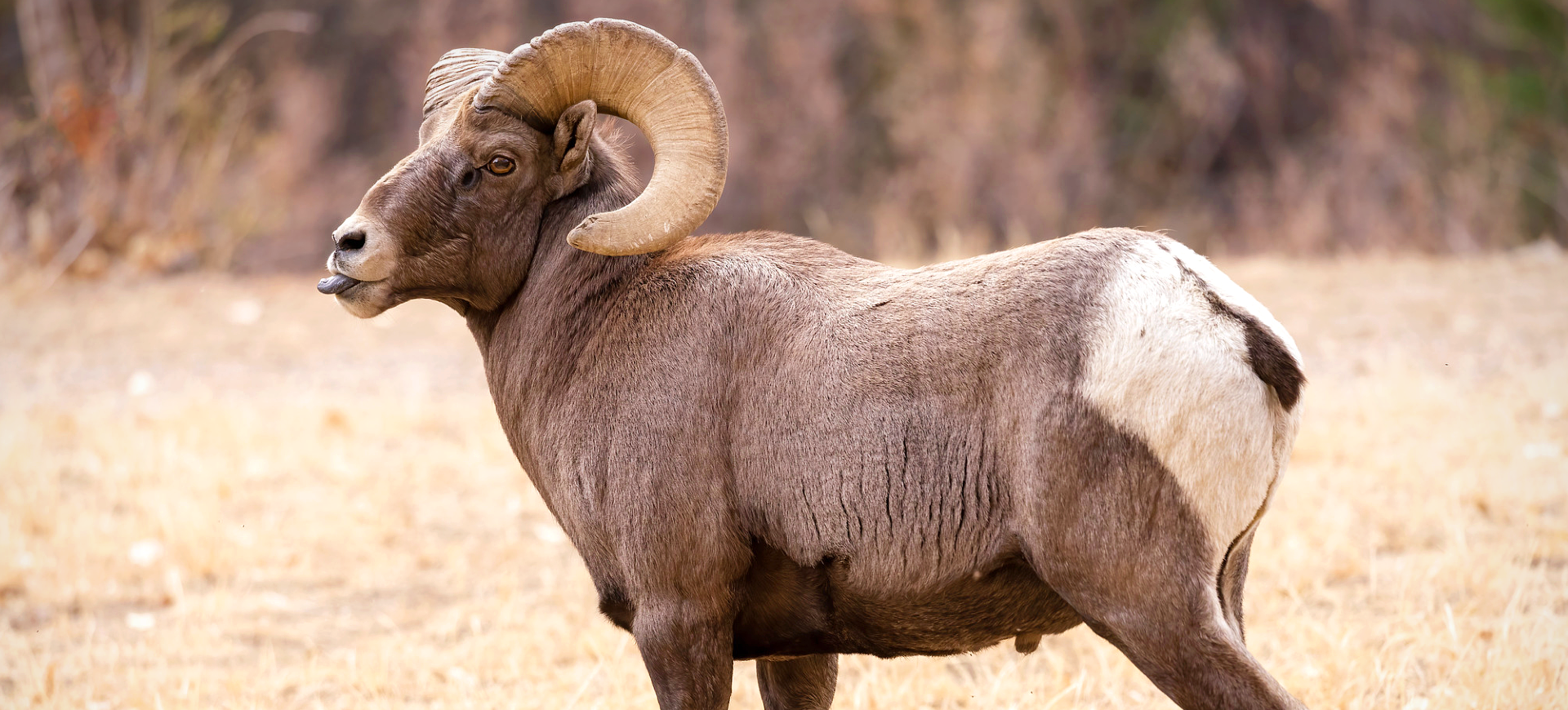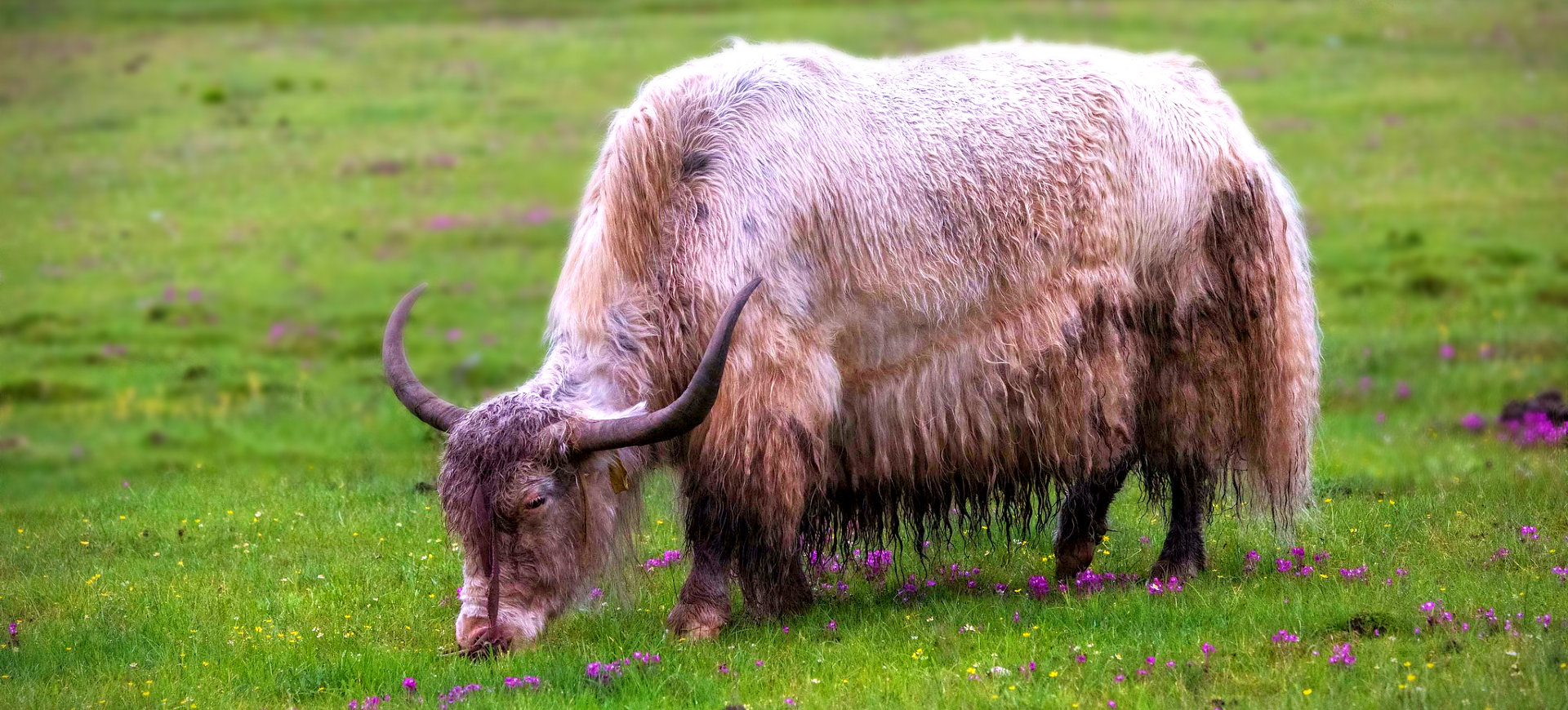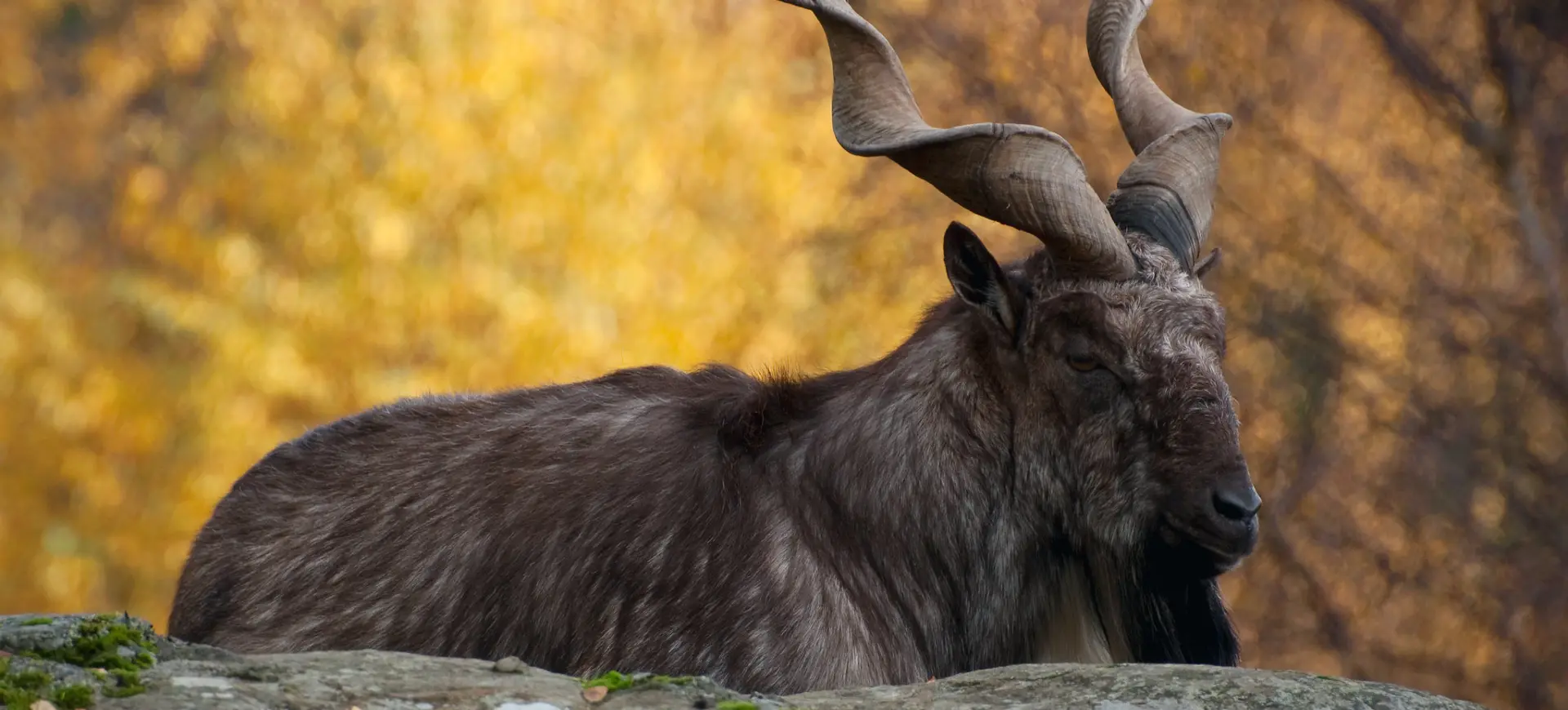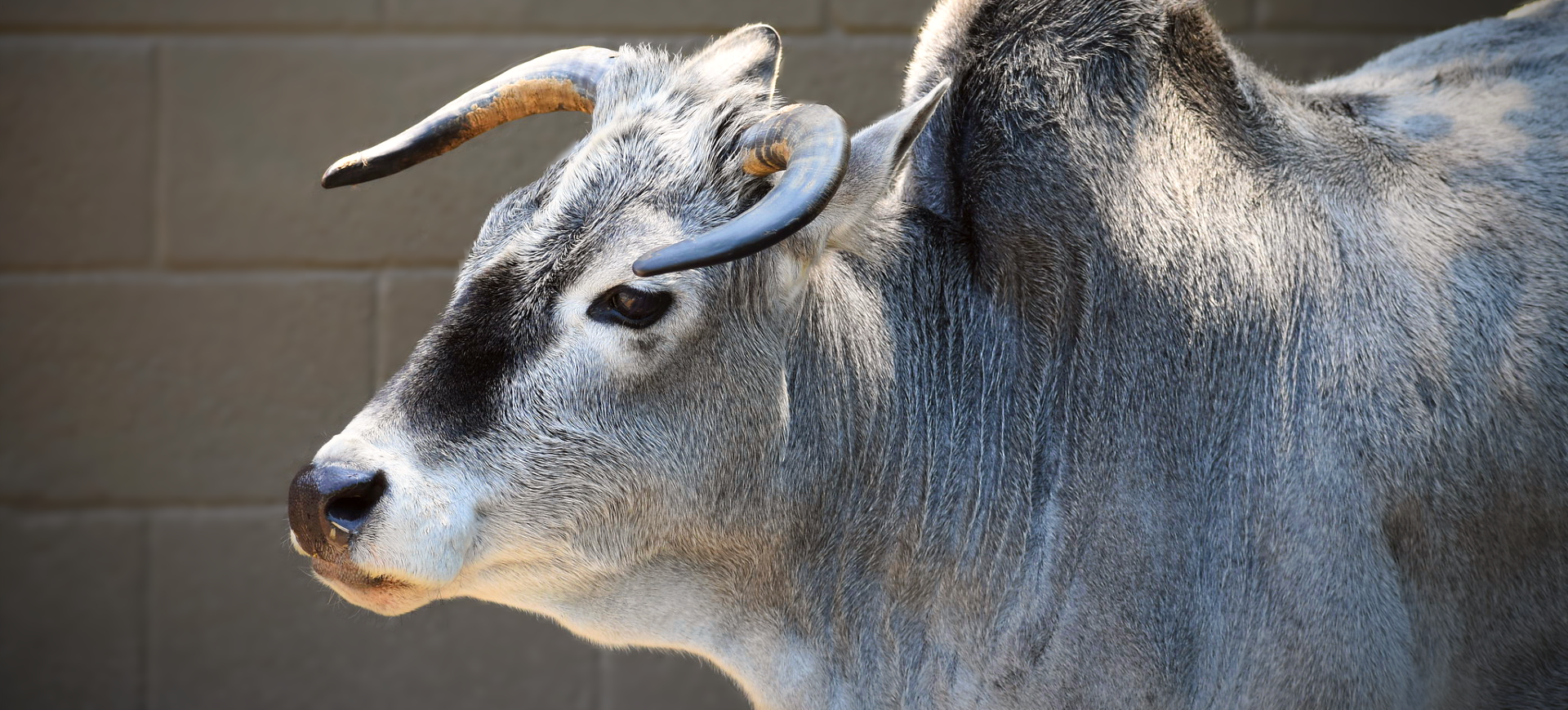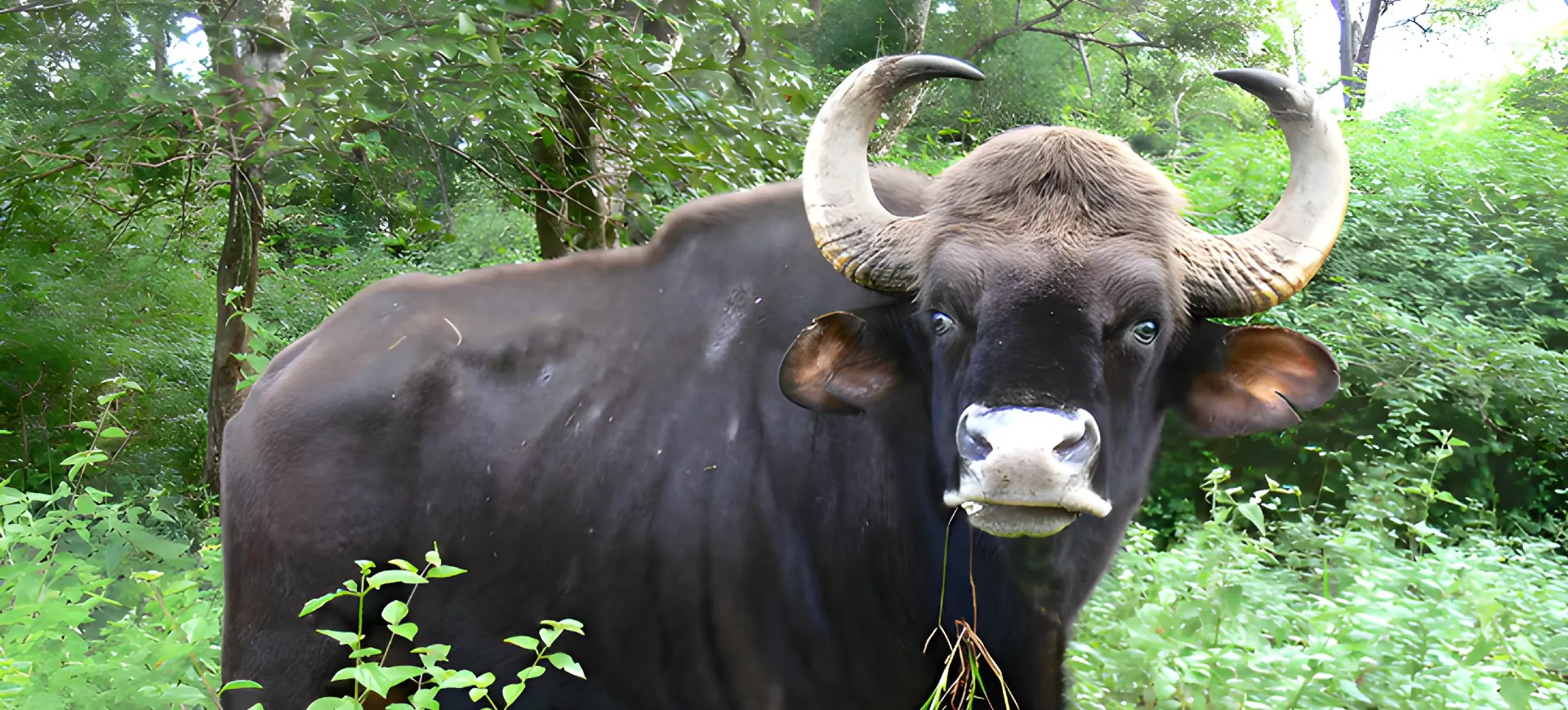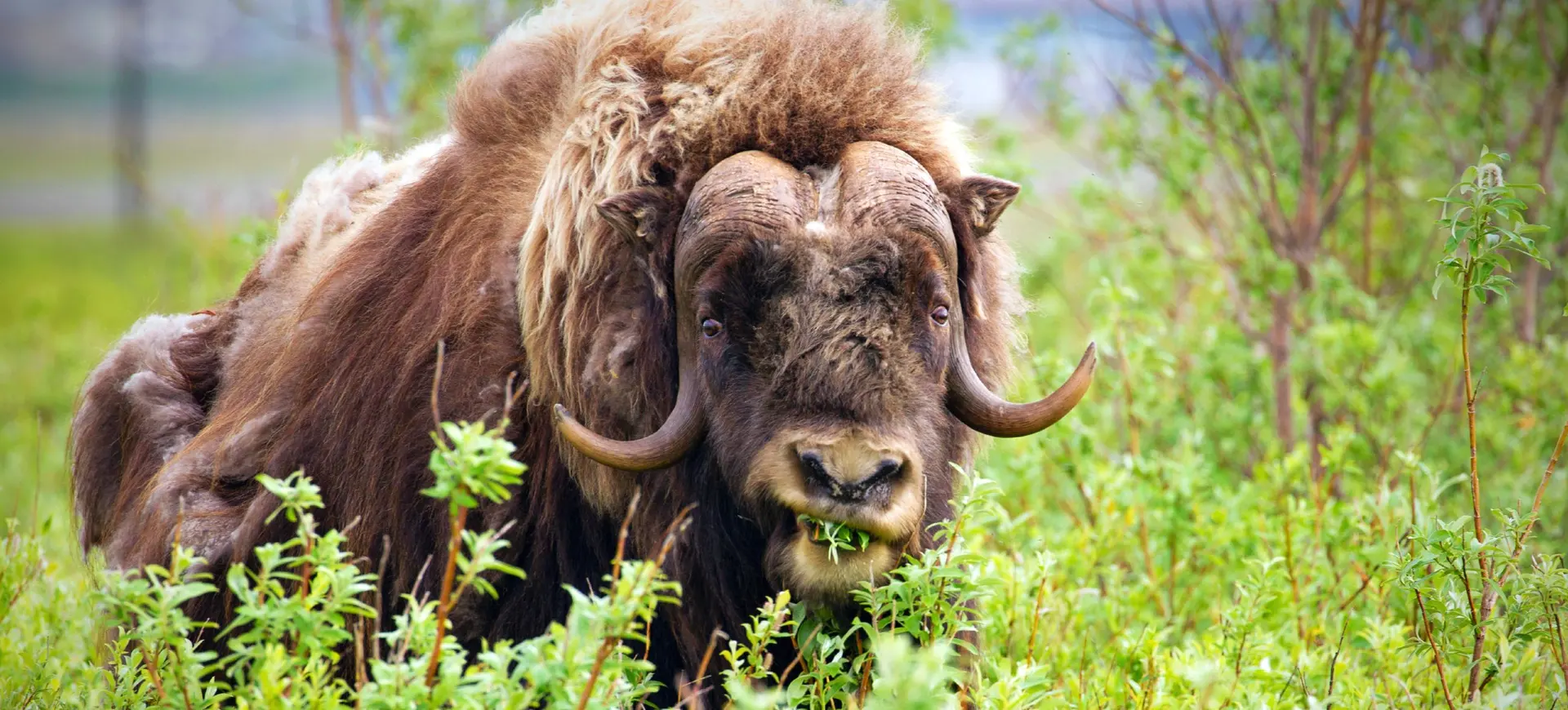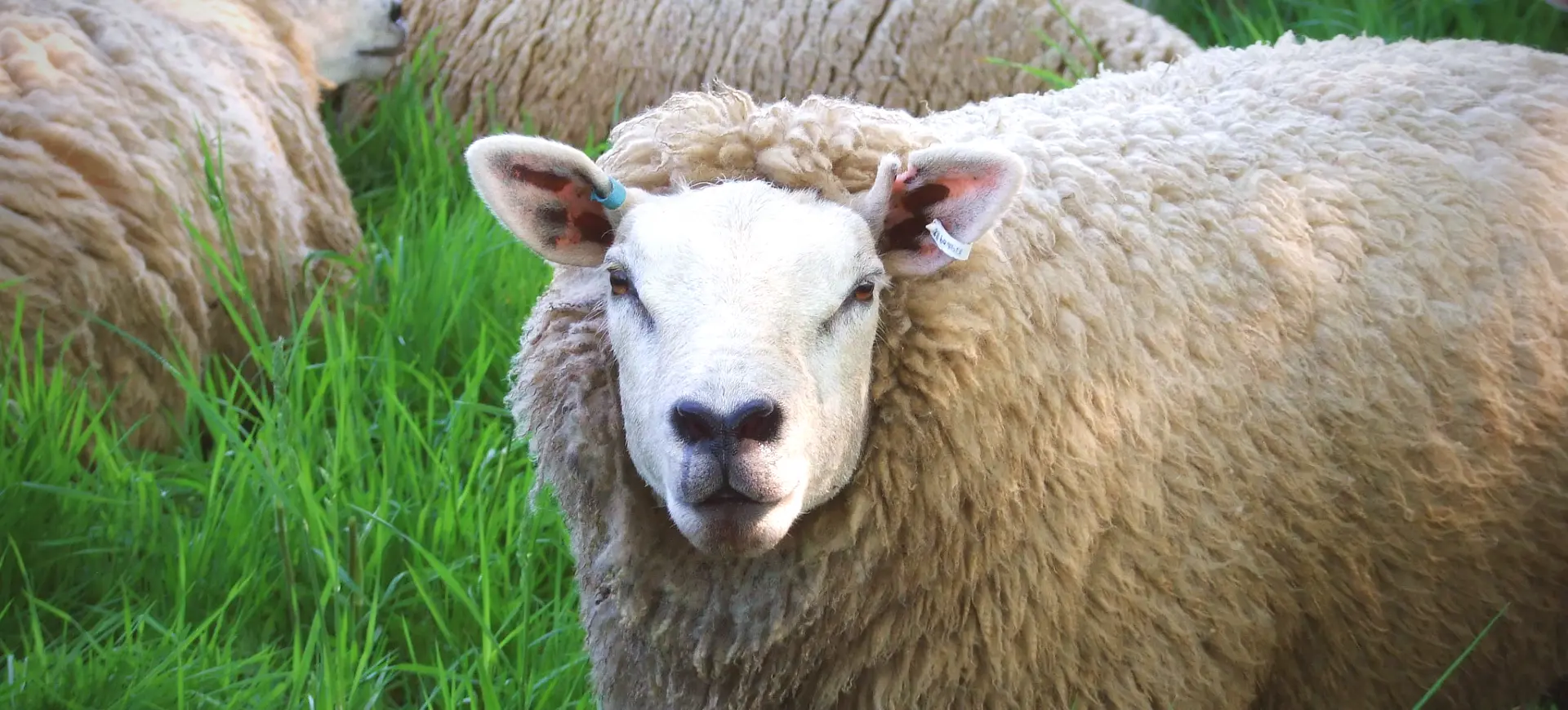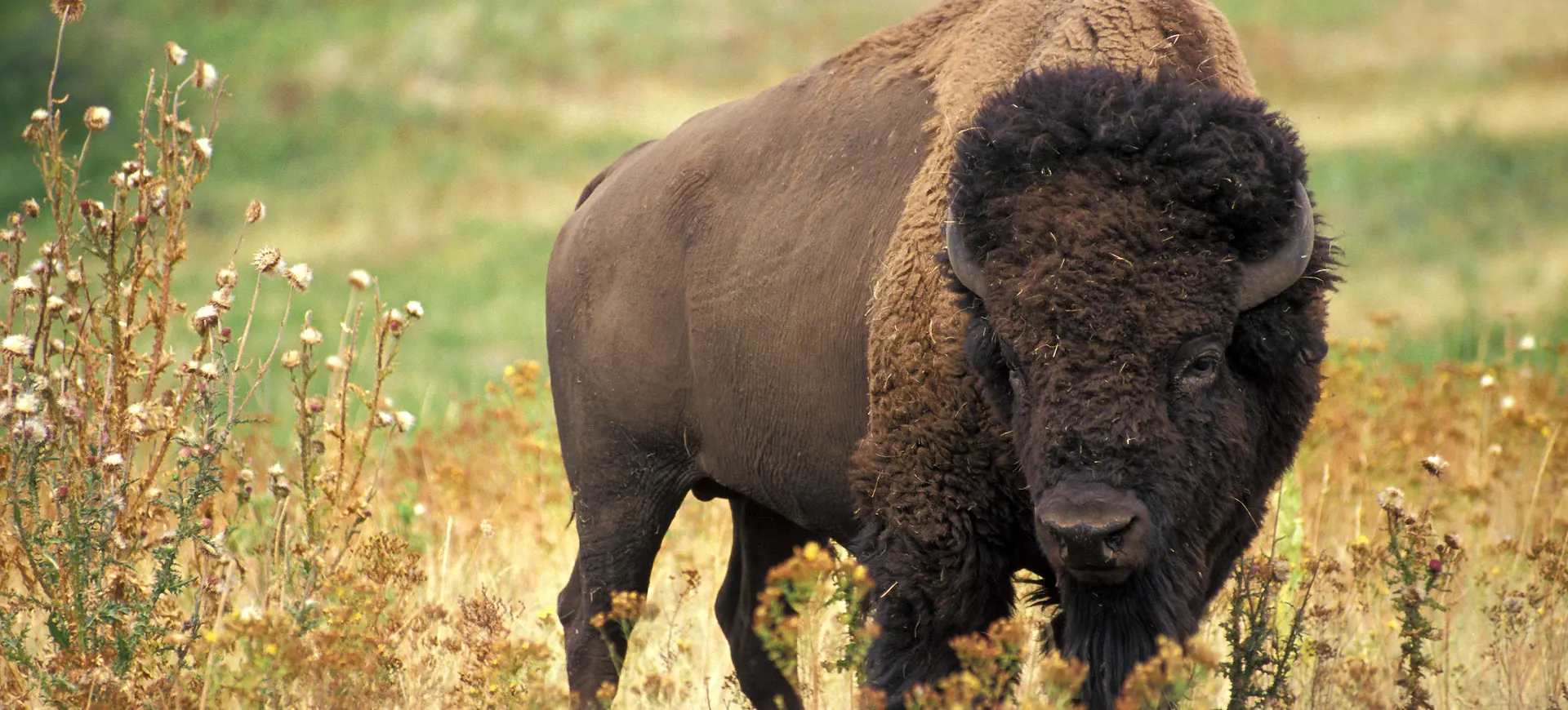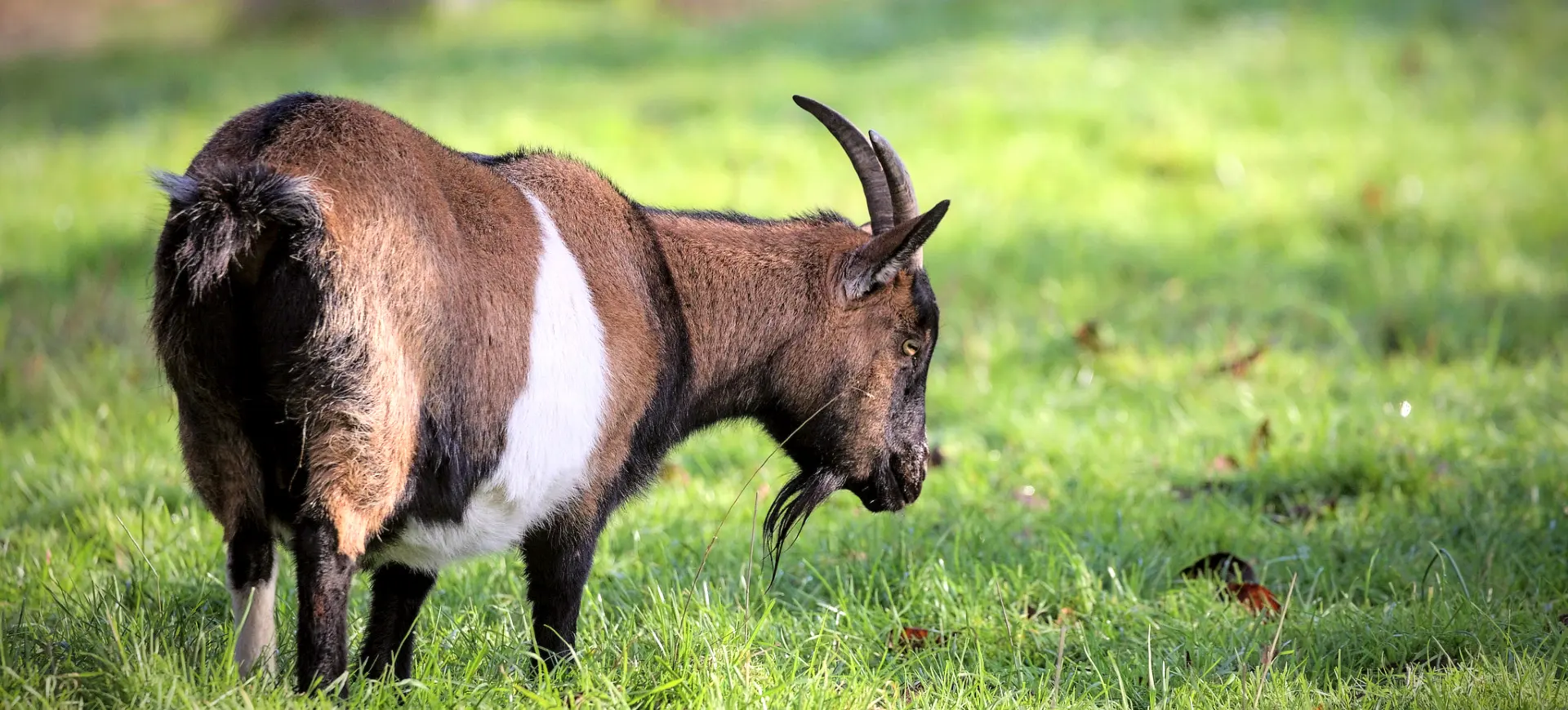Overview
The Klipspringer, Oreotragus oreotragus, is a small antelope found in the rocky terrains of eastern and southern Africa. Characterized by its remarkable agility and ability to navigate steep rocky outcrops, the Klipspringer stands out for its specialized hooves adapted for gripping and stability on rugged surfaces. This antelope has a stocky build, with a coat that varies from yellowish gray to reddish brown, providing camouflage against the rocky background of its habitat. Adults typically weigh between 11 to 18 kg (24 to 40 lbs) and have a shoulder height of about 43 to 60 cm (17 to 24 in), making them one of the smaller antelope species.
Klipspringers form monogamous pairs, each establishing a territory they defend against intruders. These territories are marked by secretions from preorbital glands near their eyes, which are used to communicate between pairs and delineate territorial boundaries. The Klipspringer’s diet mainly consists of leaves, twigs, fruits, and flowers, which they forage for among the rocks, demonstrating their selective feeding habits adapted to their arid and rocky environments.
Breeding in Klipspringers occurs throughout the year, with a gestation period of about six to seven months, resulting in the birth of a single calf. The calves are well-developed at birth and hidden in rock crevices for the first few months to protect them from predators. The social structure of Klipspringers revolves around their pair bonds, which are strong and often lifelong, highlighting the importance of these relationships in their survival strategy in the harsh and rugged landscapes they inhabit.
Taxonomy
Kingdom
Phylum
Class
Order
Family
Genus
Species
Sub Species
Type
Physical Description:
The Klipspringer is distinguished by its coarse, hollow, and brittle fur, which provides insulation against the temperature extremes of its habitat. The fur stands erect, giving the animal a slightly spikey appearance and aiding in its camouflage among the rocks. Males possess short, spiky horns about 10 to 15 cm (4 to 6 in) long, while females are usually hornless, making this one of the distinguishing features between the sexes. The animal’s unique hoof structure, with the bottom part being as hard as rubber, allows it to stand and move on the tips of its hooves, enabling precision jumping and landing on narrow ledges and steep slopes.
Their eyes are large and high on the head, providing a wide field of vision crucial for detecting predators in their rugged environment. The coloration of their coat varies with their geographical location, adapting to the specific rock and vegetation colors of their habitat for better concealment. The Klipspringer’s small size and agility make it a fascinating example of adaptation and specialization, with its entire morphology and behavior finely tuned for survival in steep, rocky terrains.

Lifespan: Wild: ~15 years || Captivity: ~20 years

Weight: Male & Female: 24-40 lbs (11-18 kg)

Length: Male & Female: 30 and 45 inches (75-115 cm)

Height: Male & Female: 17-24 inches (43-60 cm)

Top Speed: 40 mph (64 km/h)
Characteristic:
Native Habitat:
Klipspringers are adapted to live in rugged terrains. They are predominantly found in rocky outcrops and mountainous regions of eastern and southern Africa. Their distribution spans from Ethiopia and Eritrea in the north through East Africa and South Africa in the south. These habitats are characterized by steep slopes, cliffs, and rocky outcrops, providing the Klipspringer with the necessary terrain for its agile and nimble movements.
The preference for such habitats offers protection from predators through natural barriers and aligns with their specialized feeding and breeding behaviors. Klipspringers are seldom found far from rocky shelters, which they use as hiding spots and for thermoregulation during extreme weather conditions. Their habitat selection underscores the importance of specific environmental features for their survival and reproductive success, making them a key species for understanding ecological adaptation.
Climate Zones:
Biomes:
Biogeographical Realms:
Continents:
Diet:
Diet & Feeding Habits:
Klipspringers are browsers, primarily feeding on a varied diet of plants, including leaves, twigs, fruits, and flowers. Their selective feeding habits allow them to thrive in the nutrient-poor environments typical of their rocky habitats. They obtain most of their water from their food, demonstrating an adaptation to the arid regions they often inhabit. This ability to extract moisture from their diet reduces their dependence on water sources, an advantage in their dry, rocky ecosystems.
Their feeding strategy involves carefully selecting the most nutritious parts of plants, which helps them maintain their energy requirements despite the sparse vegetation available in their habitat. Klipspringers stand on their hind legs to reach higher branches, showcasing their agility and adaptability in foraging for food. The efficiency of their digestive system allows them to extract maximum nutrients from the tough, fibrous plant material they consume, further evidencing their specialized adaptation to their environment.
Mating Behavior:
Mating Description:
Klipspringers form monogamous pairs, a rare trait among antelopes, indicating a strong pair bond essential for survival and reproductive success. These pairs maintain and defend territories, using scent marking to communicate and establish boundaries. The breeding season of Klipspringers is not strictly defined, with mating occurring throughout the year, depending on the local climate and environmental conditions. This flexibility ensures that offspring are born when conditions are most favorable for survival.
Gestation lasts approximately six to seven months, culminating in the birth of a single calf, which is the norm for this species. The newborn calf is hidden in rock crevices or dense vegetation for the first few months, protecting it from predators. During this period, the calf is visited and nursed by its mother until it is strong enough to join the adult pair. This reproductive strategy, including the long-term pair bond and the careful rearing of the calf, highlights the Klipspringer’s adaptation to their challenging environment, where every offspring’s survival is crucial.
Reproduction Season:
Birth Type:
Pregnancy Duration:
Female Name:
Male Name:
Baby Name:
Social Structure Description:
Klipspringers exhibit a unique social structure centered around monogamous pair bonds, each occupying and defending a territory against intruders. These territories are essential for providing access to food, shelter, and breeding sites. The pair bond between Klipspringers is strong and often lifelong, underscoring the importance of this relationship for their survival. Within their territories, pairs communicate using a variety of vocalizations and scent markings, strengthening their bond and coordinating their activities.
The social interactions of Klipspringers, particularly between mating pairs, are crucial for maintaining the cohesion of the pair and ensuring successful reproduction. Offspring are raised within the pair’s territory, with both parents participating in their care. The territorial and pair-bonded nature of Klipspringer’s social structure is an adaptation to their habitat, where resources are patchily distributed and predation pressure is high. Understanding the social dynamics of Klipspringers provides insights into the evolutionary pressures that have shaped the behavior and ecology of this fascinating species.
Groups:
Conservation Status:
Population Trend:
While currently listed as Least Concern on the IUCN Red List, the Klipspringer faces threats from habitat loss due to agricultural expansion and human settlement. In some areas, they are also threatened by hunting for their meat and hide. Despite these challenges, Klipspringers benefit from their ability to inhabit rugged terrains, which are less susceptible to human encroachment and agricultural use. Their populations are generally stable in areas where their habitat remains intact, thanks to their adaptability and the inaccessibility of their preferred rocky environments.
Conservation measures for Klipspringers include habitat protection and anti-poaching efforts, ensuring the preservation of their natural environments and reducing illegal hunting. Protected areas are vital in maintaining stable populations by safeguarding key habitats from deforestation and development. Continued monitoring and research are essential to understanding their ecological needs and adapting conservation strategies accordingly, ensuring the long-term survival of Klipspringer populations across Africa.
Population Threats:
The primary threats to Klipspringers include habitat loss due to agricultural expansion, deforestation, and the development of human settlements. These activities reduce the available habitat and fragment populations, making it more difficult for individuals to find mates and forage for food. Additionally, Klipspringers are hunted in some regions for their meat and distinctive hide, adding to the pressures on their populations.
Climate change poses a long-term threat by potentially altering the ecosystems Klipspringers inhabit, affecting the availability of food and water resources. Klipspringers’ resilience to these threats is closely linked to their ability to access and utilize the rugged, rocky terrains that provide natural protection from many human impacts. Conservation strategies that address these threats are crucial for ensuring the species’ survival, focusing on habitat preservation, anti-poaching measures, and climate change mitigation efforts.
Conservation Efforts:
Conservation efforts for Klipspringers are focused on habitat protection and the establishment of protected areas that encompass their natural habitats. These efforts are crucial for preserving the rocky terrains and associated vegetation that Klipspringers depend on for survival. Anti-poaching measures, including increased surveillance and stricter enforcement of wildlife protection laws, are also important for reducing the impact of hunting on their populations.
Community-based conservation initiatives involving local communities in protecting and monitoring klipspringer habitats can be particularly effective. These programs can provide alternative livelihoods that reduce hunting and habitat destruction dependence. Research into the ecology and behavior of Klipspringers is essential for informing conservation strategies and ensuring that efforts are tailored to the species’ specific needs. Using habitat protection, community engagement, and research, conservationists aim to secure a stable future for Klipspringers across their range.
Additional Resources:
Fun Facts
- Klipspringers are sometimes called “rock jumpers” due to their incredible agility and ability to leap between rocks.
- Their hooves are uniquely adapted, with the bottom part being rounded and hard, almost like rubber, allowing them to stand on the very tips.
- Klipspringers have a special gland in front of their eyes, which they use to mark their territory and communicate with their mates.
- Unlike many other antelopes, Klipspringers do not need to drink water regularly, as they obtain sufficient moisture from their diet.
- “Klipspringer” is Afrikaans for “rock jumper,” which accurately describes their remarkable jumping abilities and preferred rocky habitat.
- Their coat’s hollow fur provides excellent insulation, protecting them from the temperature extremes of their environment.
- Klipspringers are one of the few antelope species that form monogamous pairs, a rare trait in the animal kingdom.
- The calves are born with a soft, woolly coat that changes to the adult’s coarse and brittle fur as they mature.
- Despite their small size, Klipspringers are known for their courage, often standing against predators.
- They have a distinctive posture when standing on rocks, with all four hooves close together, which helps them maintain balance on narrow surfaces.






